Forums
- Forums
- Axis And Allies Forum
- General Discussion
- Aviation News
Aviation News
Post a reply
- Go to Previous topic
- Go to Next topic
- Go to Welcome
- Go to Introduce Yourself
- Go to General Discussion
- Go to Screenshots, Images and Videos
- Go to Off topic
- Go to Works in Progress
- Go to Skinning Tips / Tutorials
- Go to Skin Requests
- Go to IJAAF Library
- Go to Luftwaffe Library
- Go to RAF Library
- Go to USAAF / USN Library
- Go to Misc Library
- Go to The Ops Room
- Go to Made in Germany
- Go to Campaigns and Missions
- Go to Works in Progress
- Go to Juri's Air-Raid Shelter
- Go to Campaigns and Missions
- Go to Works in Progress
- Go to Skinpacks
- Go to External Projects Discussion
- Go to Books & Resources
-
10 years ago
 Main AdminA No 3 Squadron F/A-18A Hornet takes off from RAAF Base Townsville in support of Exercise Black Dagger.
Main AdminA No 3 Squadron F/A-18A Hornet takes off from RAAF Base Townsville in support of Exercise Black Dagger.
Australian Army and Royal Australian Air Force personnel and aircraft from Townsville are currently conducting Exercise Black Dagger 2015 in the area around RAAF Base Townsville in far north Queensland.
Exercise Black Dagger, conducted from 12-30 October 2015, is the culminating activity for the Joint Terminal Attack Controller (JTAC) course, designed to produce combat-ready military personnel capable of directing combat aircraft to support troops on the ground.
The exercise will further enhance the Australian Defence Force?s interoperability and military cooperation with our coalition partners.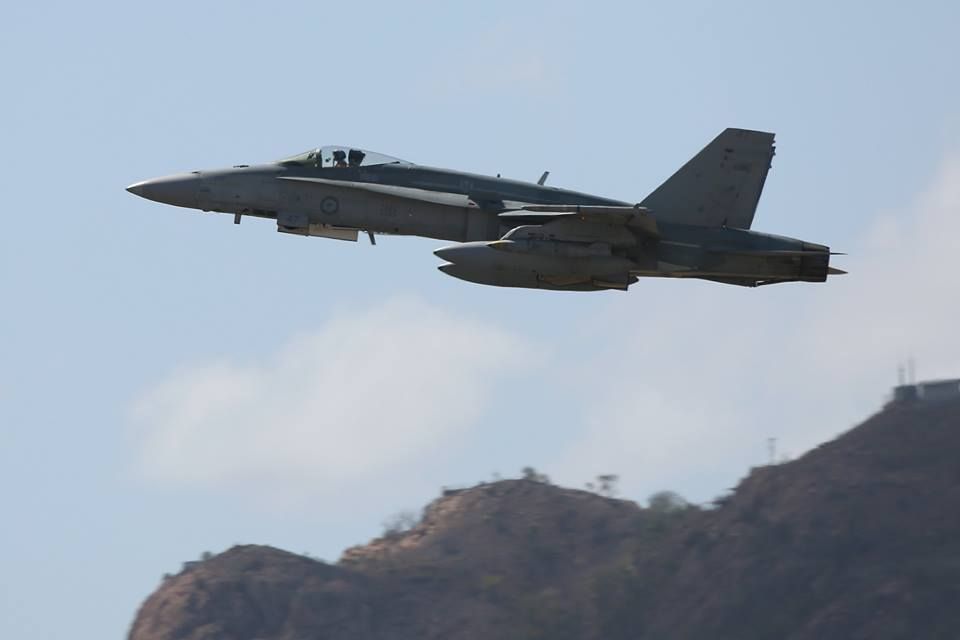
An Australian Regular Army ARH Tiger Helicopter conducts Close Air Support during Exercise BLACK DAGGER in Townsville.
Exercise Black Dagger is the culmination of Number 55 Joint Terminal Attack Controller (JTAC) course designed to produce combat ready JTAC qualified personnel.
Exercise Black Dagger is a field training exercise held at RAAF Base Townsville and surrounding airspace over the period 12-30 October 2015.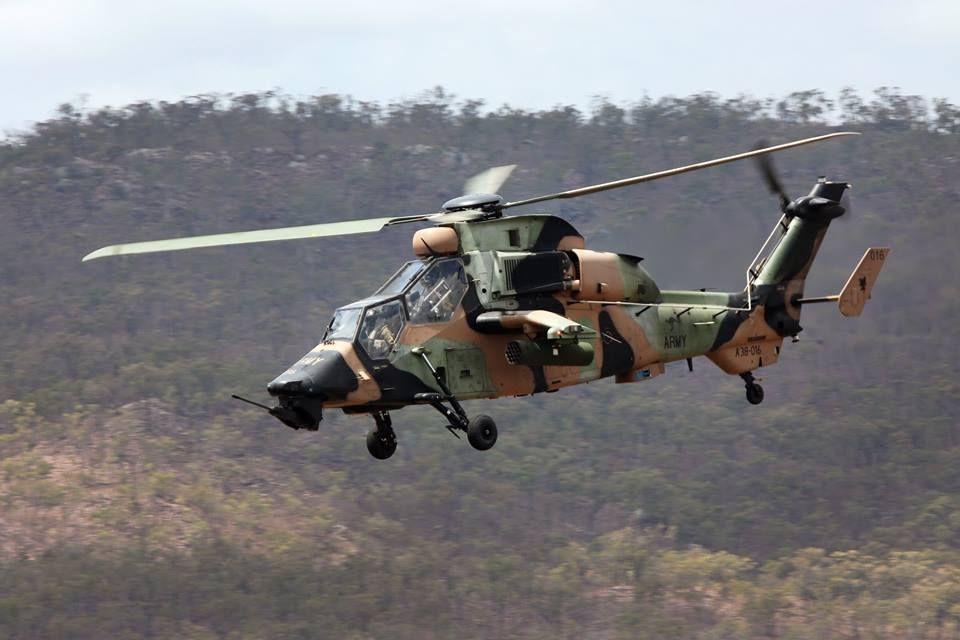
Avionics Technician, Leading Aircraftman Malcolm Mittra conducts the last inspection on a No 3 Squadron F/A-18A Hornet before it takes off from RAAF Base Townsville in support of Exercise Black Dagger.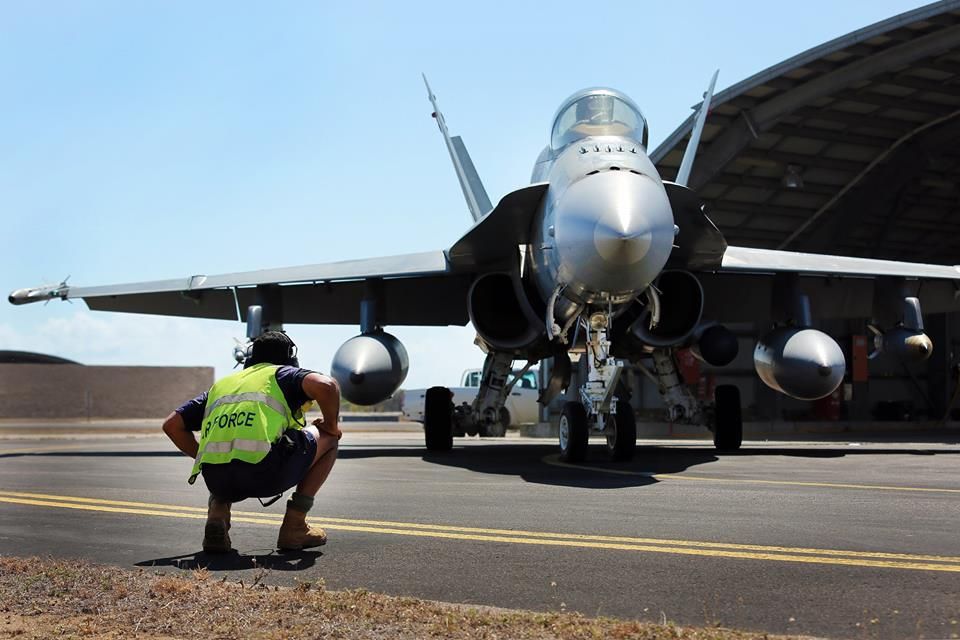
Three CF-188 Hornet fighter jets sit outside open hangers, during Exercise VIGILANT SHIELD 16 NORAD FTX in Iqaluit, Nunavut on October 18, 2015.
Photo: MCpl Pat Blanchard.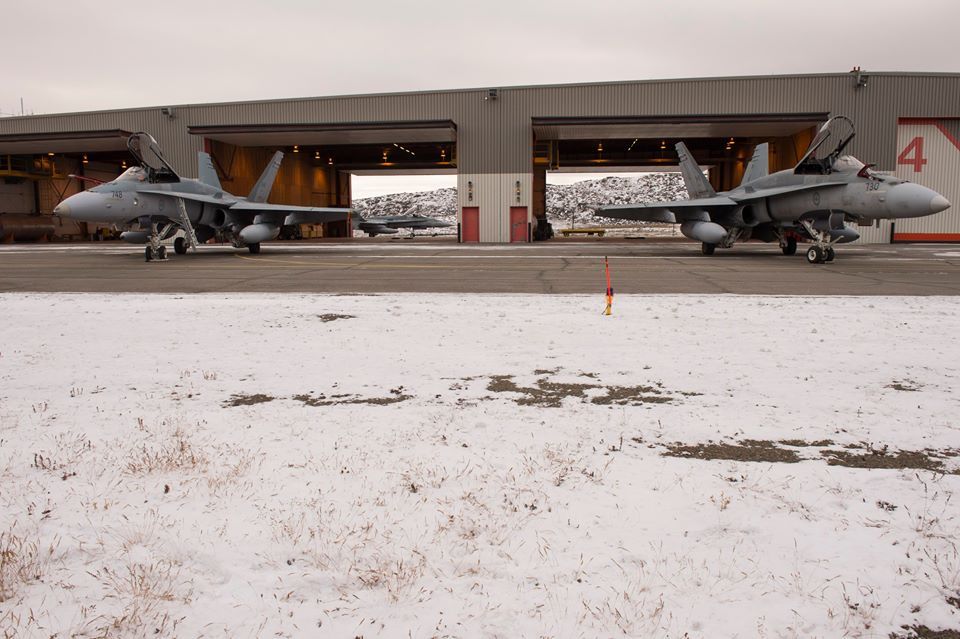
United States Air National Guard Maj. Jonathan Burd, 194th Fighter Squadron pilot, flies a United States Air Force F-15C Eagle from the 144th Fighter Wing, out of Fresno, Calif., participating in Exercise Vigilant Shield 16 over the High Arctic Oct. 22, 2015. From Oct. 15-26, 2015, approximately 700 members from the Canadian Armed Forces, the United States Air Force, United States Navy and the United States Air National Guard are deploying to Iqaluit, Nunavut, and 5 Wing Goose Bay, Newfoundland, Labrador for Exercise Vigilant 16. (U.S. Air National Guard photo's by Staff Sgt. Christian Jadot/released)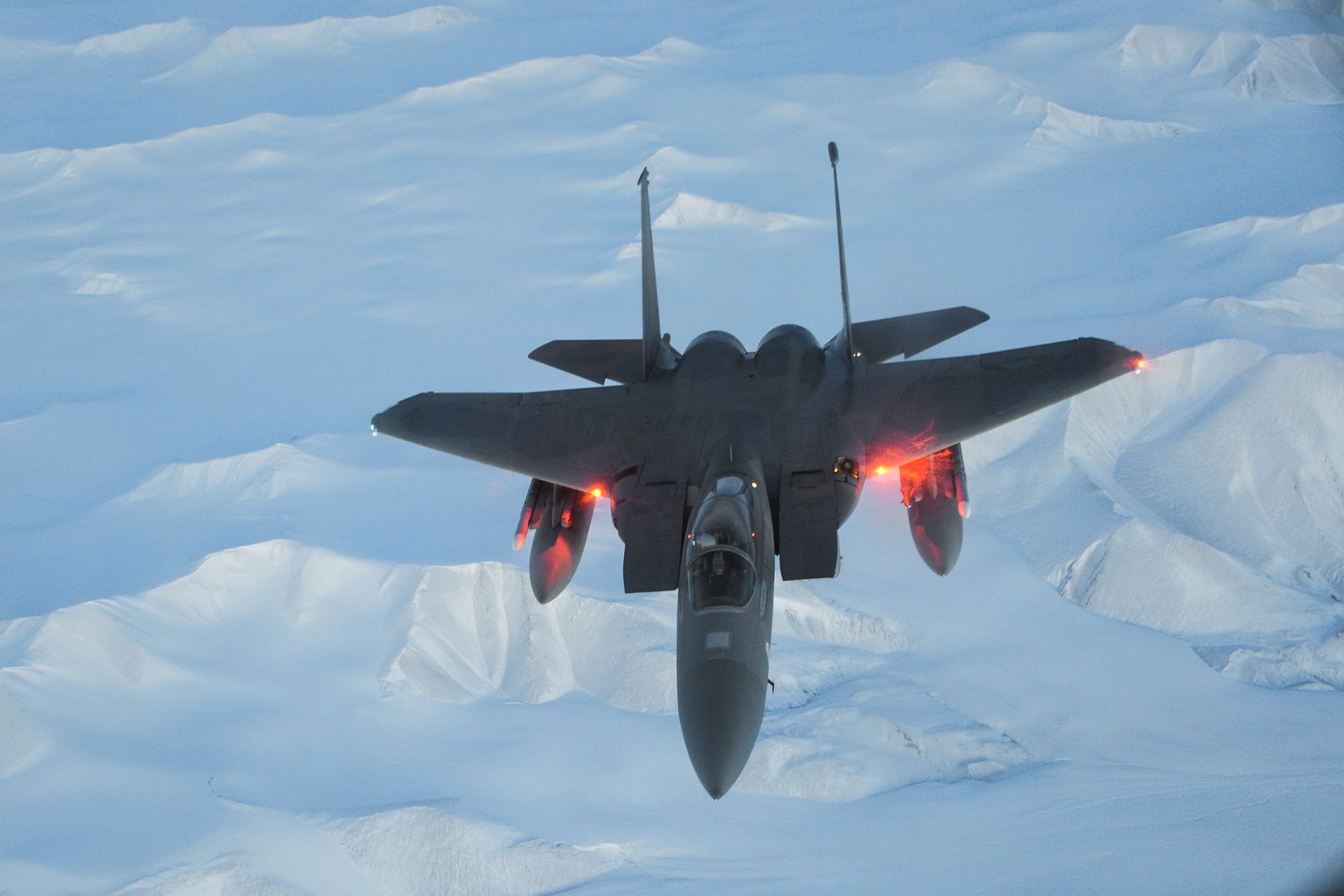
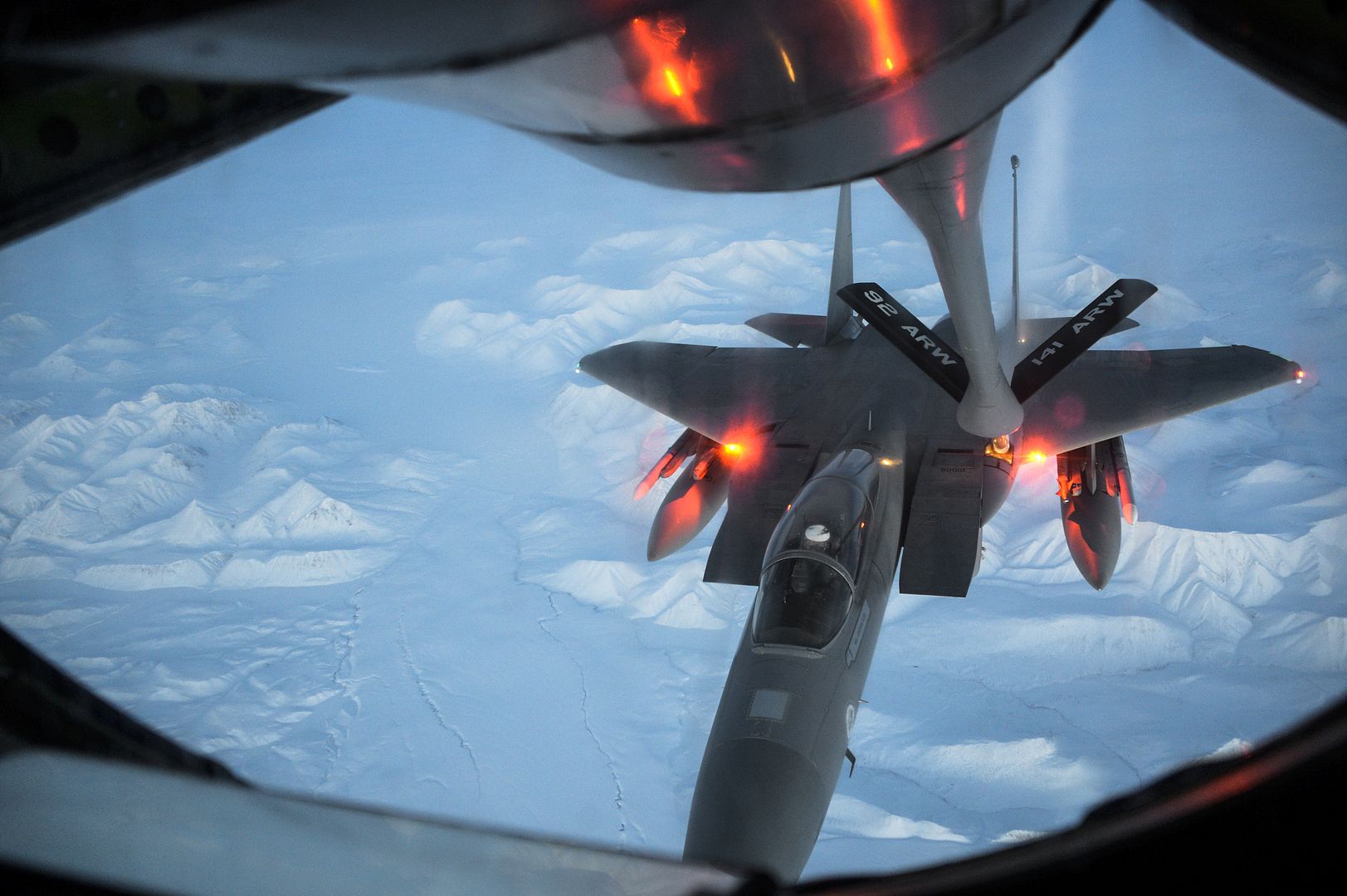
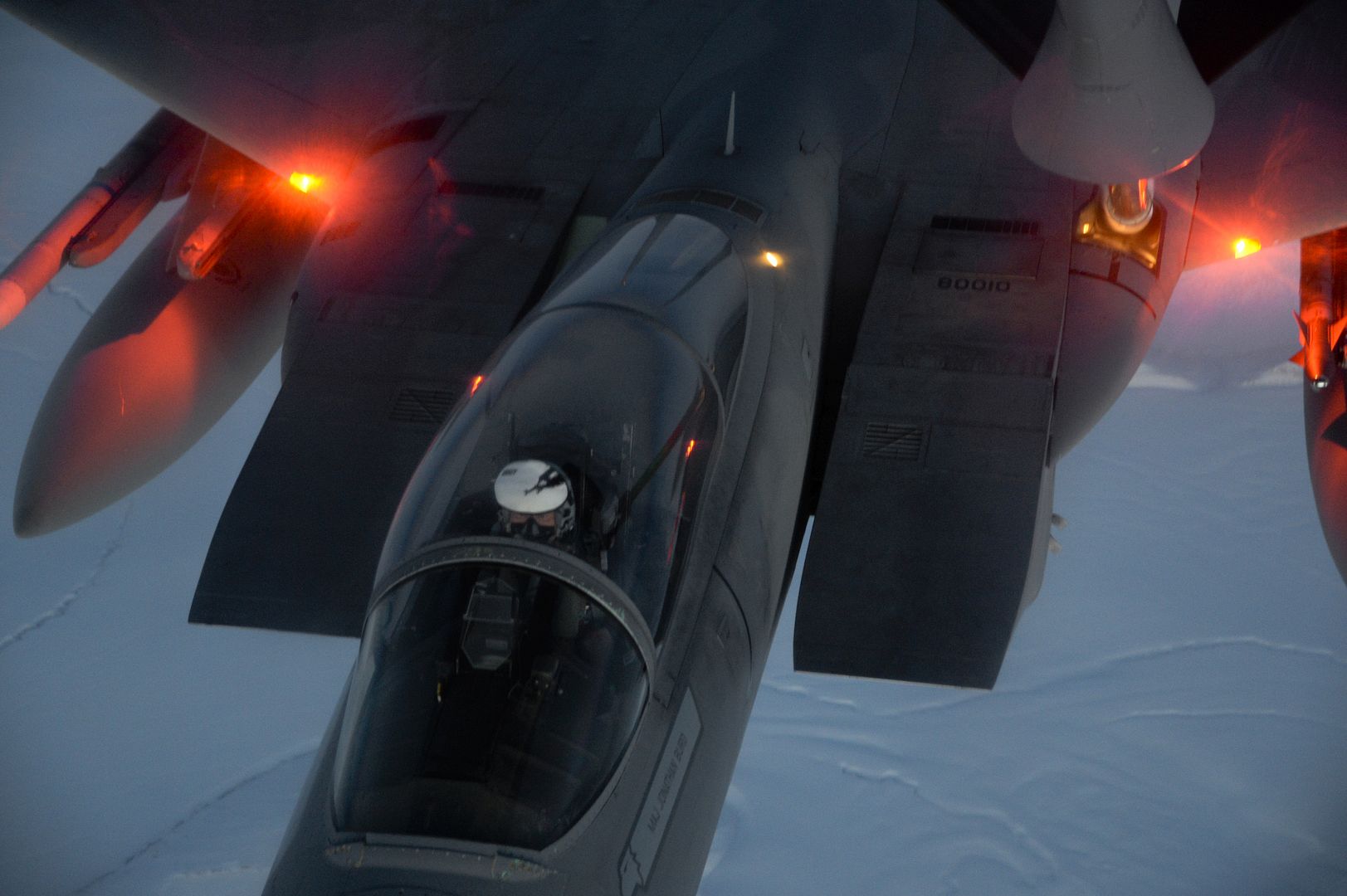
PACIFIC OCEAN (Oct. 26, 2015) - An MH-60S Sea Hawk assigned to the Chargers of Helicopter Sea Combat Squadron (HSC) 14 is chocked and chained to USS John C. Stennis' (CVN 74) flight deck. Stennis' crew is currently conducting fleet replacement squadron carrier qualifications. (U.S. Navy photo by Mass Communication Specialist Seaman Apprentice Weston A. Mohr/ Released)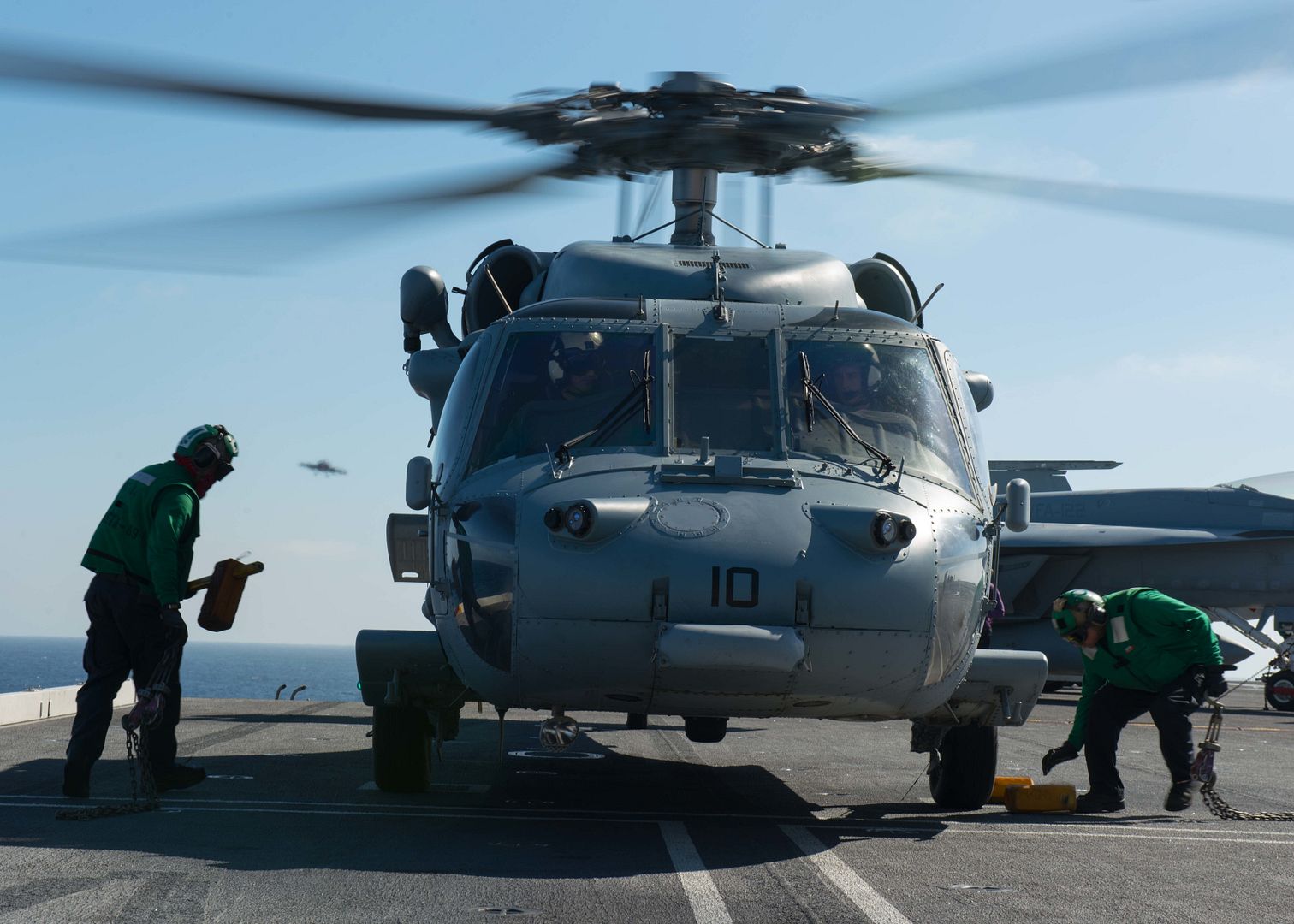
-
10 years ago
 Main AdminThe Royal Air Force (RAF) A400M Atlas transport aircraft visited Japan during 23-25 October 2015. The aircraft landed at Miho Base (Tottori prefecture) of the Japanese Air Self Defence Force (JASDF). Crew from 70 Squadron and 24 Squadron based in RAF Brize Norton met with counterparts in the JASDF 403 Squadron of the 3rd Tactical Airlift Wing. This was the first time for an RAF aircraft to land in a JASDF base.
Main AdminThe Royal Air Force (RAF) A400M Atlas transport aircraft visited Japan during 23-25 October 2015. The aircraft landed at Miho Base (Tottori prefecture) of the Japanese Air Self Defence Force (JASDF). Crew from 70 Squadron and 24 Squadron based in RAF Brize Norton met with counterparts in the JASDF 403 Squadron of the 3rd Tactical Airlift Wing. This was the first time for an RAF aircraft to land in a JASDF base.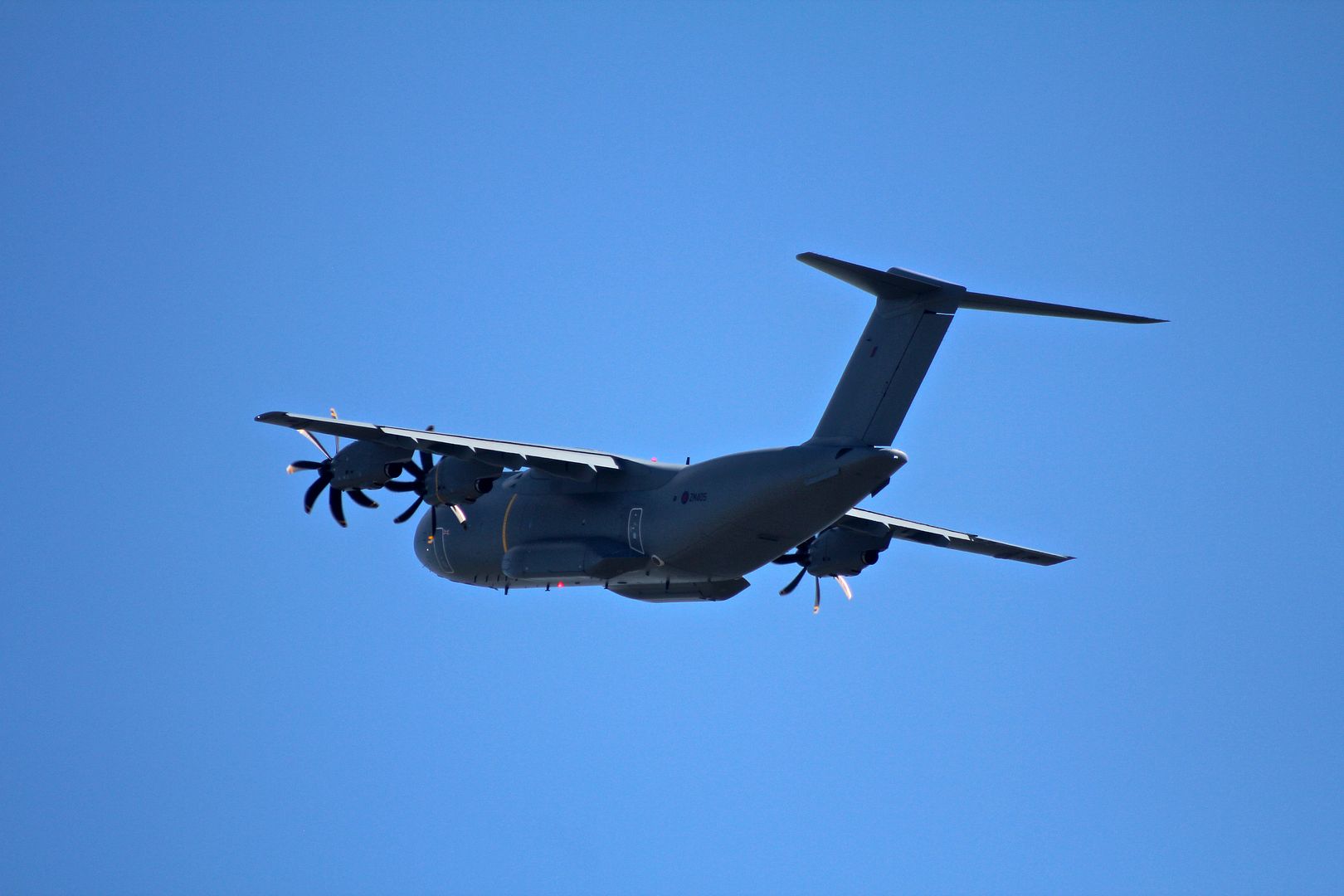
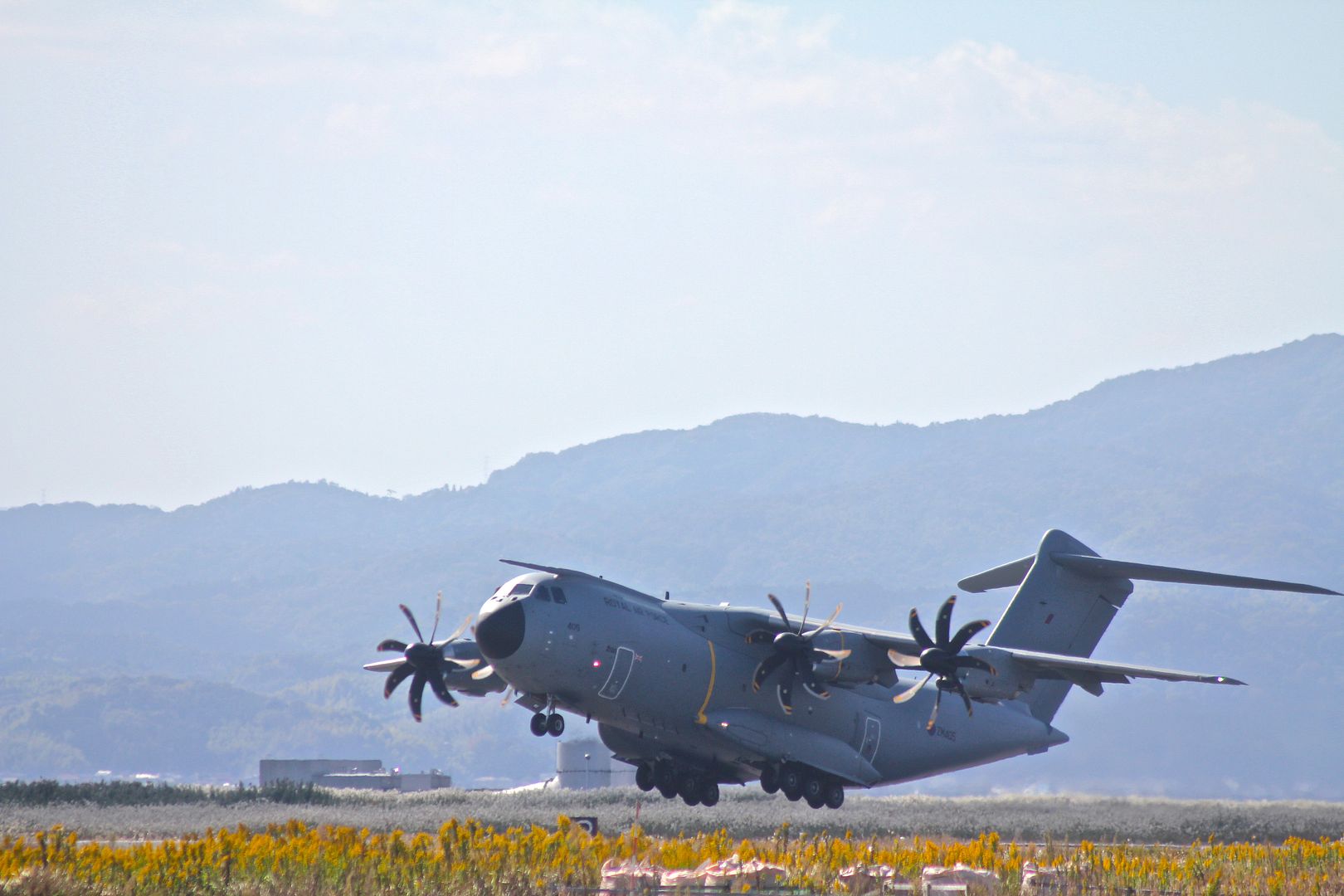
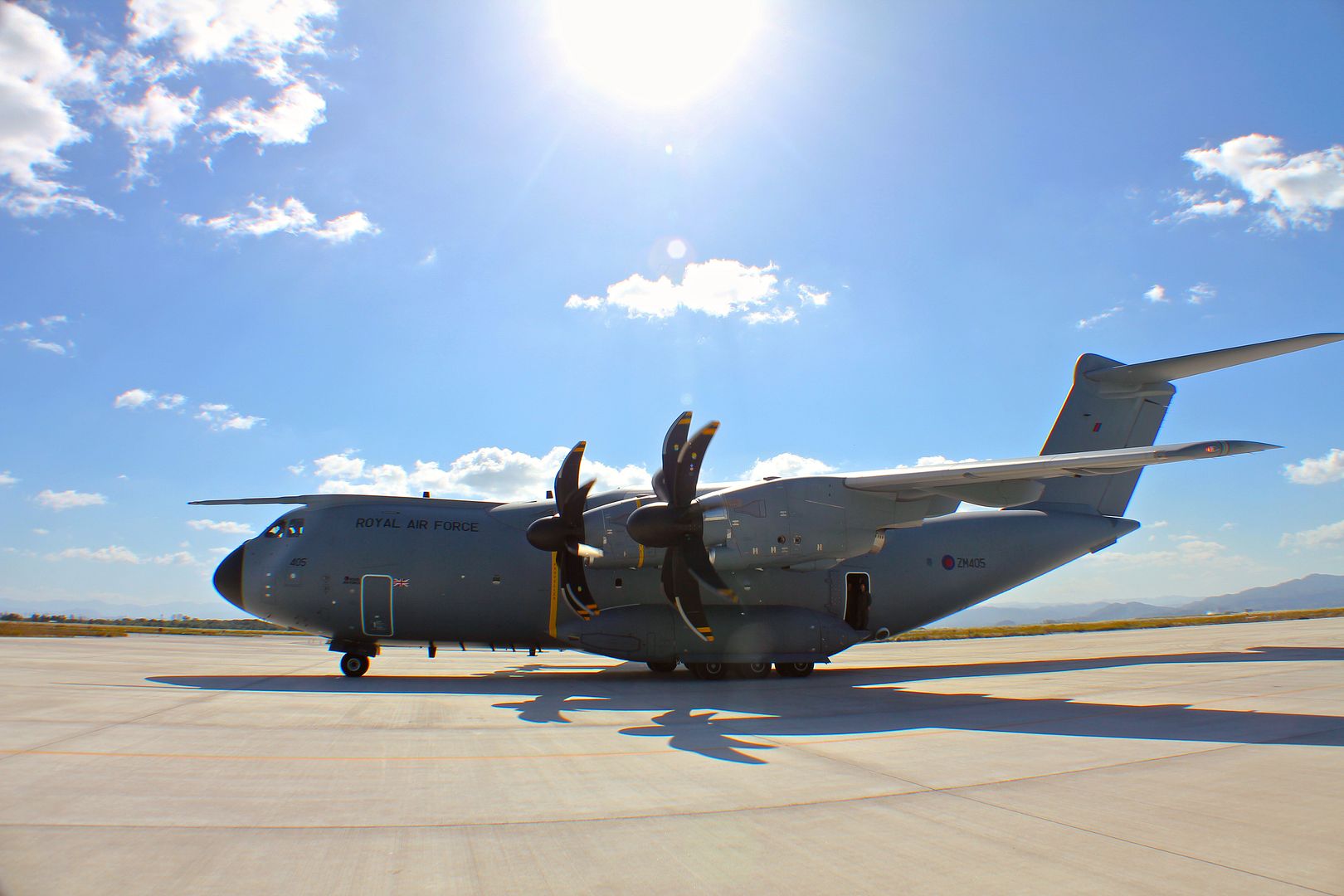
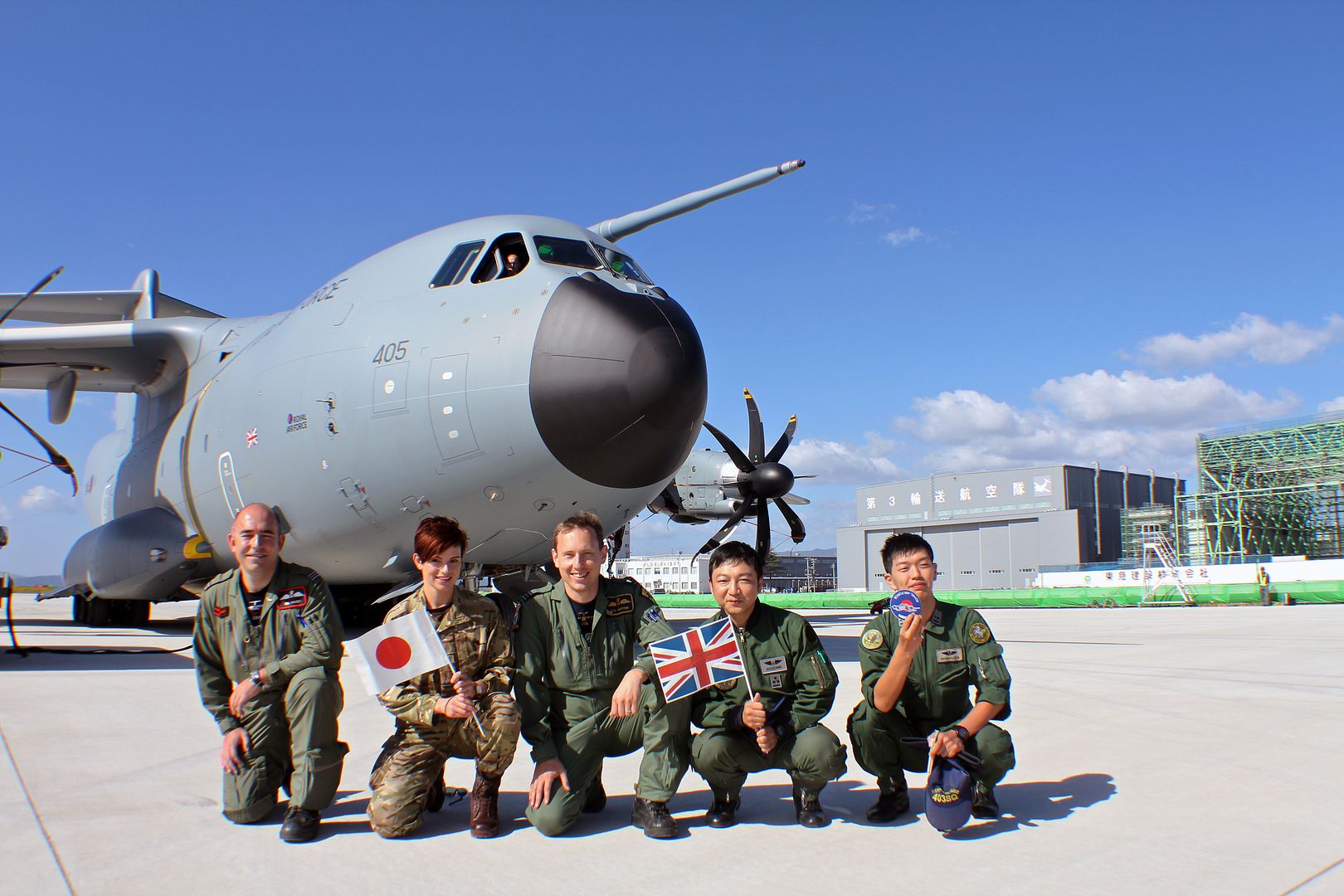
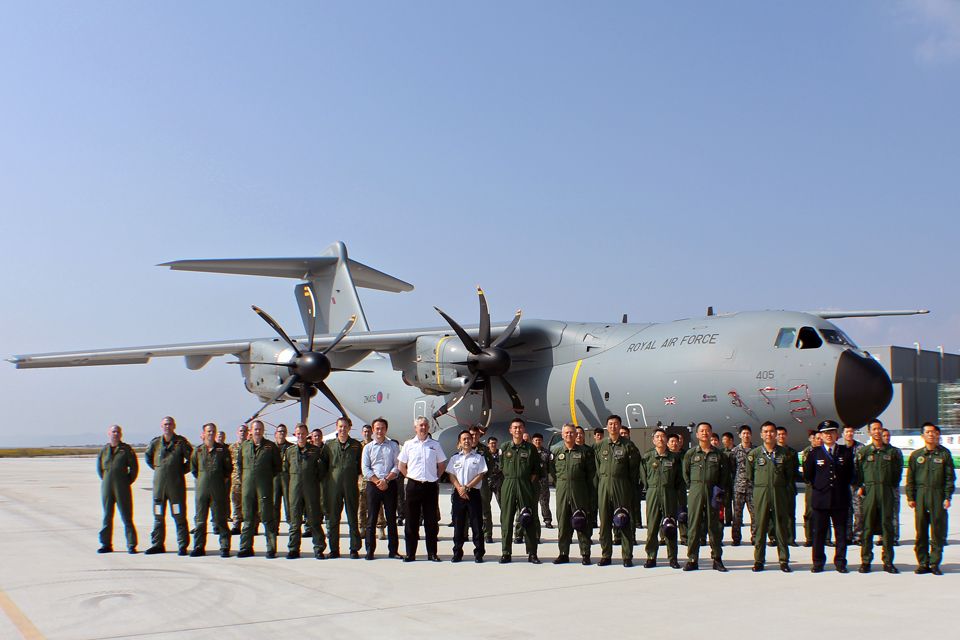
First KC 30A boom refueling with an E 7A over Iraq
The U.S. Air Force Aerial Demonstration Squadron 'Thunderbirds' practice performing F-16 acrobatic maneuvers Oct. 26, 2015, at Joint Base San Antonio-Randolph, Texas. The Thunderbirds team members arrived in preparation for the 2015 JBSA-Randolph Air Show and Open House to be held Oct. 31 and Nov. 1. Air shows allow the Air Force to display the capabilities of our aircraft to the American taxpayer through aerial demonstrations and static displays and allowing attendees to get up close and personal to see some of the equipment and aircraft used by the U.S. military today. (U.S. Air Force photo by Johnny Saldivar/Released)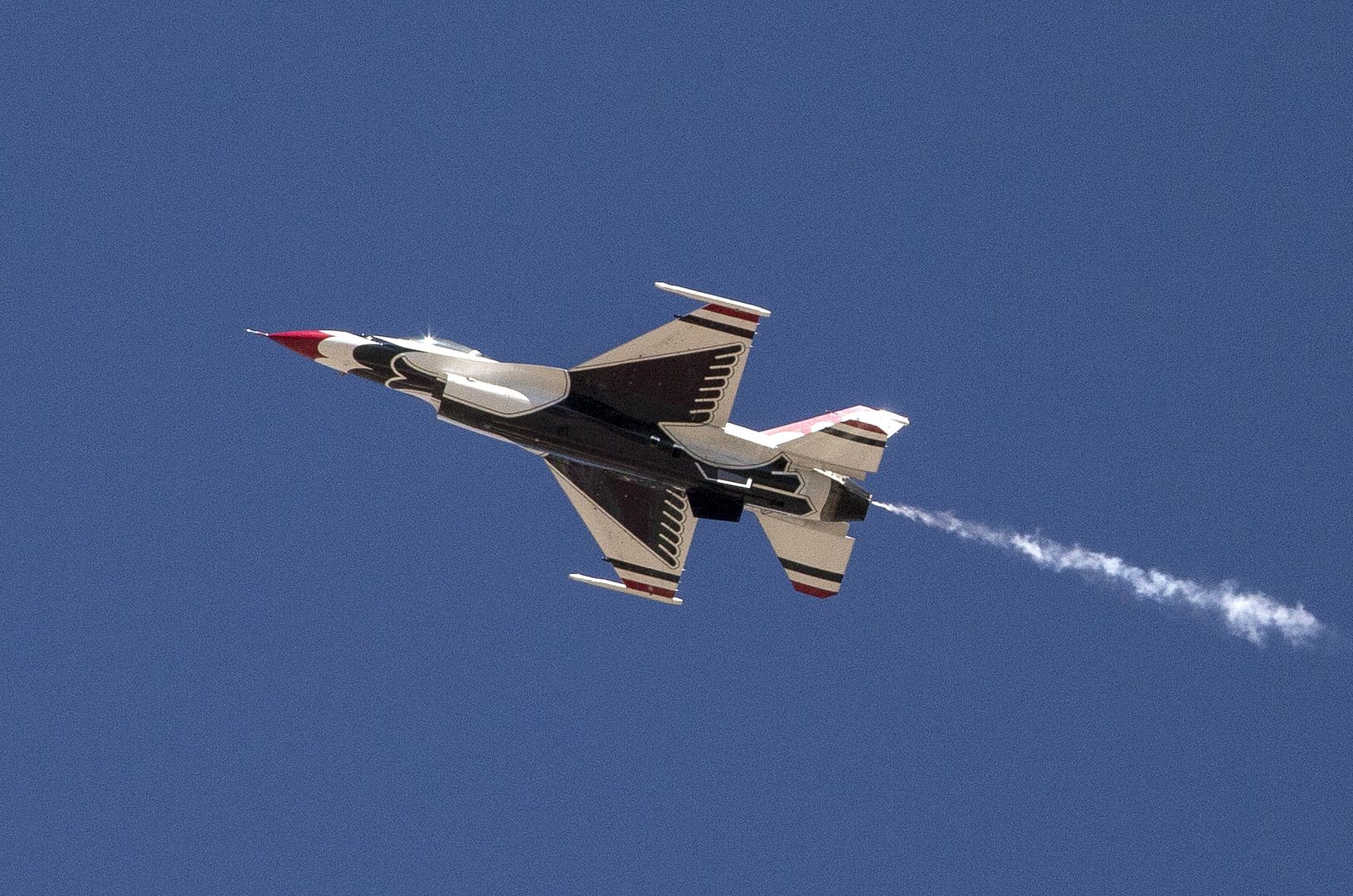
PACIFIC OCEAN (Oct. 27, 2015) An F/A-18C Hornet from the "Blue Blasters" of Strike Fighter Squadron (VFA) 334 prepares to launch from the flight deck of aircraft carrier USS George Washington (CVN 73). Washington is currently deployed as a part of Southern Seas 2015. The eighth deployment of its kind, Southern Seas 2015 seeks to enhance interoperability, increase regional stability, and build and maintain regional relationships with countries throughout the region through joint multinational and interagency exchanges and cooperation. (U.S. Navy photo by Mass Communication Specialist Seaman Kiana A. Raines/Released)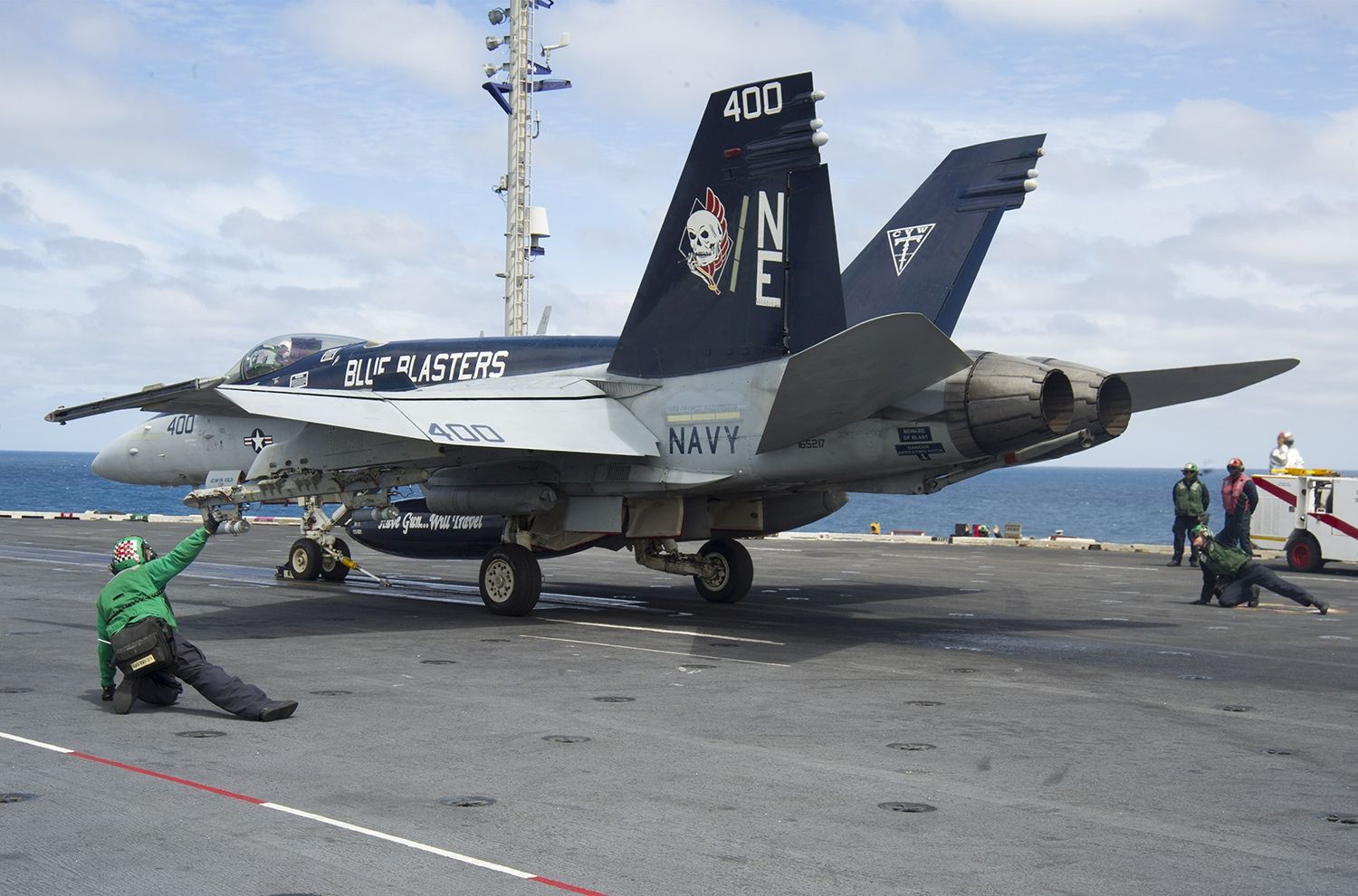
DOGANBEY, Turkey (Oct. 27, 2015) A U.S. Marine MV-22B Osprey, assigned to Marine Medium Tiltrotor Squadron 162 (Reinforced), 26th Marine Expeditionary Unit, lands during a joint amphibious assault as part of exercise Egemen 2015 in Doganbey, Turkey, Oct. 27. Egemen is a Turkish-led and hosted amphibious exercise designed to increase tactical proficiencies and interoperability among participants. The 26th Marine Expeditionary Unit is deployed to the 6th fleet area of in support of U.S. national security interests in Europe. (U.S. Marine Corps photo by Gunnery Sgt. Andrew D. Pendracki/ Released)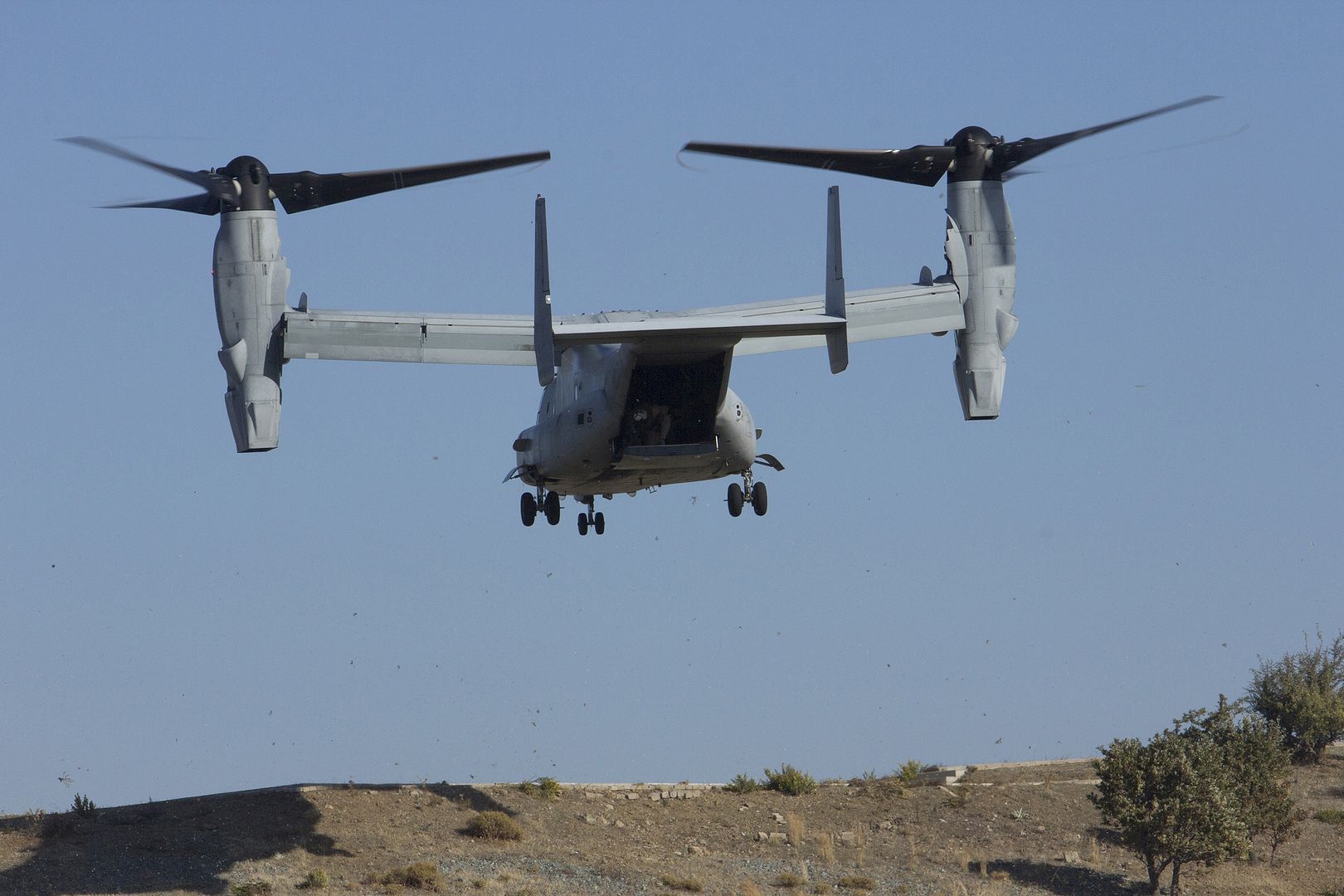
US Air Force Selects Northrop Grumman as Partner on Long-Range Strike Bomber
FALLS CHURCH, Va., Oct. 27, 2015 (GLOBE NEWSWIRE) -- The U.S. Air Force has selected Northrop Grumman Corporation (NYSE:NOC) to deliver the nation's new Long-Range Strike Bomber (LRS-B). This selection continues the company's 35-year partnership with the Air Force in providing the world's most advanced long-range strike systems.
"The Air Force has made the right decision for our nation's security," said Wes Bush, chairman, chief executive officer and president, Northrop Grumman. "As the company that developed and delivered the B-2 Spirit stealth bomber, we look forward to providing the Air Force with a highly-capable and affordable next-generation Long-Range Strike Bomber.
"Our team has the resources in place to execute this important program, and we're ready to get to work," Bush added.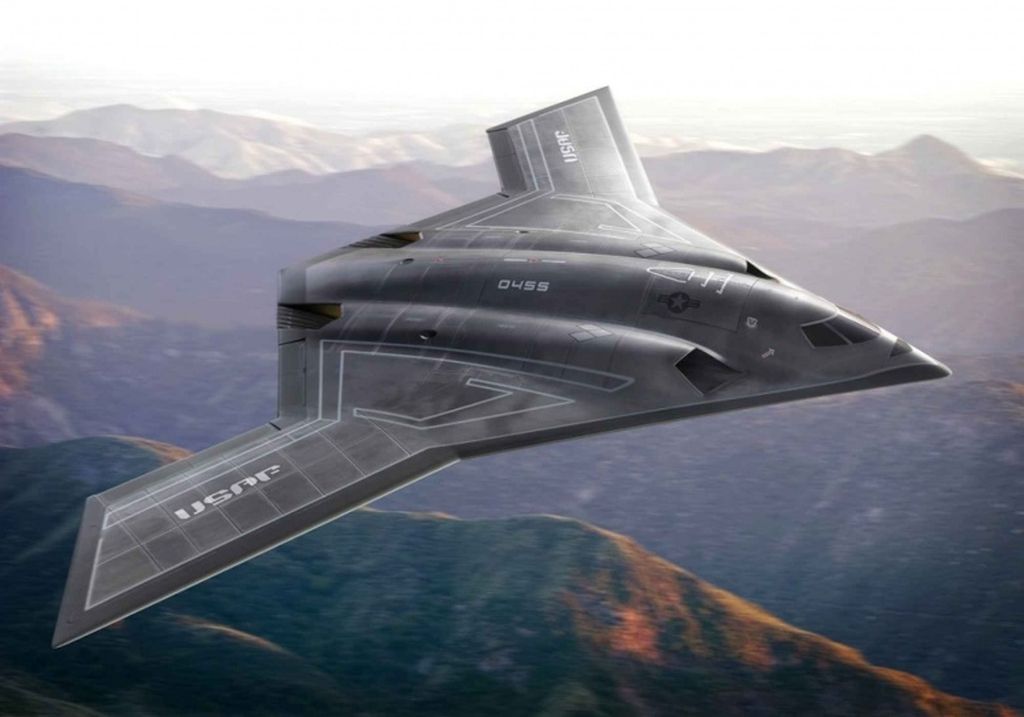
-
10 years agoThu Oct 29 2015, 03:37pm
 Main AdminRoyal Air Force squadrons are participating in Exercise Trident Juncture 15, the largest and most ambitious NATO exercise since 2002. Hosted by Italy, Portugal and Spain, 30 nations and more than 36,000 troops are training together in an exercise designed to improve the coordination and interoperability between NATO nations and partner nations.
Main AdminRoyal Air Force squadrons are participating in Exercise Trident Juncture 15, the largest and most ambitious NATO exercise since 2002. Hosted by Italy, Portugal and Spain, 30 nations and more than 36,000 troops are training together in an exercise designed to improve the coordination and interoperability between NATO nations and partner nations.
At Los Lanos Air Base in Spain Typhoon FGR4s from 1(F) Squadron and Tornado GR4s from 31 Squadron are flying daily missions alongside Spanish, Turkish and French counterparts, increasing their readiness and ensuring they can work together seamlessly and effectively. At Torrejon Air Base near Madrid, RAF Voyager and Sentry aircraft are providing air-air refuelling and airborne command and control respectively, whilst at sea a pair of Chinooks from RAF Odiham are operating in support of amphibious forces from aboard HMS Ocean.
The RAF?s participation is part of the UK?s contribution to the NATO Readiness Action Plan which provides a coherent and comprehensive package of measures to best respond to changes in the security environment on NATO?s borders and further afield. The exercise demonstrates the ability of NATO to respond swiftly to threats from any direction thereby providing deterrence to would be aggressors and assurance to allies and partner nations.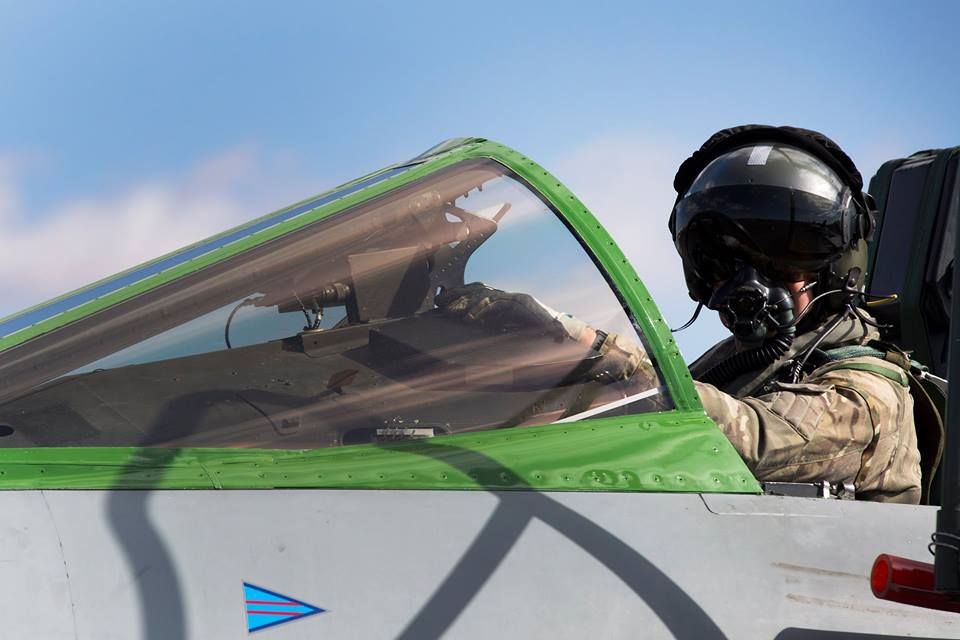
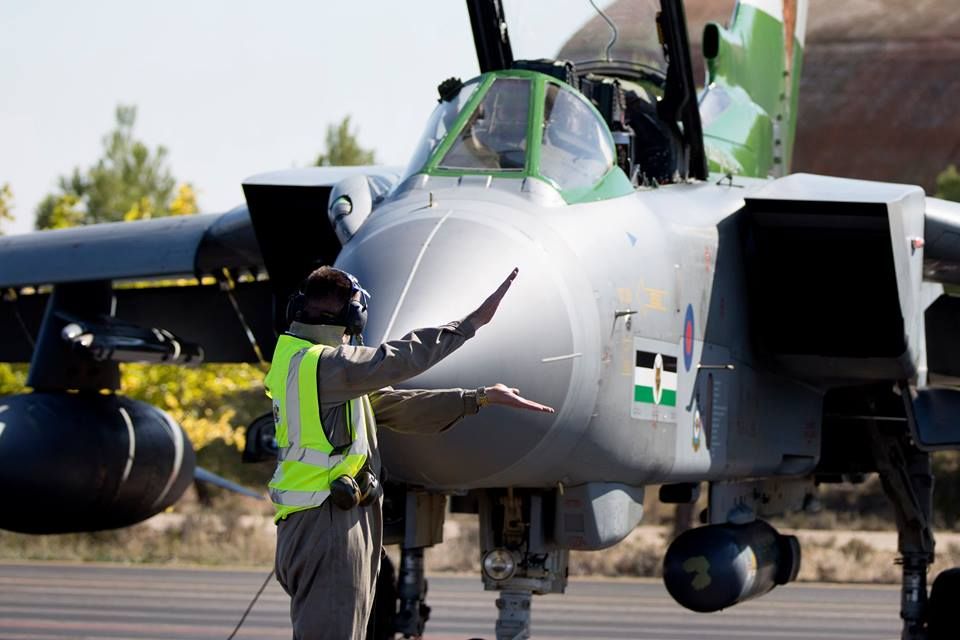
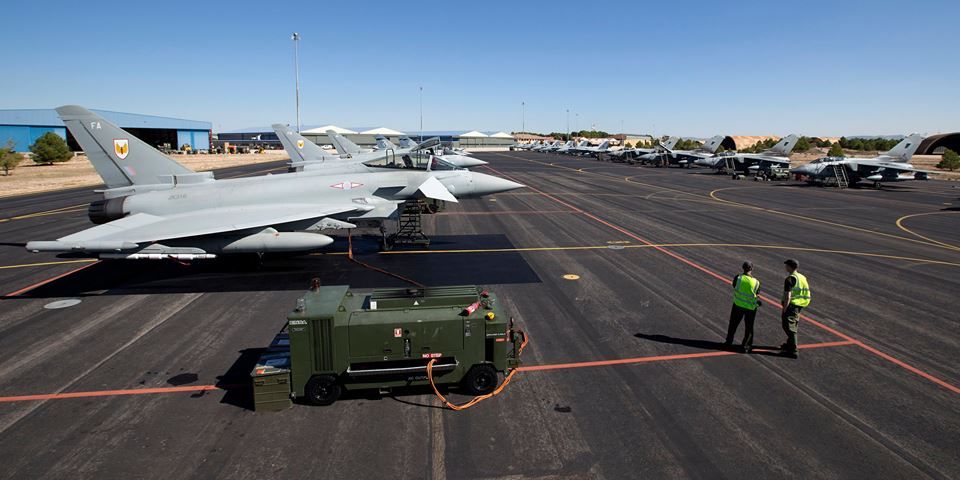
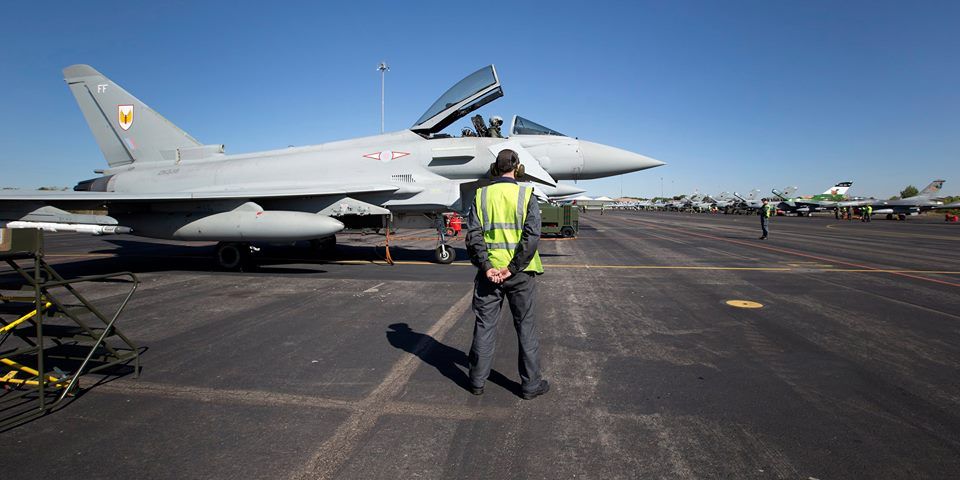
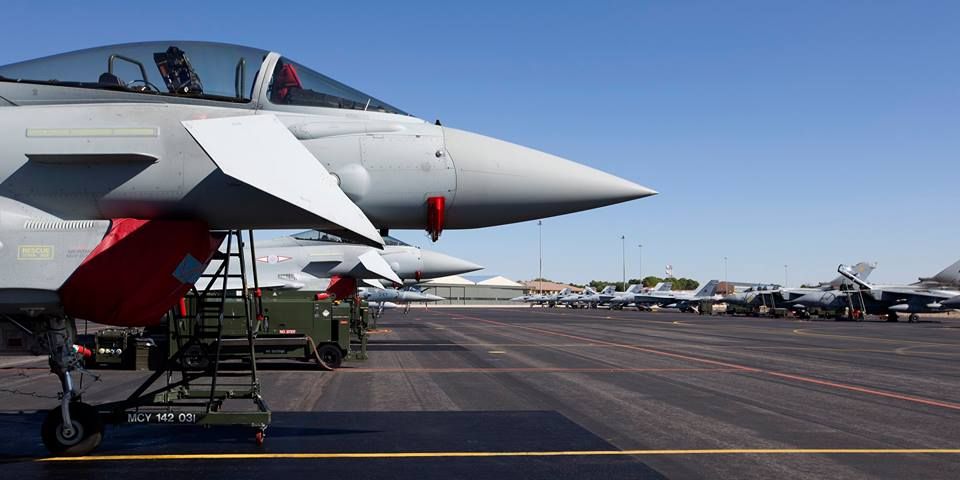
RAAF KC-30A refuels USMC Hornet with engine trouble over Iraq
In an Australian first, a RAAF KC-30A Multi-Role Tanker Transport has refuelled a United States Marine Corps (USMC) F/A-18C Hornet with engine trouble over Iraq.
The USMC Hornet was flying a combat mission against Daesh over Northern Iraq when it was forced to shut down one of its two engines due to a mechanical issue.
Short on fuel, the Hornet requested air-to-air refuelling support from the RAAF KC-30A.
A challenging feat at the best of times, air-to-air refuelling with an engine-out Hornet had only ever been conducted in flight-testing scenarios and never before from the RAAF aircraft over a war-zone.
The RAAF KC-30A aircraft's captain, Squadron Leader Jamie, said the situation demanded some brainstorming and clever flying.
"The hardest part was that the Hornet couldn't maintain the required altitude or speed that we normally refuel at due to the hostile environment over Iraq," Squadron Leader Jamie said.
"The first option was to accept refuelling at a reduced speed, lower than normally required, and refuelling at that speed had never been done by me or my crew.
"The other option was to do what we call tobogganing, where we refuel while descending to allow the Hornet to gather more speed. This option would have brought us below a safe altitude, so we went with the first option."
Squadron Leader Jamie said the USMC pilot demonstrated incredible skill and the RAAF KC-30A and USMC Hornet were able to conduct the complicated manoeuvre in order to enable the jet to refuel, fly out of Iraq and land safely.
"The Hornet had also dropped bombs from one of its wings, making his aircraft already less stable, which when combined with the loss of an engine, makes refuelling in mid-air a real challenge.
"He did a great job in the end and it was a good feeling to help him out.
"If we hadn't been able to assist, he would certainly have had to make a less than ideal landing in Iraq."
The Australian Air Task Group comprises six F/A-18A Hornet aircraft, a KC-30A Multi-Role Tanker Transport and an E-7A Wedgetail airborne early warning and control aircraft.
As part of Operation OKRA they participate in close air support operations, air to air refuelling and airborne command and control in Iraq and Syria as part of the international coalition formed to disrupt and degrade the Daesh threat.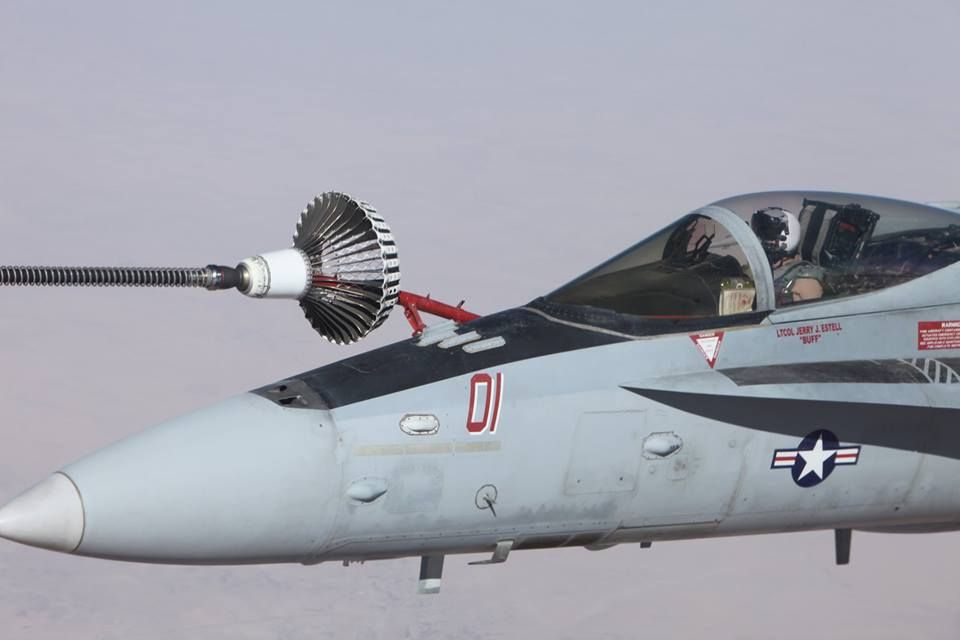
?CH-53K Helicopter Achieves First Flight
October 27,2015
West Palm Beach, Florida -
Sikorsky Aircraft Corp., a subsidiary of United Technologies Corp. (NYSE:UTX), today announced the successful first flight of the U.S. Marine Corps? CH-53K King Stallion heavy lift helicopter prototype, known as Engineering Development Model-1 (EDM-1). The 30-minute flight signals the beginning of a 2,000-hour flight test program using four test aircraft.
?EDM-1?s first flight signifies another major milestone for the CH-53K helicopter program,? said Mike Torok, Sikorsky?s CH-53K Program Vice President. ?Having independently tested the aircraft?s many components and subsystems, including integrated system level testing on the Ground Test Vehicle, we are now moving on to begin full aircraft system qualification via the flight test program.?
Sikorsky delivered the EDM-1 into the test program at the company?s West Palm Beach, Fla.-based Development Flight Center in late 2014. During its 30 minute maiden flight the EDM-1 aircraft performed hover, sideward, rearward and forward flight control inputs while in ground effect hover up to 30 feet above the ground. As the flight test program proceeds, the EDM-1 will be joined by an additional 3 EDM aircraft to fully expand the King Stallion?s flight envelope over the course of the three-year flight test program
?We have entered a much anticipated phase in this developmental program,? said Col. Hank Vanderborght, U.S. Marine Corps Program Manager for Heavy Lift Helicopters. ?We have experienced significant learning at the system and sub-system levels, which continues to build our confidence in the capabilities of the 53K. With first flight behind us, we look forward to execution of the development and operational testing and the deployment of this incredible heavy lift capability to our warfighters.?
Sikorsky, with support of others in the industry, is developing the CH-53K King Stallion heavy lift helicopter for the U.S. Marine Corps. The CH-53K King Stallion helicopter will maintain similar physical dimensions as its predecessor, the three-engine CH-53E SUPER STALLION? helicopter, but will nearly triple the payload to 27,000 pounds over 110 nautical miles under ?high hot? ambient conditions. Features of the CH-53K helicopter include a modern glass cockpit; fly-by-wire flight controls; fourth-generation rotor blades with anhedral tips; a low-maintenance elastomeric rotor head; upgraded engines; a locking, United States Air Force pallet compatible cargo rail system; external cargo handling improvements; survivability enhancements; and improved reliability, maintainability and supportability.
The U.S. Department of Defense?s Program of Record remains at 200 CH-53K aircraft with a Initial Operational Capability in 2019. Eventual production quantities would be determined year-by-year over the life of the program based on funding allocations set by Congress and the U.S. Department of Defense acquisition priorities. The Marine Corps intends to stand up eight active duty squadrons, one training squadron, and one reserve squadron to support operational requirements.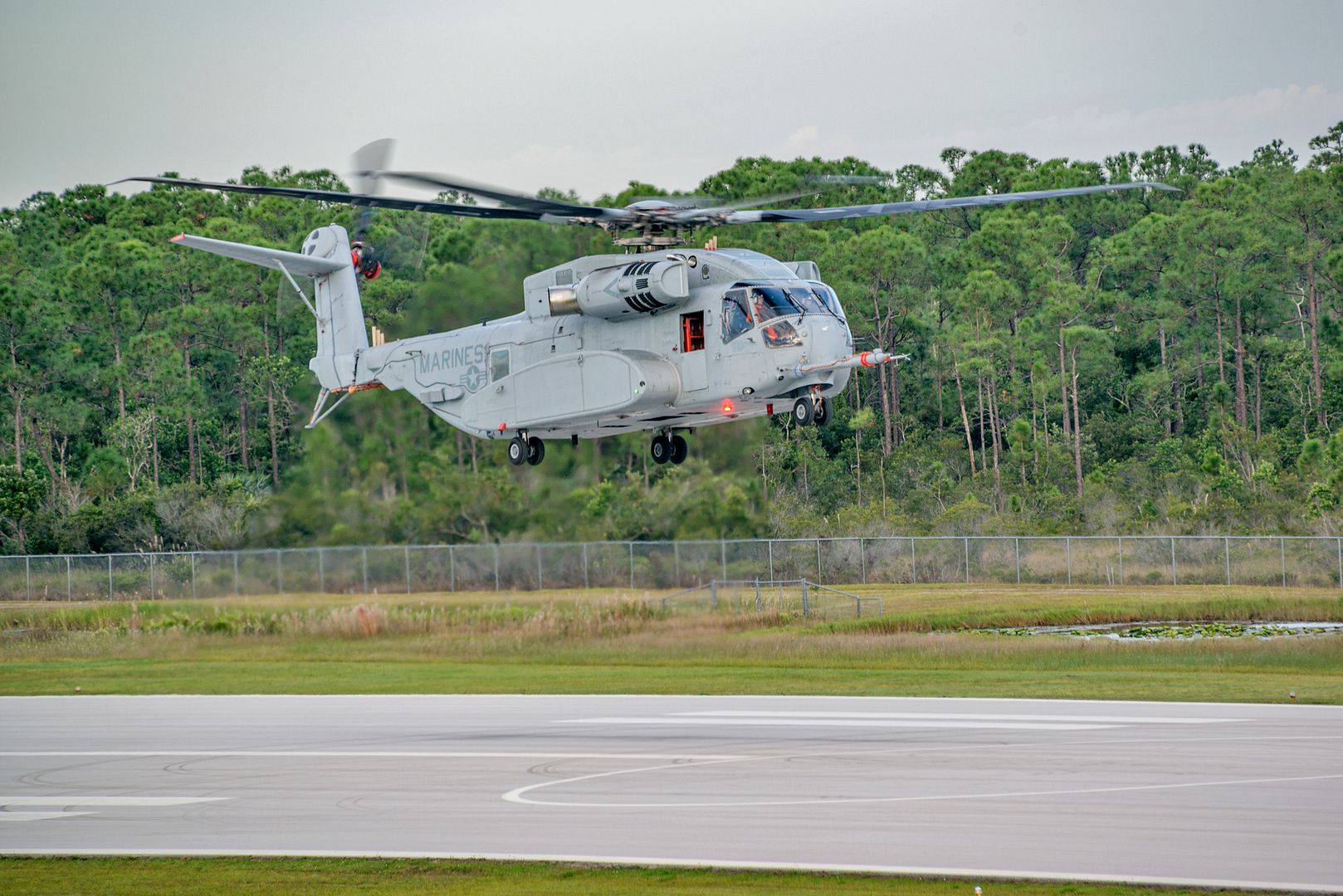
Moscow, ??tober 28. Today the Sukhoi Company handed over another batch of Su-34 frontline bombers to the Russian Air and Space Forces according to the 2015 State Defense Order. The aircraft took off from the V.P.Chkalov Novosibirsk Aircraft Plant?s airfield and headed to the place of their deployment.
At the present time the aircraft plant operates with maximum efficiency. The State Contract with the Ministry of Defense of the Russian Federation for supplies of the Su-34s to the Russian Air and Space Forces up to the year 2020 guarantees a stable work load of the Sukhoi Company for the coming years and identifies long-term development prospects. Currently, Su-34s operate successfully in the military and demonstrate high performance.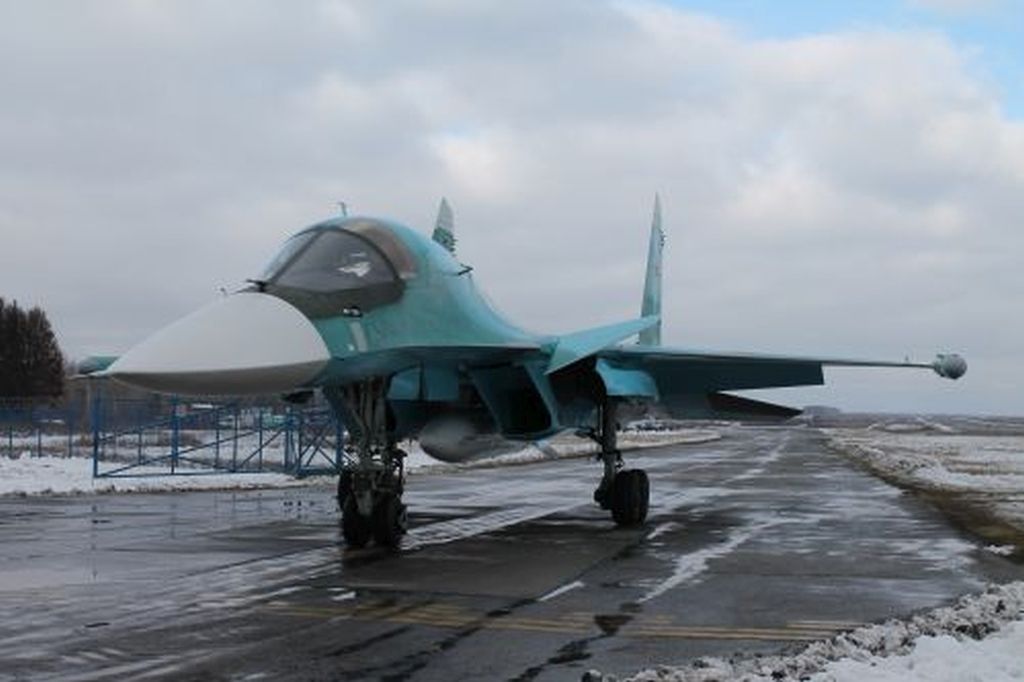
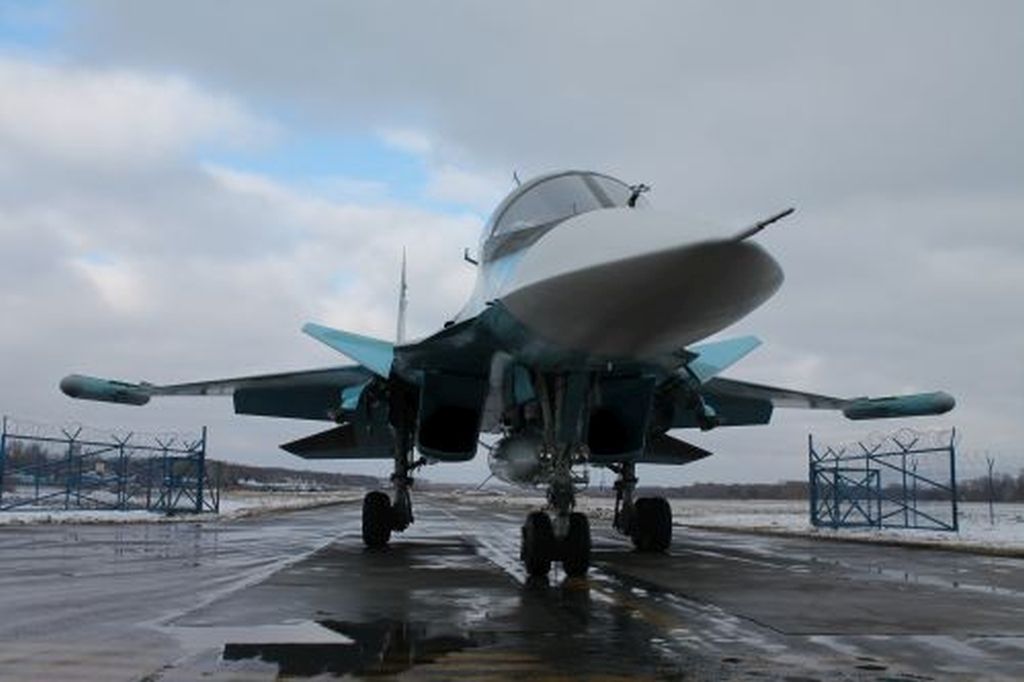
China Military Online; issued October 26, 2015
BEIJING --- A JL-9 training plane conducted its flight training at a training base under the Aviation University of the PLA Air Force on the morning of Oct. 18, marking the JL-9 training plane has been introduced into the pilot cadets training of the PLA Air Force.
Independently developed and produced by China, the JL-9 training plane started its military service in the PLA Air Force aviation units in 2011 to replace the out-dated JJ-7 training plane.
The JL-9 training plane, adopting the comprehensive avionics system, is able to undertake flight training of both the second-generation fighters such as the J-7 and J-8 and the third-generation fighters such as the FC-1 (Thunder) and Su-27.
The utilization of the JL-9 is conducive to shorten the time used for training of a qualified pilot.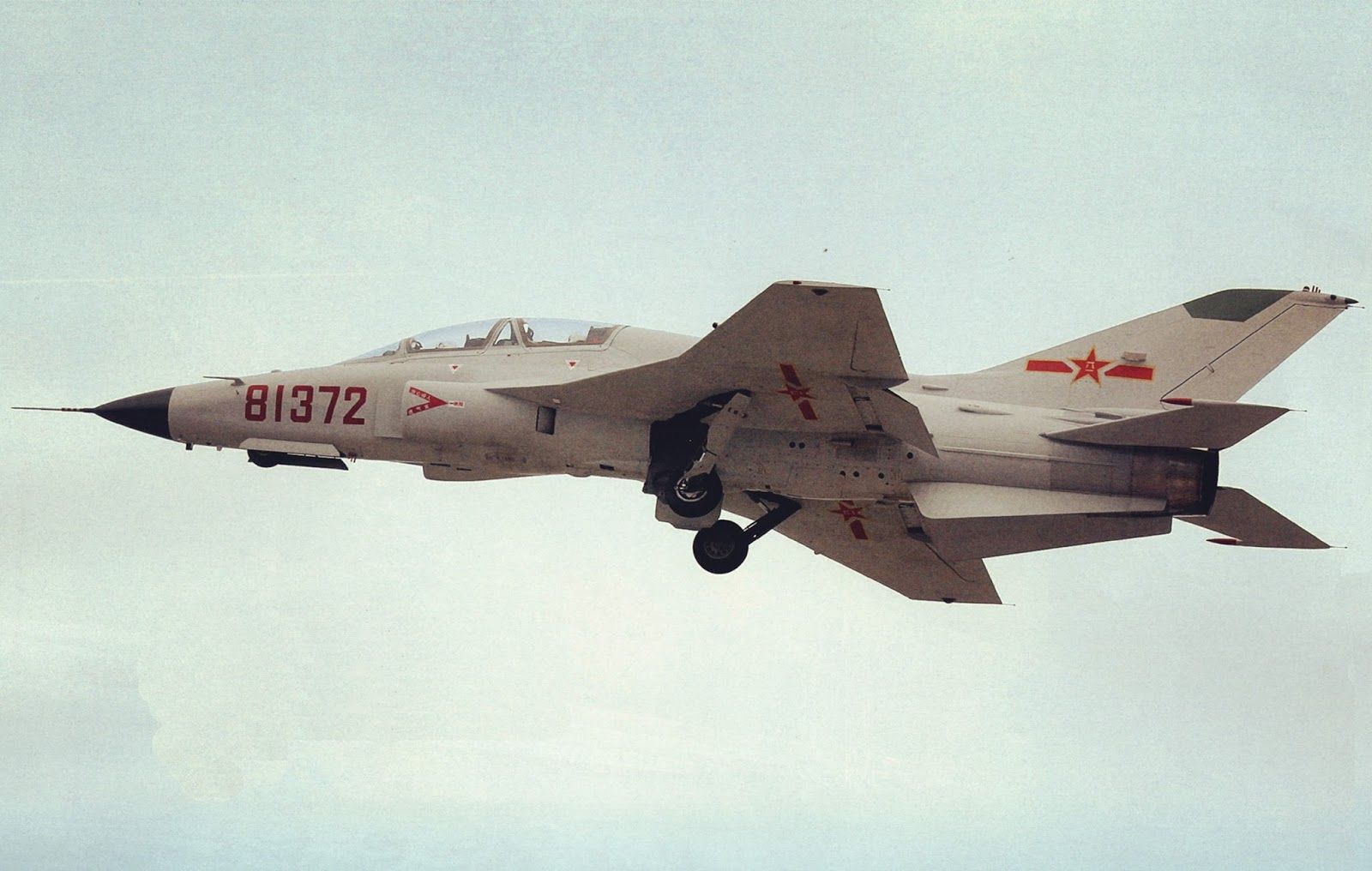
EVERETT, Wash., Oct. 28, 2015 -- Boeing [NYSE: BA] BA) today delivered a 777-300ER (Extended Range) to Garuda Indonesia in a special SkyTeam livery. The 777-300ER continues to play an important role in Garuda?s network expansion strategy. Pictured here, the Garuda 777-300ER in the SkyTeam livery, taking off from Paine Field in Everett, Wash.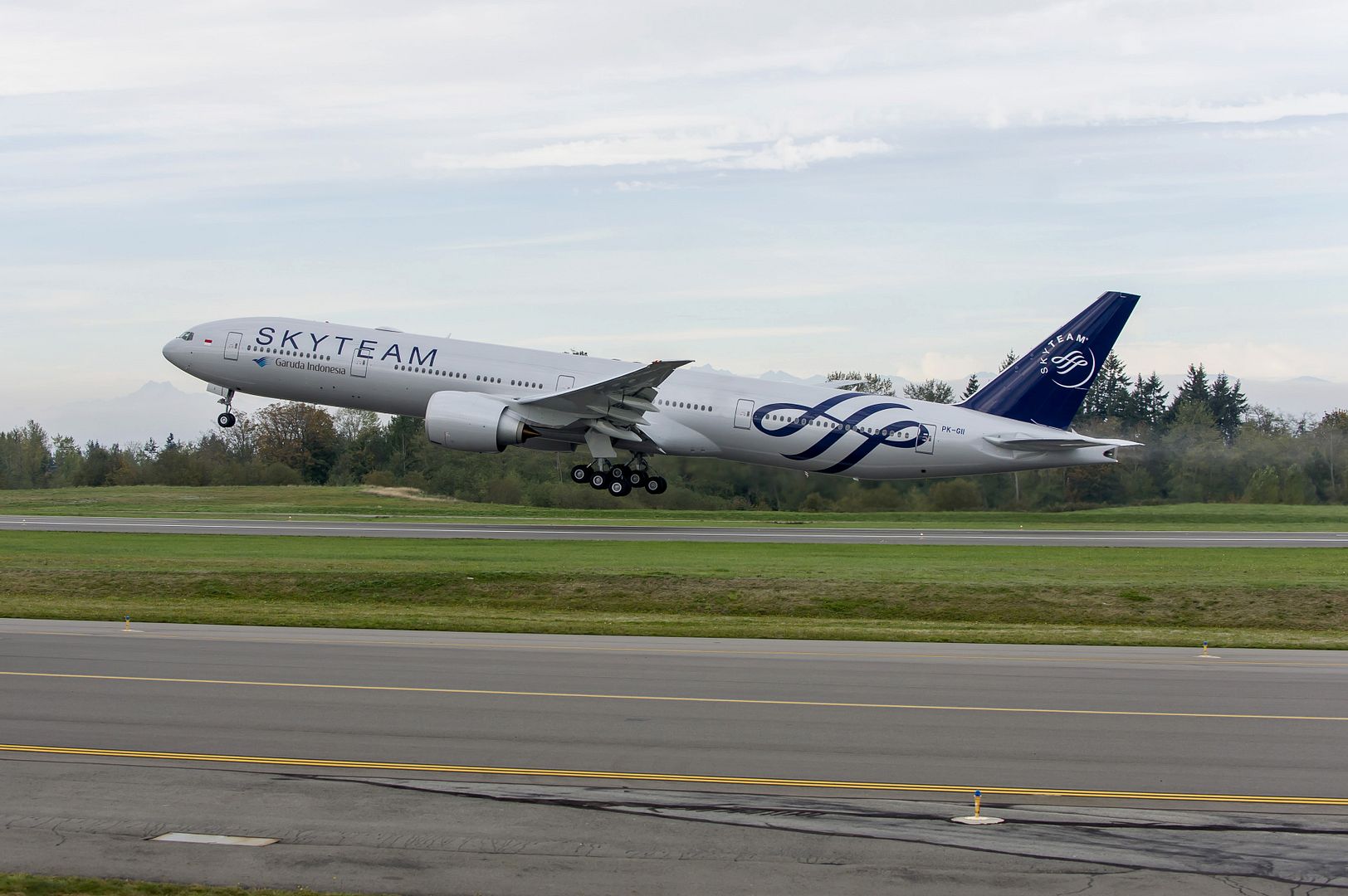
29 October 2015 Press Release
China Aviation Supplies Holding Company (CAS) has signed a General Terms Agreement (GTA) with Airbus for the acquisition of 30 A330 Family aircraft and 100 A320 Family aircraft. The 30 A330s are the firm up of the commitment signed in June 2015. The GTA was signed in Beijing by Li Hai, President and CEO of CAS, and Fabrice Br?gier, President and CEO of Airbus, in the presence of Chinese Premier Li Keqiang and visiting German Chancellor Angela Merkel.
?We are grateful to CAS, one of our longest standing customers, for its continued confidence in Airbus and in the versatile A330 Family as well as the best-selling A320 Family,? said Fabrice Bregier, President and CEO of Airbus. ?With these 30 A330 options now firmed up, CAS? total number of orders for the popular Airbus widebody is this year 75 aircraft. This strong demand in China for the A330 has been the key driver behind our decision to set up an A330 Completion and Delivery Centre in Tianjin, China next to the A320 Family final assembly line and delivery centre in Tianjin, which has assembled and delivered more than 240 Airbus single aisle aircraft. This will enable us to be even closer to our customers and to take our long-standing mutual beneficial partnership with China to a new height.?
The first agreements on setting up an A330 C&DC in Tianjin, China were signed by Airbus and Chinese partners in March 2014 and witnessed by French President Francois Hollande and visiting Chinese President Xi Jinping. This was followed in October 2014, when Airbus, the Tianjin Free Trade Zone (TJFTZ) and the Aviation Industry Corporation of China (AVIC) signed a Letter of Intent (LoI) in Berlin, Germany, in the presence of the German Chancellor Angela Merkel and Chinese Premier Li Keqiang, A framework agreement was signed in July 2015 in Toulouse.
According to the Airbus global market forecast, China is leading the world in passenger growth. China?s domestic air traffic will become the world?s largest within the next 10 years, and traffic volumes will quadruple in the next 20 years. In the next 20 years, Airbus forecasts a demand in China for some 5,400 new passenger and freighter aircraft including 1,700 widebody aircraft like the A330, A350 and A380.
At present, the in-service Airbus fleet with Chinese operators comprises over 1,200 aircraft (over 1,000 A320 Family aircraft, over 160 A330 Family aircraft and five A380s as well as Airbus freighters and corporate jets).
North American XB-70 Valkyrie Moves Into Museum?s Fourth Building
That would of been something to see
October 29, 2015
Yemeni pilots have conducted airstrikes on weapons storage & vehicles using these AT-802 in Taiz & Al baydah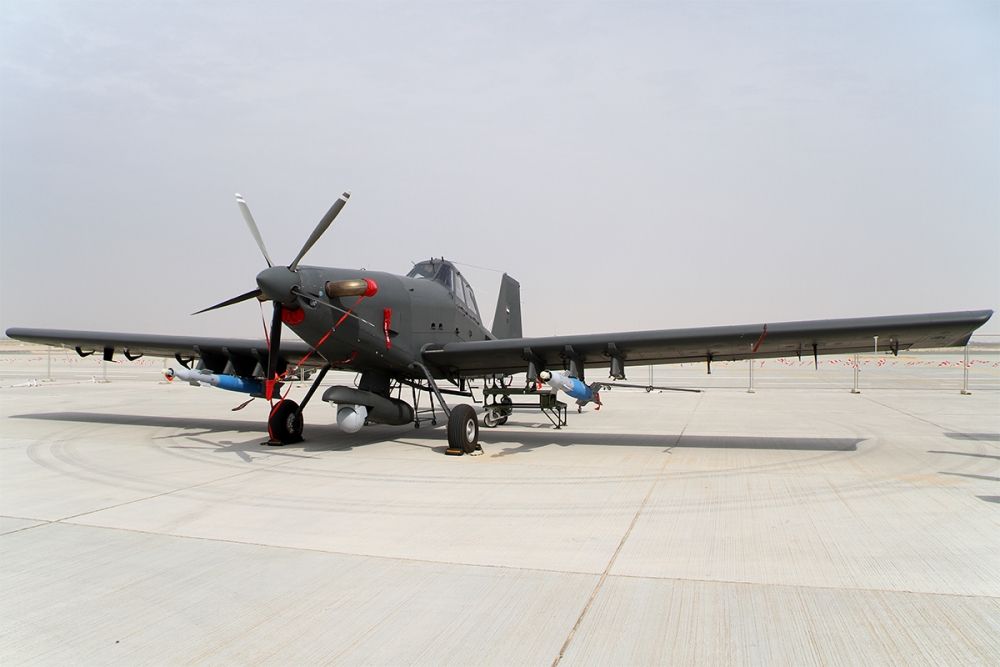
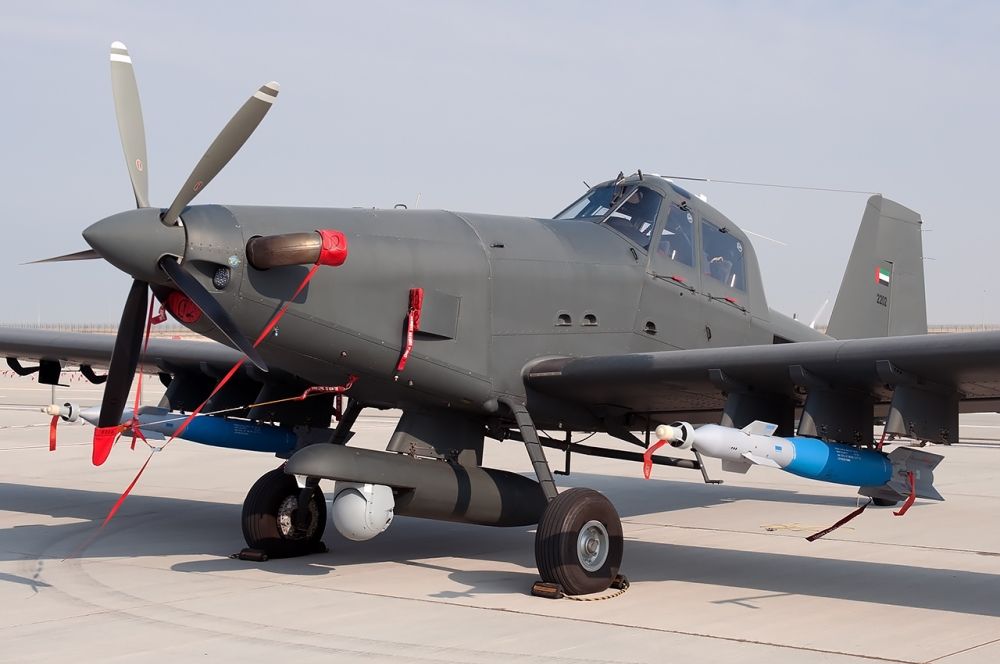
A modern day Il-2
Link to video - http://asian-defence-news.blogspot.com.au/2015/10/yemeni-pilots-have-conducted-airstrikes.html
-
10 years agoFri Oct 30 2015, 06:35pm
 Main Admin
Main Admin
United States Air National Guard personnel from the 144th Fighter Wing, California, maneuver a F-15C Eagle out of a Hangar during Exercise Vigilant Shield 16 NORAD FTX on October 20, 2015 at 5 Wing Goose Bay.
(US Air National Guard photo by Senior Master Sgt. Chris Drudge/released)
Military aircraft sits on the flight line during Exercise Vigilant Shield 16 NORAD FTX at 5 Wing Goose Bay on October 23, 2015.
(U.S. Air Force photo by Tech. Sgt. Joshua J. Garcia/Released)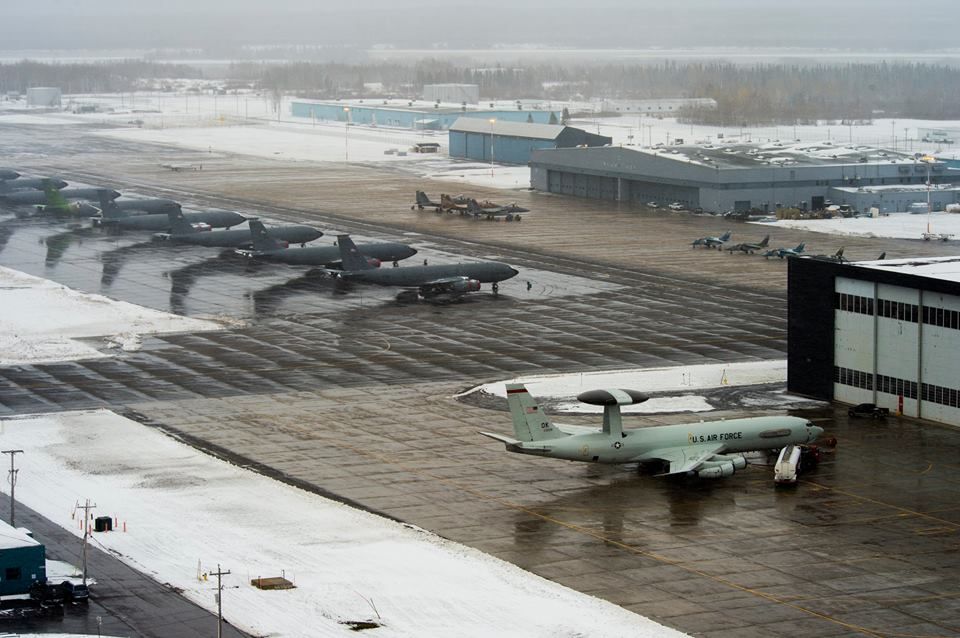
United States Air Force F-15C Eagle from the 144th Fighter Wing, California, refuels from a KC-135 Stratotanker high over the Canadian Arctic during Exercise Vigilant Shield 16 NORAD FTX on October 22, 2015. During this NORAD yearly field training exercise, Canadian and American fighter jets trained in air defence procedure over the High Arctic past CFS Alert, the most northerly, permanently inhabited location in the world.
(U.S. Air Force photo by Tech. Sgt. Joshua J. Garcia/Released)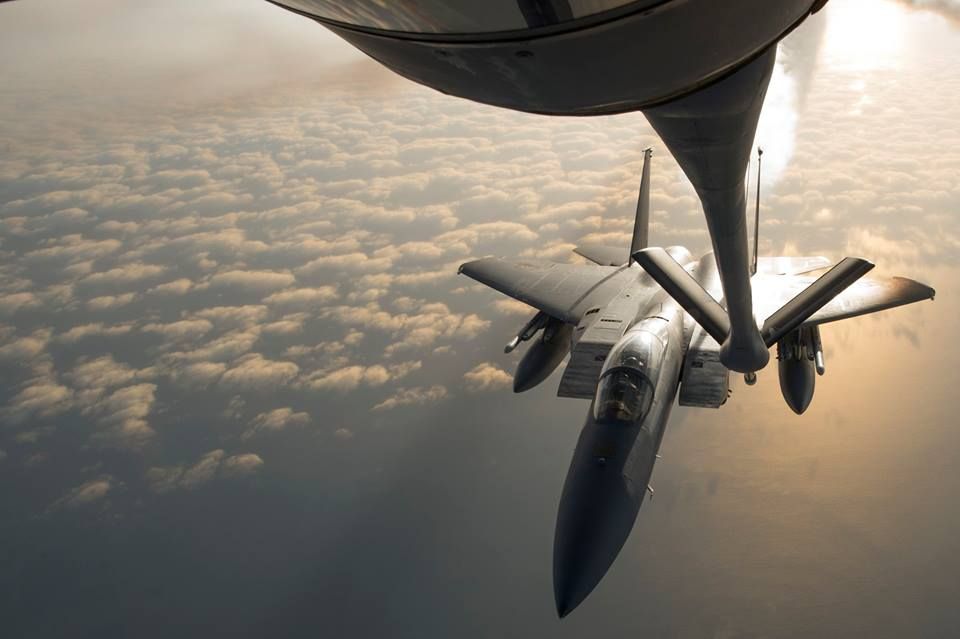
OSAN AIR BASE, South Korea (AFNS) -- U-2 aircraft from the 5th Reconnaissance Squadron have spent almost 40 years delivering vital imagery and signals intelligence to command leaders throughout the Korean Peninsula.
The U-2 Dragon Lady is an important part of the Air Force's intelligence, surveillance and reconnaissance (ISR) mission enterprise, and provides high-altitude, all-weather surveillance and reconnaissance in direct support of U.S. and allied forces.
"We're proud to celebrate our squadron's 40 years of heritage this year," said Maj. James Bartran, the 5th RS director of operations. "The U-2 provides the only multi-disciplined, high-altitude ISR capability across a wide array of mission sets and adversaries. Its unique flexibility, endurance, and reliability provide these capabilities near real-time and on demand to military and policy-level decision makers on a greater than 95 percent success rate."
Bartran, a U-2 pilot with 10 years of experience, explained how the U-2 has assisted with almost every phase of conflict during the past years, including peacetime indications and warnings, low-intensity conflict, and large-scale hostilities.
"It brings us all great pride to know that our squadron's capabilities have consistently proven their importance," he said.
Flying at 70,000 feet on a combat mission at an altitude equivalent to approximately 13 miles, the U-2's many systems must work perfectly every time despite the age of these aircraft.
"I am responsible for the guidance, flight control, communication, and navigation systems on the U-2 aircraft functioning at 100 percent," said Staff Sgt. Kellan Hawks, a 5th RS avionics systems craftsman. "Making sure the aircraft is ready to fly, performing preflight inspections and system tests, and loading information into various systems so they sync up with their respective counterparts is vital to mission success."
Pilots are required to wear full pressure suits during flight, similar to those astronauts wear.
"They fly at the edge of space," Hawks said. "Solving pilot-reported discrepancies whenever they occur is one of the things that my crew and I do every day."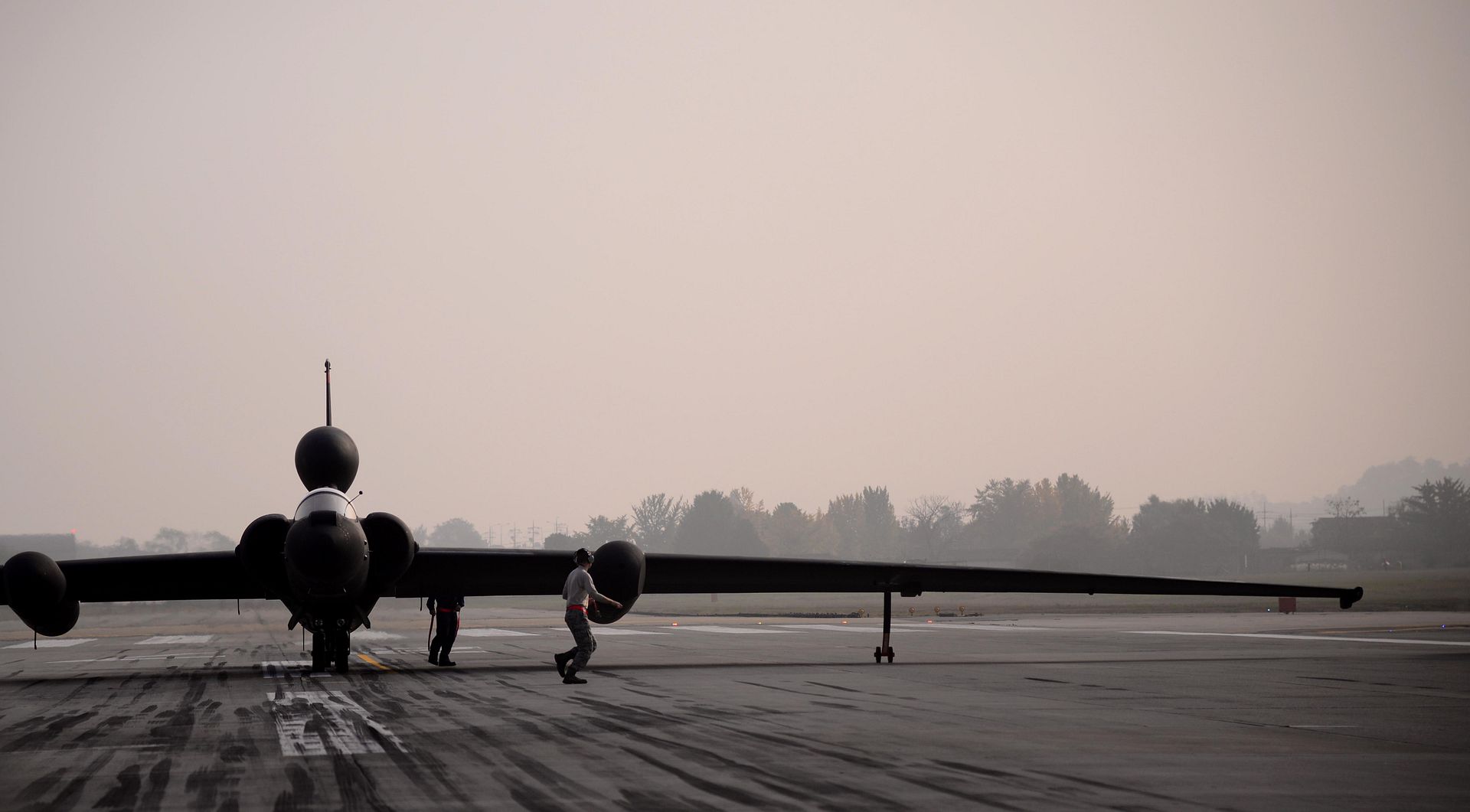
TEL AVIV, Israel, Oct. 29, 2015 /PRNewswire/ -- Boeing (NYSE: BA) and EL AL Israel Airlines agreed on an order today for up to nine 787 Dreamliners, valued at more than $2.2 billion at current list prices. Three of the orders will be added to Boeing's Orders & Deliveries website on Nov. 5 and the remainder will be posted as further contractual requirements are finalized.
EL AL will also lease six additional 787s from independent leasing companies as the Israeli-flag carrier looks to replace and grow its existing long-haul fleet, increasing capacity and providing greater route flexibility to and from its hub at Ben Gurion Airport, Tel Aviv.
"I am proud to unveil today the largest aircraft acquisition program in the history of EL AL. Our agreement to purchase 787 Dreamliners is a significant step forward in the optimization of our route network, enhancing passenger service and the overall flight experience," said David Maimon, President and Chief Executive Officer, EL AL. "These aircraft are the latest and most advanced in the world and are efficient and economical. I am convinced that this move is a great opportunity to meet the high standard expected of us and continue the momentum in EL AL's focus to provide our customer with maximum comfort, the newest and best technology and deliver a high standard of service on-board."
EL AL has been an all-Boeing carrier since taking delivery of its first Boeing airplane in 1961 and currently operates a fleet of 22 737s, seven 747s, seven 767s and six 777s.
"Boeing is proud of our long-standing relationship dating back to the delivery of the airline's first 707 in 1961 and we are pleased to now count EL AL as the newest 787 customer," said Boeing Commercial Airplanes President and CEO Ray Conner. "The Dreamliner is a perfect fit for EL AL's medium to long haul routes. The addition of 787s to the EL AL fleet will enable it to grow its route structure, while providing more range and capacity with exceptional passenger comfort."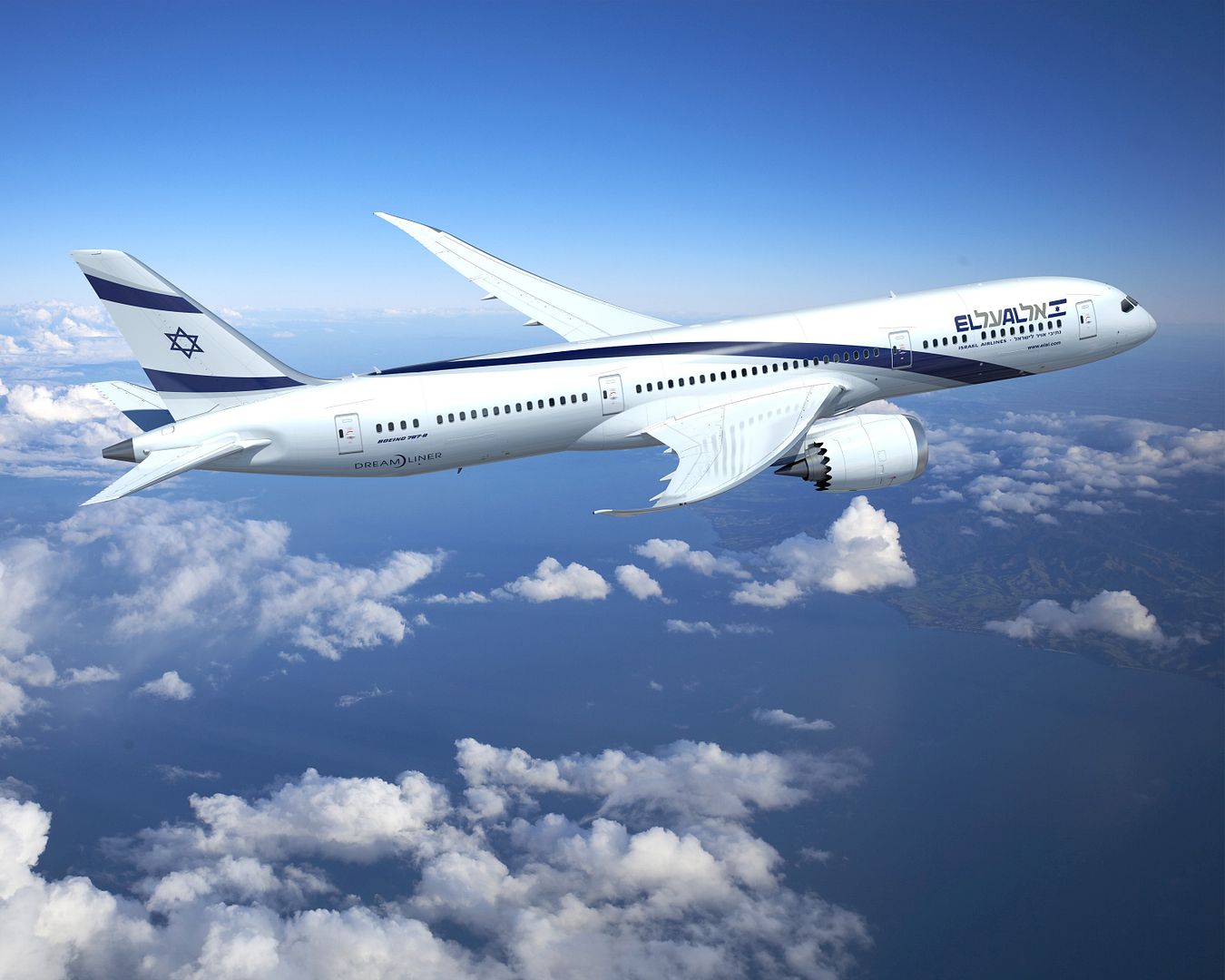
The UK?s joint Lightning Force has worked hard to stay at the leading edge of F-35 development from the start, notably with the advance of STOVL technology.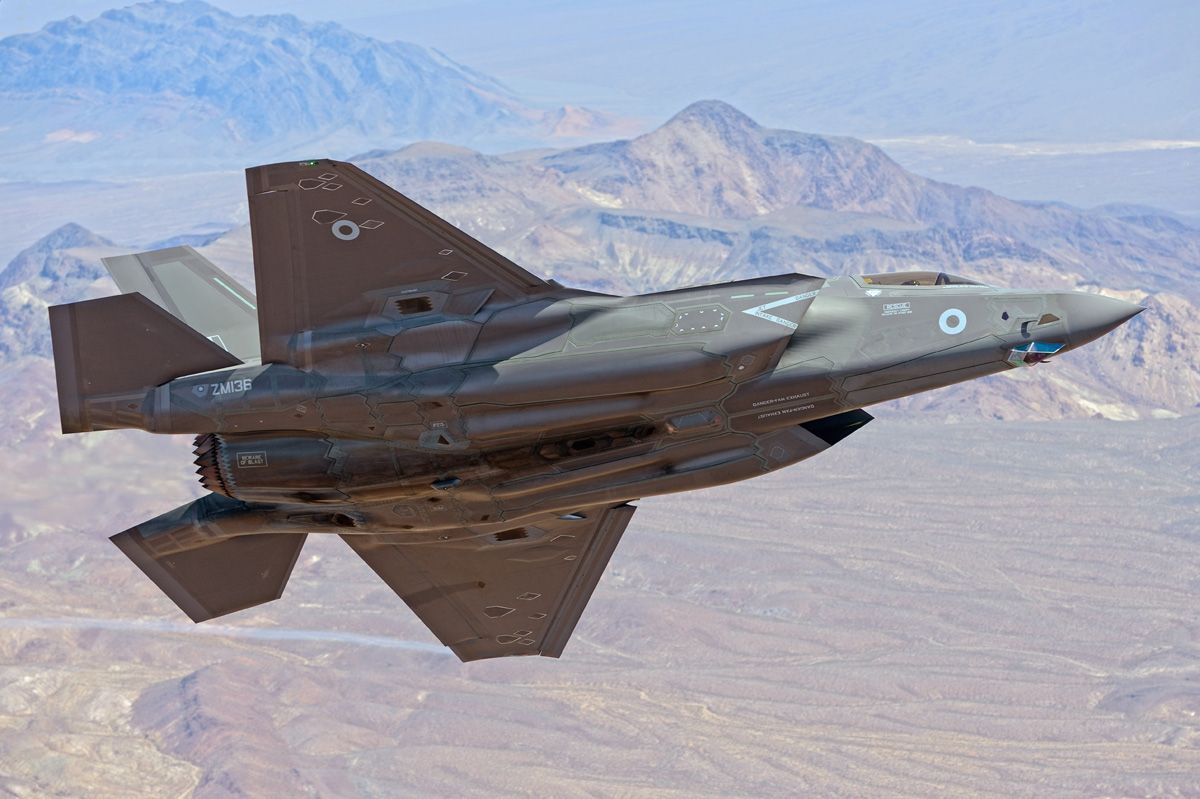
No 17(R) Test and Evaluation Squadron, called the Black Knights, has been re-established as the UK?s premier unit for developing and realizing the potential of the Lightning II.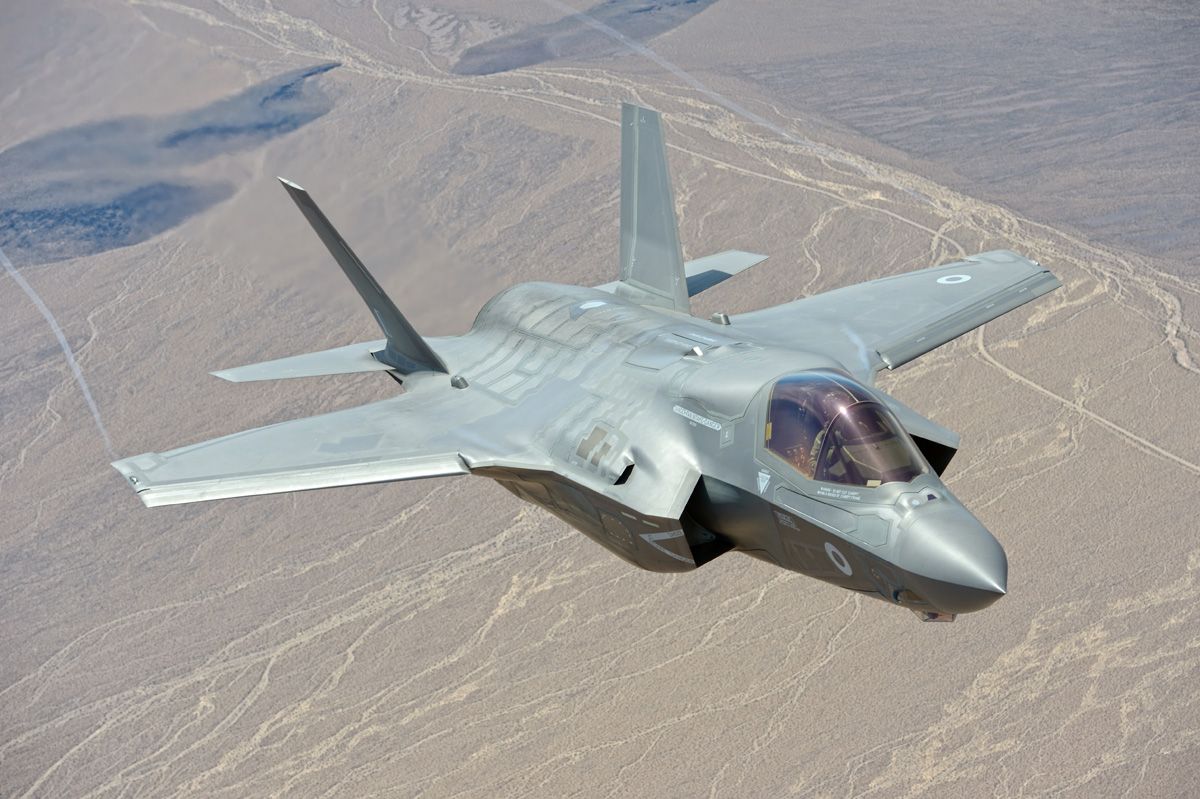
Now based in the California desert at Edwards, handpicked personnel of Black Knights are already engaged in the operational evaluation of the F-35 ? learning about, flying, and maintaining this advanced fighter.
The RAF's No 17(Reserve) Test and Evaluation Squadron comprises ten percent of the test program in the JOTT.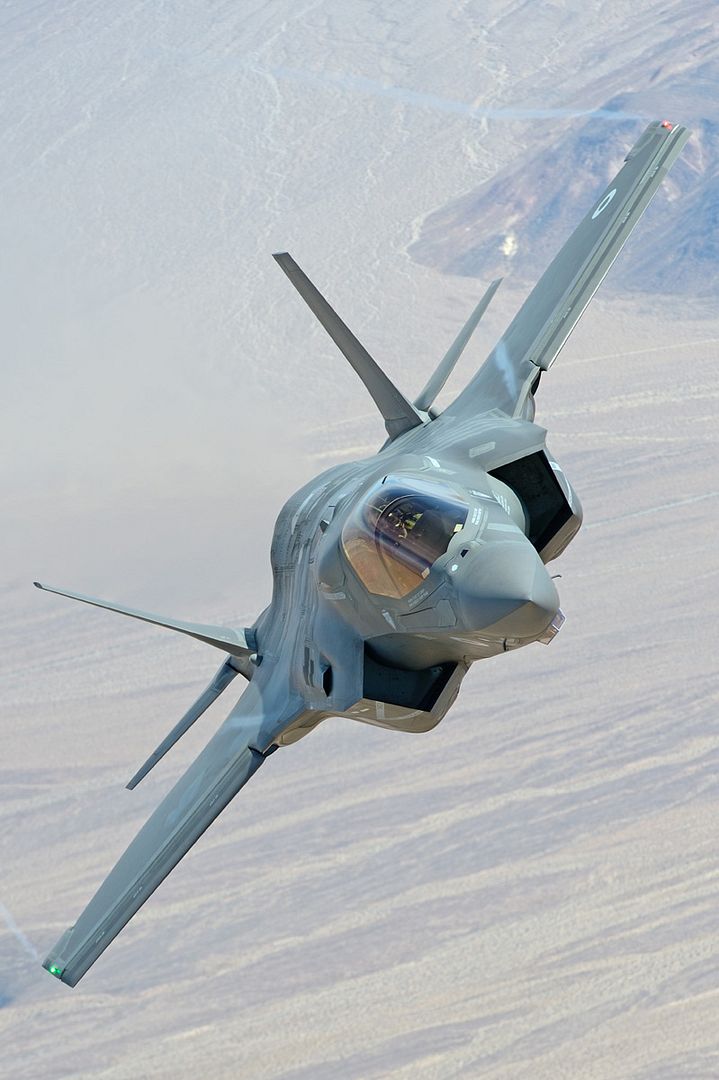
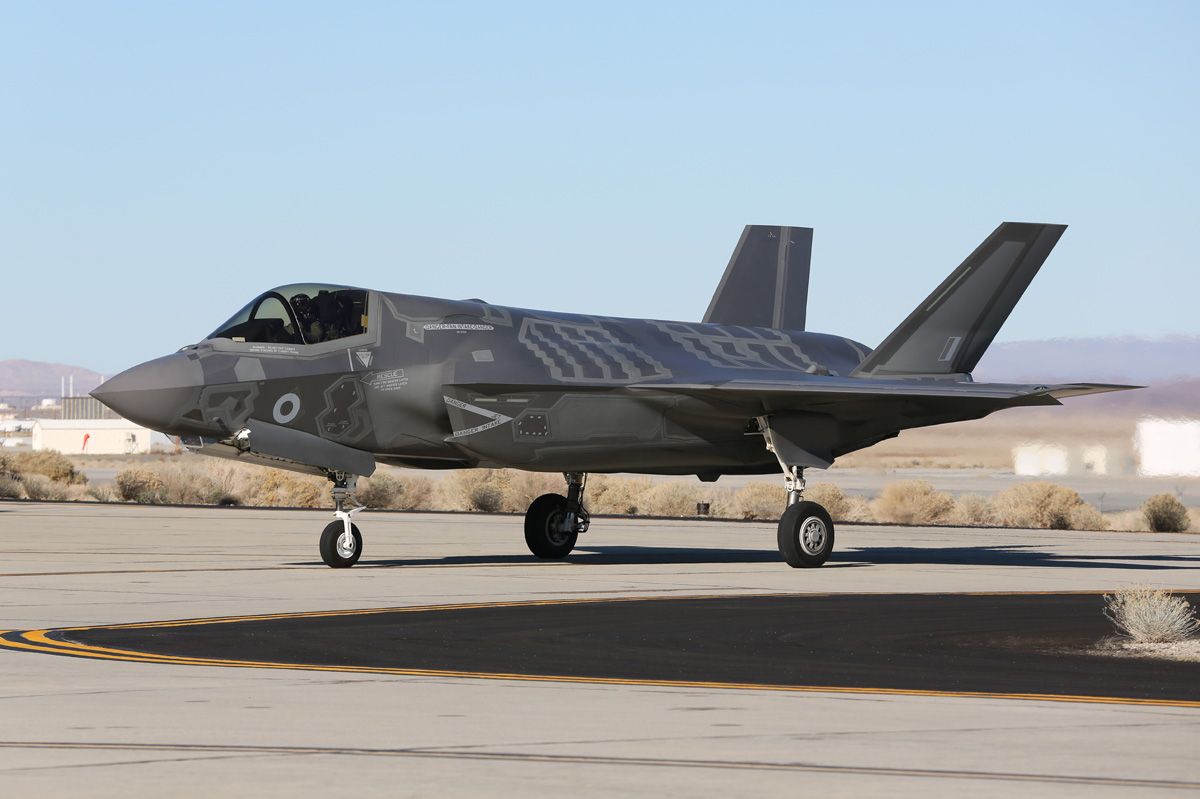
At Edwards, No 17(R) TES operates alongside the US Air Force?s 31st TES plus the Marine Corps test unit, VMX-22, which completes the overall construct of the JOTT. The squadron also maintains a close relationship with the 422nd TES at Nellis AFB.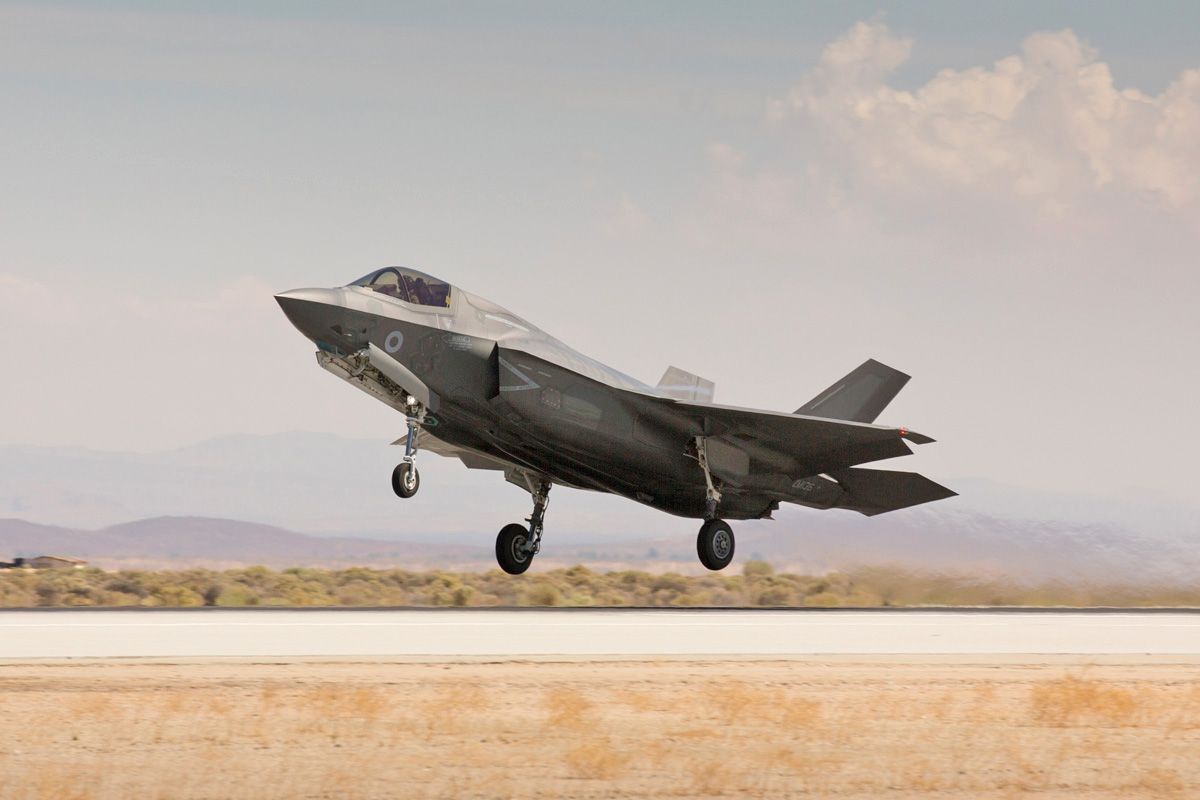
The British squadron will remain in the United States to maximize its partnership in the F-35 program. This will continue past the JOTT production decision, with the squadron set to ensure the British F-35s are kept at the leading edge of their capabilities.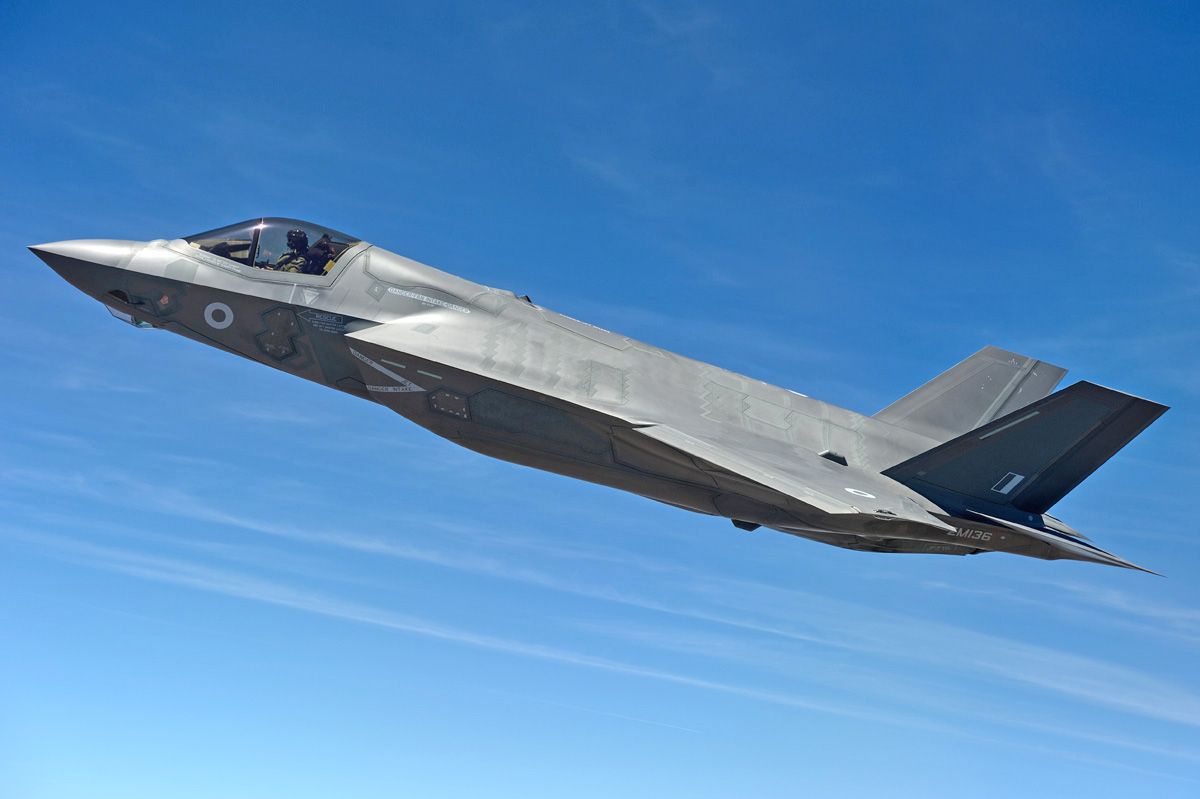

F-15 Eagle aircraft from the 104th Fighter Wing, Massachusetts Air National Guard stand ready to deploy for two weeks in support of the United States Air Force Weapons Instructor School (WIC) located at Nellis Air Force Base, Las Vegas, Nevada on Friday, Oct. 30, 2015. WIC teaches graduate-level instructor courses to elite fighter pilots, and provides the world's most advanced training in weapons and tactics employment to officers of the combat air forces. (U.S. Air National Guard photos by Senior Master Sgt. Robert Sabonis/released)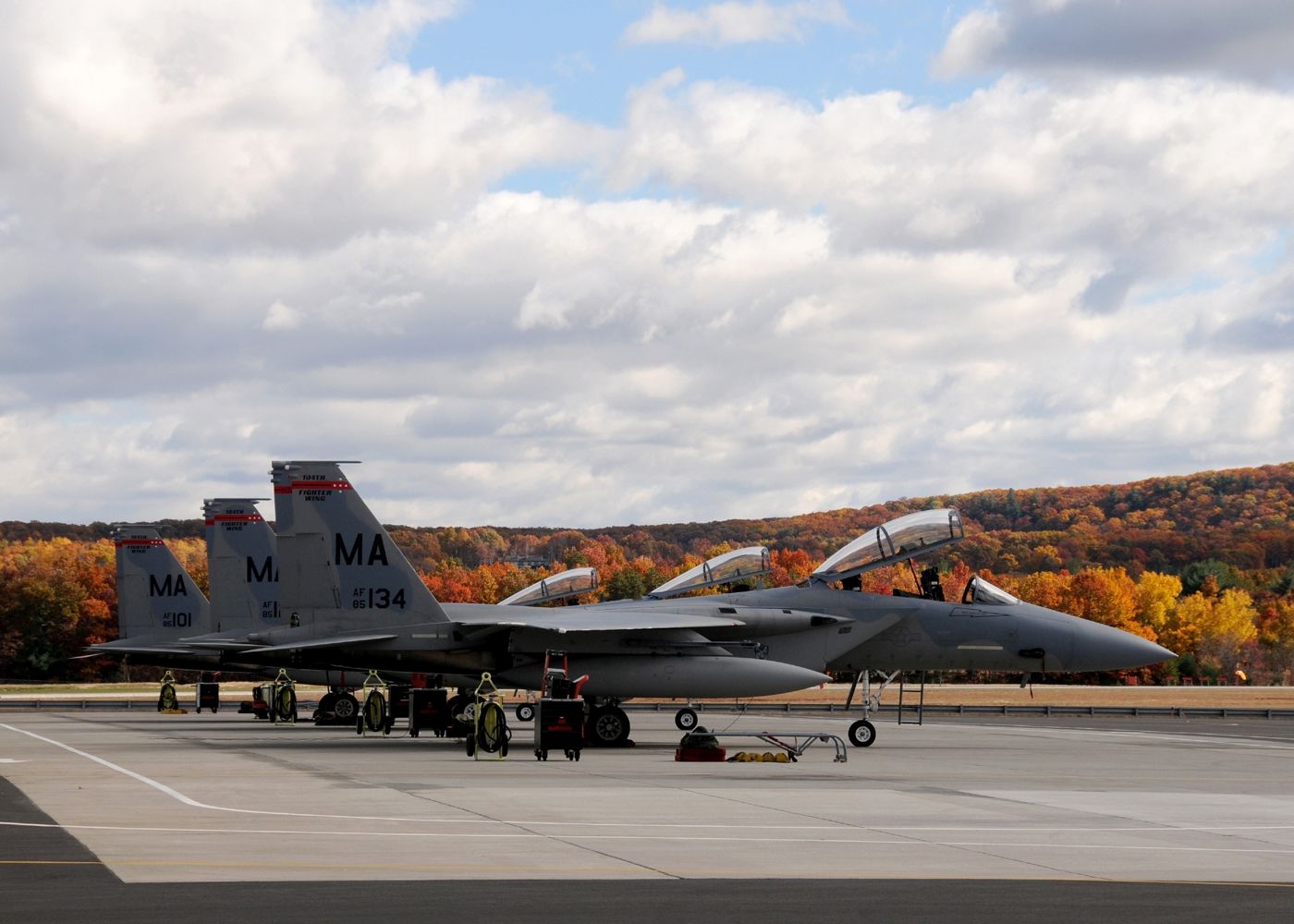
-
10 years agoMon Nov 02 2015, 03:22pm
 Main AdminA C-130 Hercules receives fuel from a KC-135 Stratotanker Oct. 22, 2015, over the Atlantic Ocean. The two aircraft, assigned to Royal Air Force Mildenhall, England, were training in Trident Juncture, an exercise designed to help militaries respond more effectively to regional crises with NATO allies and partners -- improving security of borders, ensuring energy security and countering threats of terrorism. (U.S. Air Force photo/Senior Airman Christine Halan)
Main AdminA C-130 Hercules receives fuel from a KC-135 Stratotanker Oct. 22, 2015, over the Atlantic Ocean. The two aircraft, assigned to Royal Air Force Mildenhall, England, were training in Trident Juncture, an exercise designed to help militaries respond more effectively to regional crises with NATO allies and partners -- improving security of borders, ensuring energy security and countering threats of terrorism. (U.S. Air Force photo/Senior Airman Christine Halan)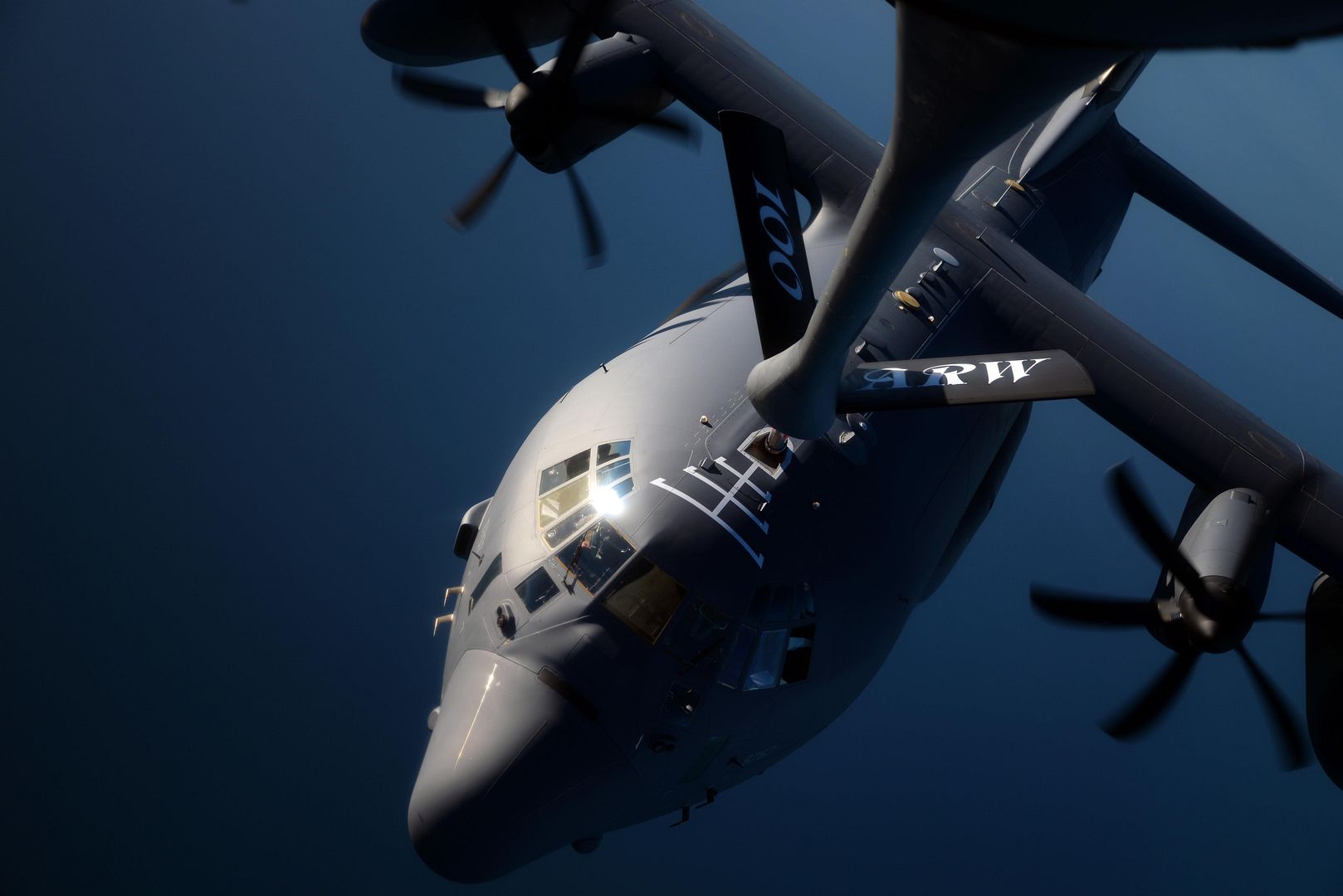
KC-30A returns from successful trials with F-35A Joint Strike Fighter
A Royal Australia Air Force KC-30A Multi-Role Tanker Transport has returned home from successful refuelling trials with the F-35A Lightning II, better known as the Joint Strike Fighter (JSF).
Operating from Edwards Air Force Base in the California desert, the RAAF KC-30A flew 12 sorties with a United States Air Force F-35A from 23 September to 26 October.
Using the 18-metre-long Advanced Refuelling Boom System (ARBS) mounted on the tail of the KC-30A, the RAAF crew made a total of 479 ?dry? and 24 ?wet? contacts with the refuelling receptacle on the F-35A, and transferred more than 95 tonnes of fuel.
KC-30A Transition and Receiver Clearance Manager Wing Commander Grant Kelly said the trials would allow RAAF and foreign F-35As alike to be refuelled.
?These trials are another important step in building KC-30A capability and the results will inform the training practices of current and future RAAF personnel on both aircraft types,? WGCDR Kelly said.
?Air-to-air refuelling will be an important ?force multiplier? for the F-35A fleet, considerably boosting their range and endurance, or allowing them to carry bigger payloads.?
As well as the ARBS, the KC-30A is also equipped with hose-and-drogue refuelling pods that are compatible with Air Force?s Hornets, Super Hornets and Growlers. A single KC-30A can carry a fuel load of more than 100 tonnes and remain 1800 kilometres from its home base with 50 tonnes of fuel available for offload, for four hours.
?The impact of the KC-30A is already being felt in the Middle East Region, where the ARBS and hose-and-drogue capabilities are enabling RAAF and Coalition aircraft to fly sorties of more than 10 hours,? WGCDR Kelly said.
?After more than a year of deployed KC-30A operations, it has built a reputation as the ?Coalition tanker of choice?.?
Throughout the trials at Edwards Air Force Base, the KC-30A was operated by personnel from No. 33 Squadron. A flight test team from the RAAF?s Aircraft Research and Development Unit, supported by flight test instrumentation engineers from the Aerospace Systems Engineering Squadron, was integrated within the USAF Test Centre to work on a dynamic test program.
The KC-30A capability will continue growing, with the next series of refuelling trials to include the C-17A Globemaster and P-8A Poseidon.
The fleet of five KC-30As at RAAF Base Amberley will be supplemented by two more aircraft in 2018.
Australia has committed to 72 F-35As to be based at RAAF Bases Williamtown and Tindal, with the first aircraft arriving in late 2018. The F-35A will replace the ageing F/A-18A/B Hornet with a 5th-generation networked fighter aircraft.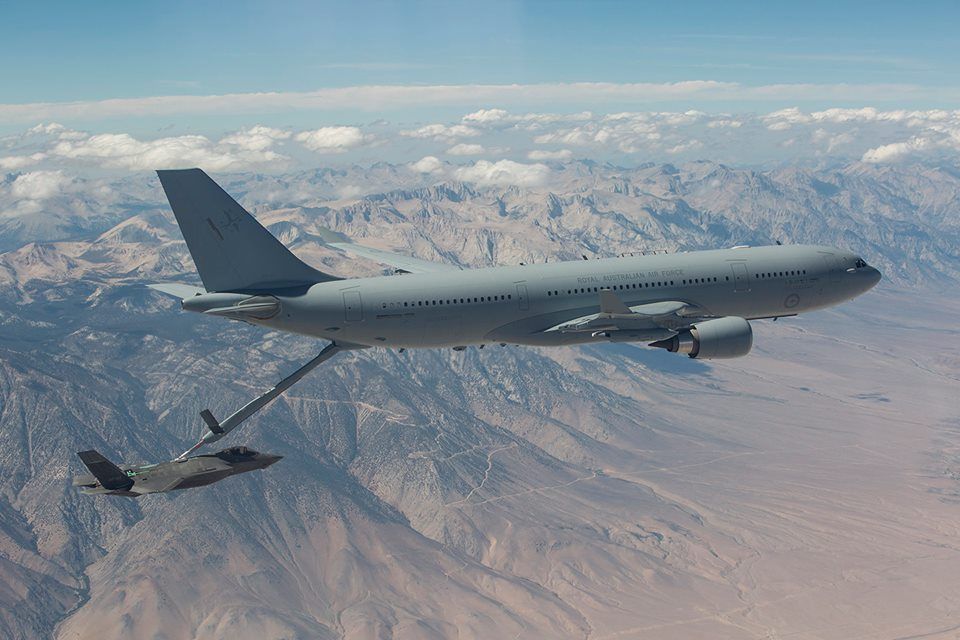
MARIETTA, Ga., Oct. 27, 2015 ? U.S. Air Force crews recently ferried two MC-130J Commando II aircraft from the Lockheed Martin (NYSE: LMT) facility here. Both aircraft are assigned to the U.S. Air Force Special Operations Command (AFSOC). One will be operated from Kadena Air Base, Japan, and the other from RAF Mildenhall, United Kingdom. The Commando II supports such missions as in-flight refueling, infiltration/exfiltration, and aerial delivery and resupply of special operations forces.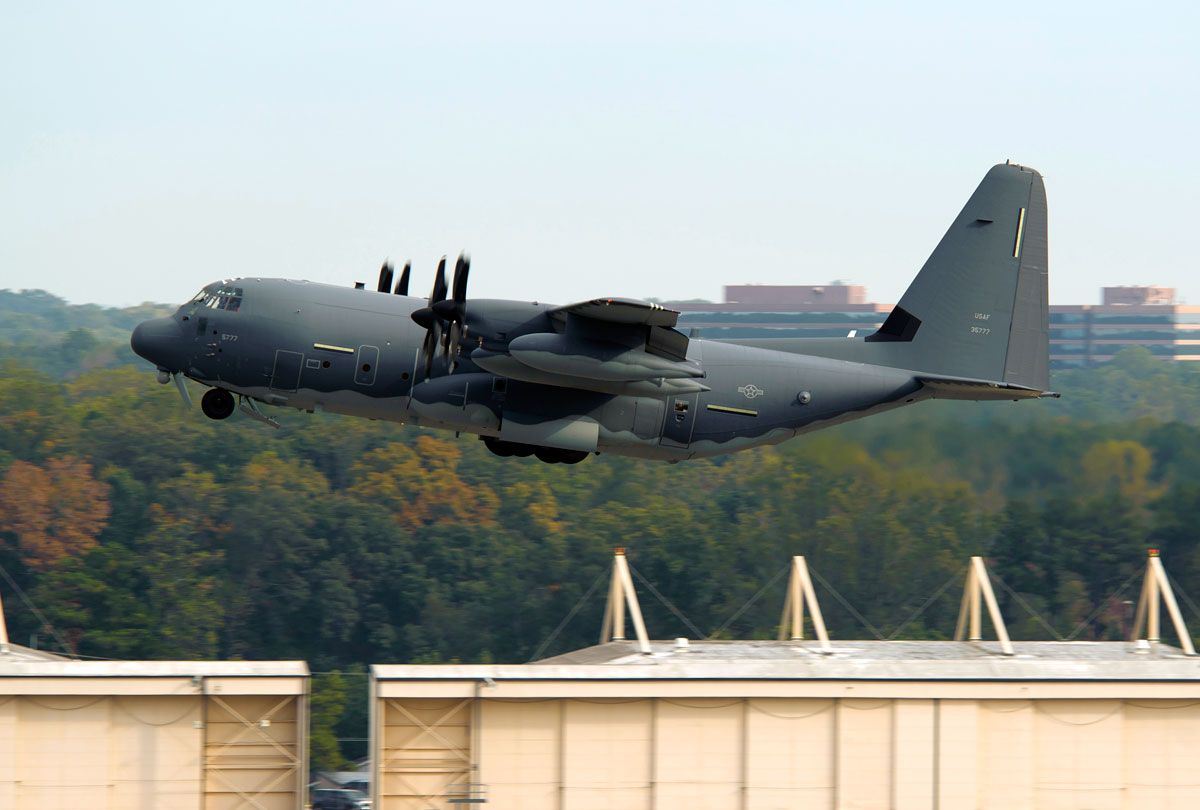
The first China-developed large passenger jet, the C919, built by the Commercial Aircraft Corporation of China Ltd. (COMAC), has rolled off the production line today, which marks a breakthrough in the history of China's aviation industry and new level of China's high-end equipment manufacturing. A grand ceremony is held in COMAC's factory in Shanghai to celebrate the great moment.
The C919, designed to have 158 seats and a standard flight range of 4,075 km, has been developed by the COMAC, which develops home-made passenger aircraft, including the short range jet ARJ21.
The single-aisle narrow-body passenger aircraft C919 has been marketed over the past years aimed at competing with the Boeing 737 and Airbus 320.
The C919 aircraft will make its maiden flight next year and then begin test flights for about three years before putting into commercial use.
Before rolling off the production line, a total of 517 C919 aircrafts have been ordered by 21 customers home and abroad.
Chen Yingchun, Vice Chief Designer of the C919 said that the aerodynamic efficiency and the weight of the aircraft determine the performance of the aircraft. The weight of the C919's wings is designed to exceed that of Boeing 737, and its aerodynamic efficiency is designed to reach Airbus?level.
Behind the C919 project, there's China?s ambition in technological innovation. Eric Chen, President and CEO of Airbus China, said: "It is absolutely understandable for a great, populous and increasingly strong country to have the ambition and strategic plan to boost its aviation industry."
According to Airbus' Global Market Forecast in 2015 Paris Airshow, in the next 20 years (2015-2034), passenger air traffic will grow annually at 4.6 percent driving a need for around 32,600 new passenger and freighter aircrafts of 100 seats and worth around 5 trillion U.S. dollars.
China will become the leading country for passenger air traffic with its domestic traffic to become the world' s number one within ten years, said the forecast.
In the foreseeable future, Chen said that, "The world's aviation market is massive. The sky is vast enough to home more than the existing two aircraft manufacturers."
Source: People's Daily Online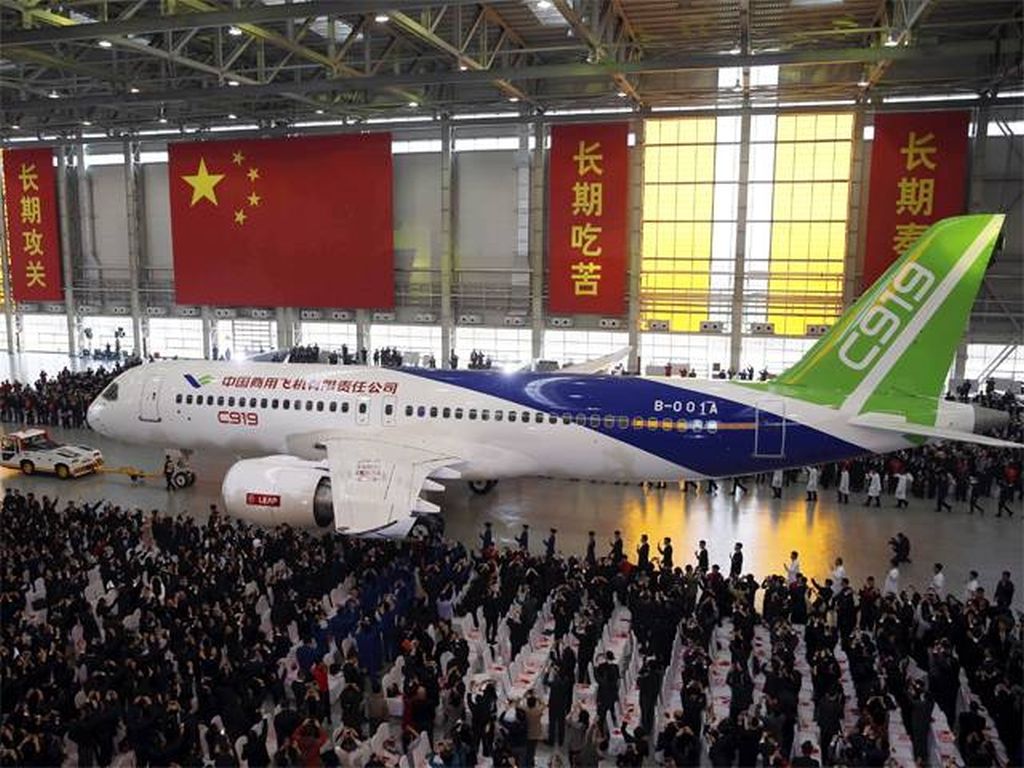
-
10 years ago
 Main AdminRAF Tornado and Typhoon squadrons are working together with NATO allies and partners in the largest NATO exercise since 2002.
Main AdminRAF Tornado and Typhoon squadrons are working together with NATO allies and partners in the largest NATO exercise since 2002.
On Exercise Trident Juncture 2015, which is currently playing out across Italy, Spain and Portugal, UK forces are training to increase both interoperability and readiness. In so doing they will ensure they can work seamlessly with the NATO Response Force and other Allied Forces, and provide reassurance that the UK takes its collective defence obligations seriously.
At Albacete in Spain, 31 Squadron based at RAF Marham and 1(F) Squadron from RAF Lossiemouth are flying several sorties each day, including at night, as these images from RAF Photographer SAC Robyn Stewart demonstrate.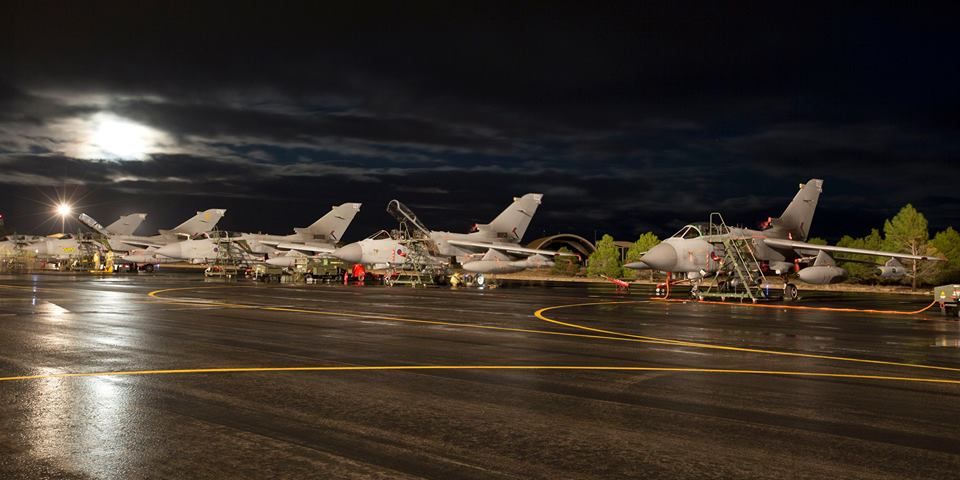
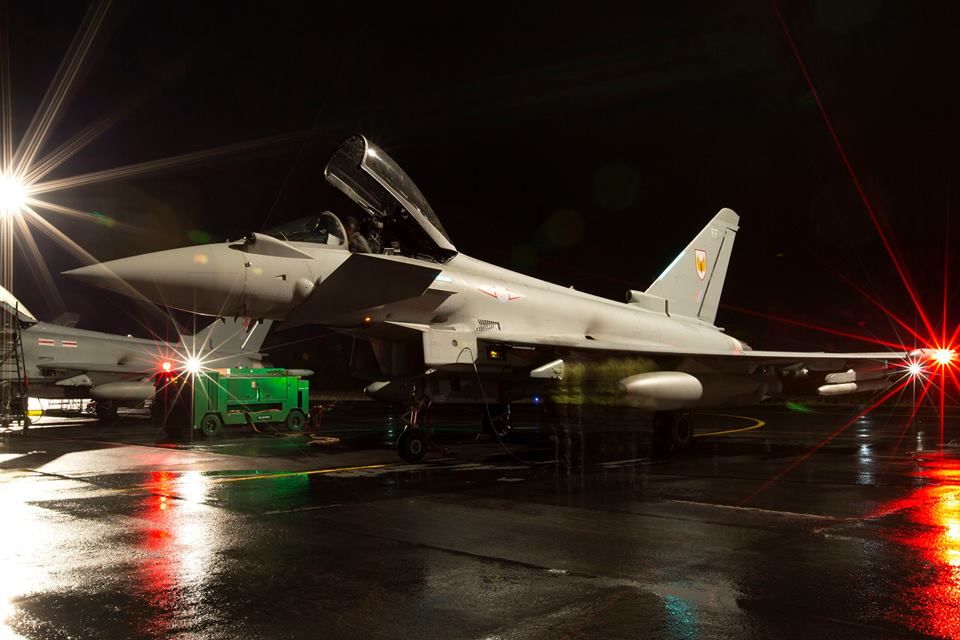

Published on Nov 2, 2015
F-35 test pilot Maj Charles ?Flak? Trickey fires the first aerial gun test burst of the GAU-22/A 25mm gun from F-35A aircraft AF-2.
BAGRAM AIRFIELD, Afghanistan -- Airmen assigned to the 421st Fighter Squadron arrived Oct. 28 for its last F-16 Fighting Falcon deployment in support of Operation Freedom?s Sentinel and NATO?s Resolute Support mission as the unit begins to shift to a newer aircraft.
During their six-month tenure at Bagram Airfield, the squadron from Hill Air Force Base, Utah, will assume the responsibility of providing overwatch and close air support for ground units in Afghanistan.
?We are incredibly excited to be here,? said Lt. Col. Michael Meyer, the 421st Expeditionary Fighter Squadron commander. ?This is what we train for. We are here to support the ground commander?s intent, wherever and whenever they ask, save lives on the ground and help transition Afghanistan to a stable and self-sufficient government.?
The 421st FS, known as the ?Black Widows,? is one of three fighter squadrons assigned to the 388th Fighter Wing at Hill AFB. The unit operates night-capable, advanced targeting pod-equipped F-16CMs. It deploys worldwide to conduct day and night air superiority, precision strike, and forward air controller sorties employing laser-guided and inertially-aided munitions during contingencies and combat.
This will be the 15th and final F-16 deployment to the area of responsibility since 1990, as they begin the transition to the new F-35A Lightning II, the Air Force?s latest fifth-generation fighter, Meyer said.
The F-35 will replace the Air Force?s aging fleet of F-16s and A-10 Thunderbolt IIs, which have been the primary fighter aircraft for more than 30 years, and bring with it an enhanced capability to survive in the advanced-threat environment in which it was designed to operate.
The 421st FS last deployed to Bagram from July 2009-January 2010, flying over 1,800 sorties in support of Operation Enduring Freedom. Now flying fully modified Common Configuration Implementation Program F-16CMs, equipped with night vision goggles, Harm Targeting System, and the Advanced Targeting Pod, the squadron continues its combat heritage as a premier multi-role fighter squadron.
The 421st EFS will take the reins from the 555th EFS, known as ?Triple Nickel,? from Aviano Air Base, Italy.
Below
Lt. Col. Michael Meyer, the 421st Expeditionary Fighter Squadron commander, deployed from Hill Air Force Base, Utah, departs on a sortie from Bagram Airfield, Afghanistan, Oct. 30, 2015. Airmen assigned to the 421st Fighter Squadron, known as the ?Black Widows,? from Hill Air Force Base, Utah, arrived here Oct. 28, 2015 in support of Operation Freedom?s Sentinel and NATO?s Resolute Support mission. (U.S. Air Force photo/Tech. Sgt. Robert Cloys)
A-10C Thunderbolt II, 66th Weapons Squadron, United States Air Force Weapons School from Nellis Air Force Base, Nev., takes off during exercise Hustler Trough II, at Biggs Army Airfield, Fort Bliss, Texas, Nov. 2, 2015. Hustler Trough II is a week-long joint fires exercise designed to enhance synergy between more than ten Army and Air Force units. (U.S. Army photo by Sgt. Maricris McLane)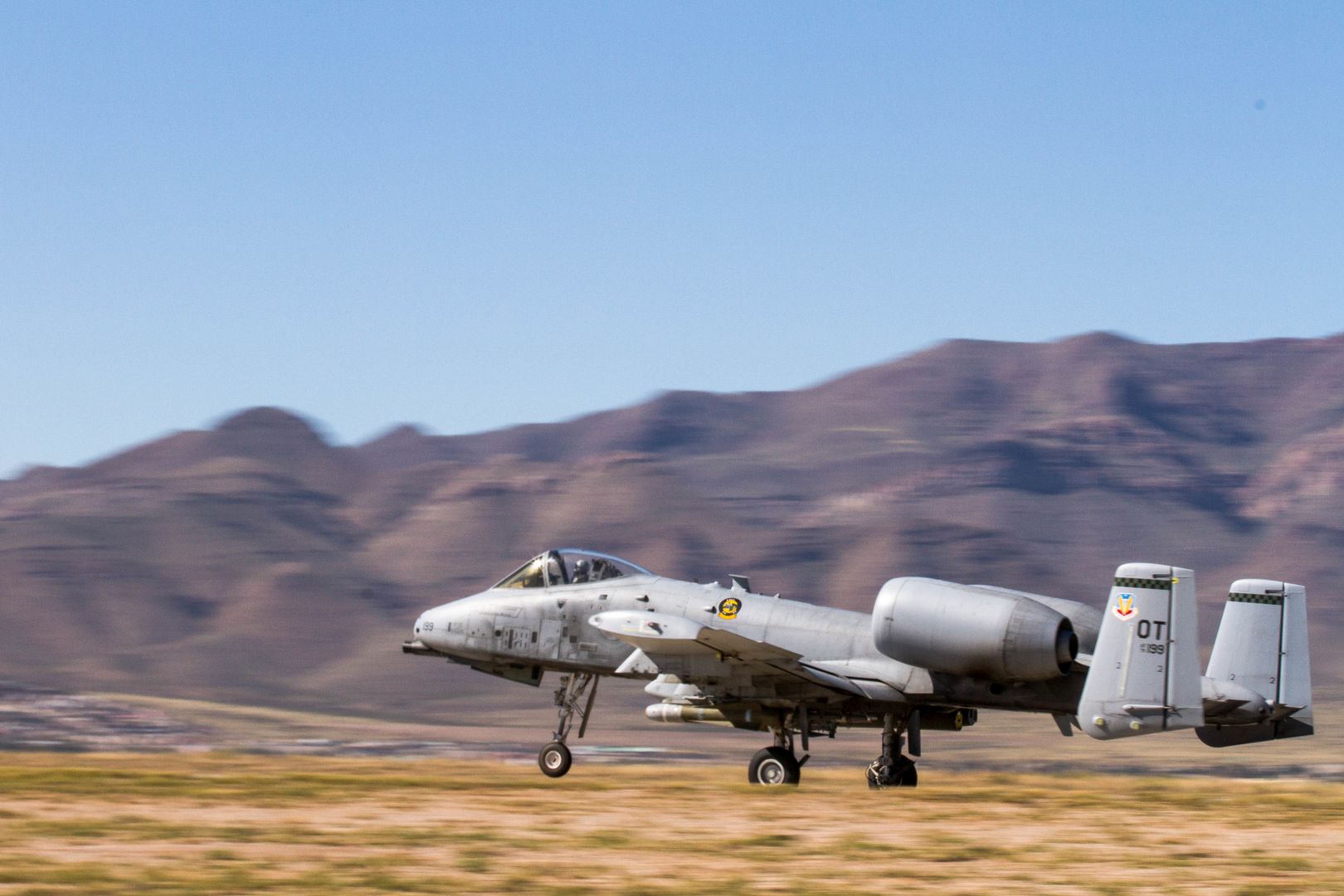
Senior Airman Dennis Franco, 67th Fighter Squadron Aircraft Maintenance Unit crew chief, performs a final check on an F-15 Eagle before turning it over to the next shift at Gwangju Air Base, Republic of Korea, Nov. 2, 2015. Airmen work around the clock to ensure the jets are ready to deploy at a moment?s notice to maintain combat readiness. (U.S. Air Force photo/Senior Airman Omari Bernard)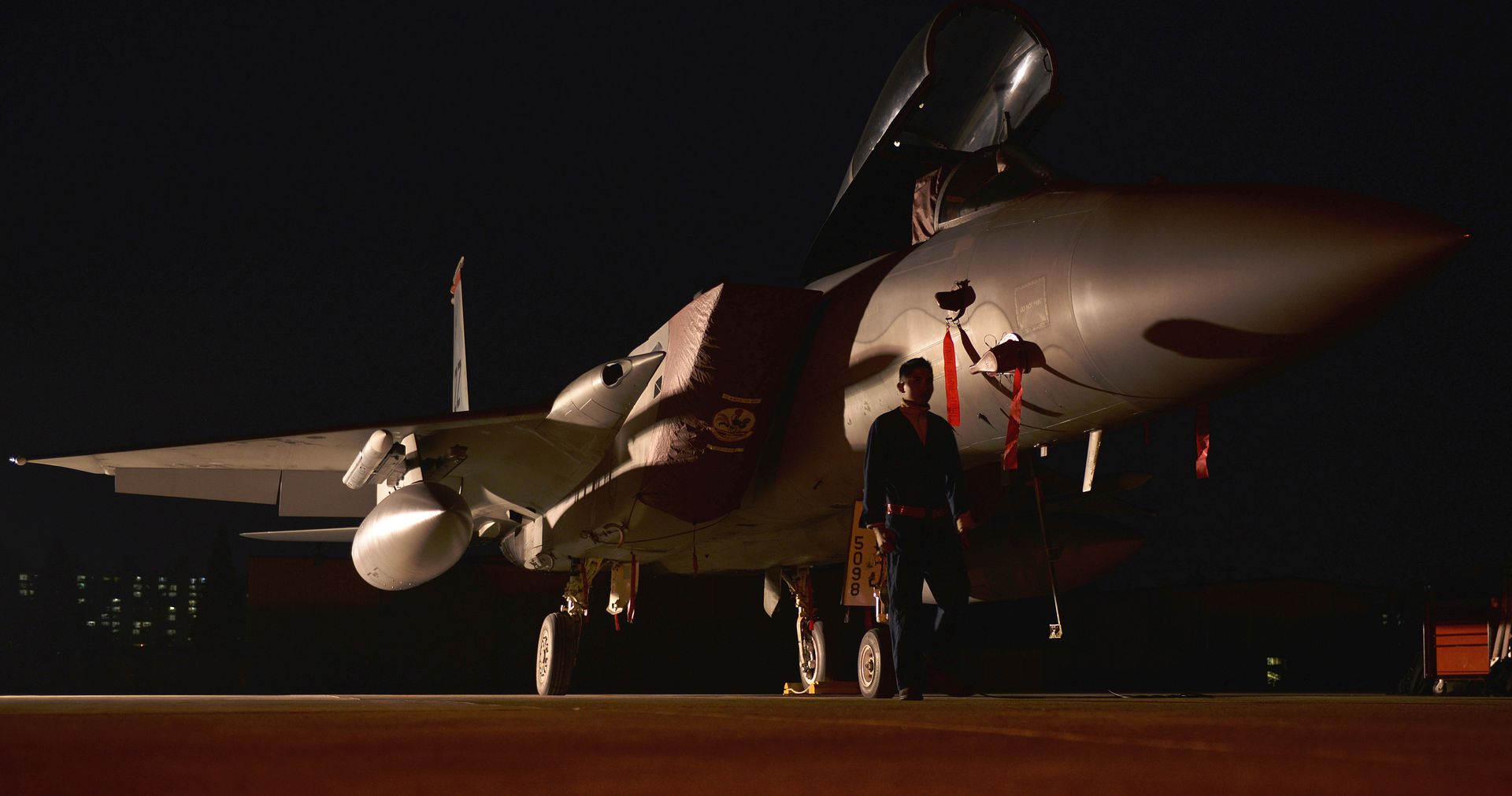
-
10 years agoWed Nov 04 2015, 05:40pm
 Main AdminOn 2 November 2015, the eighth C-17A Globemaster III transport aircraft for the Royal Australian Air Force touched down at its home of RAAF Base Amberley, completing its delivery flight from the United States. This aircraft, A41-212, is part of a two aircraft purchase that was announced by the Federal Government in 2015.
Main AdminOn 2 November 2015, the eighth C-17A Globemaster III transport aircraft for the Royal Australian Air Force touched down at its home of RAAF Base Amberley, completing its delivery flight from the United States. This aircraft, A41-212, is part of a two aircraft purchase that was announced by the Federal Government in 2015.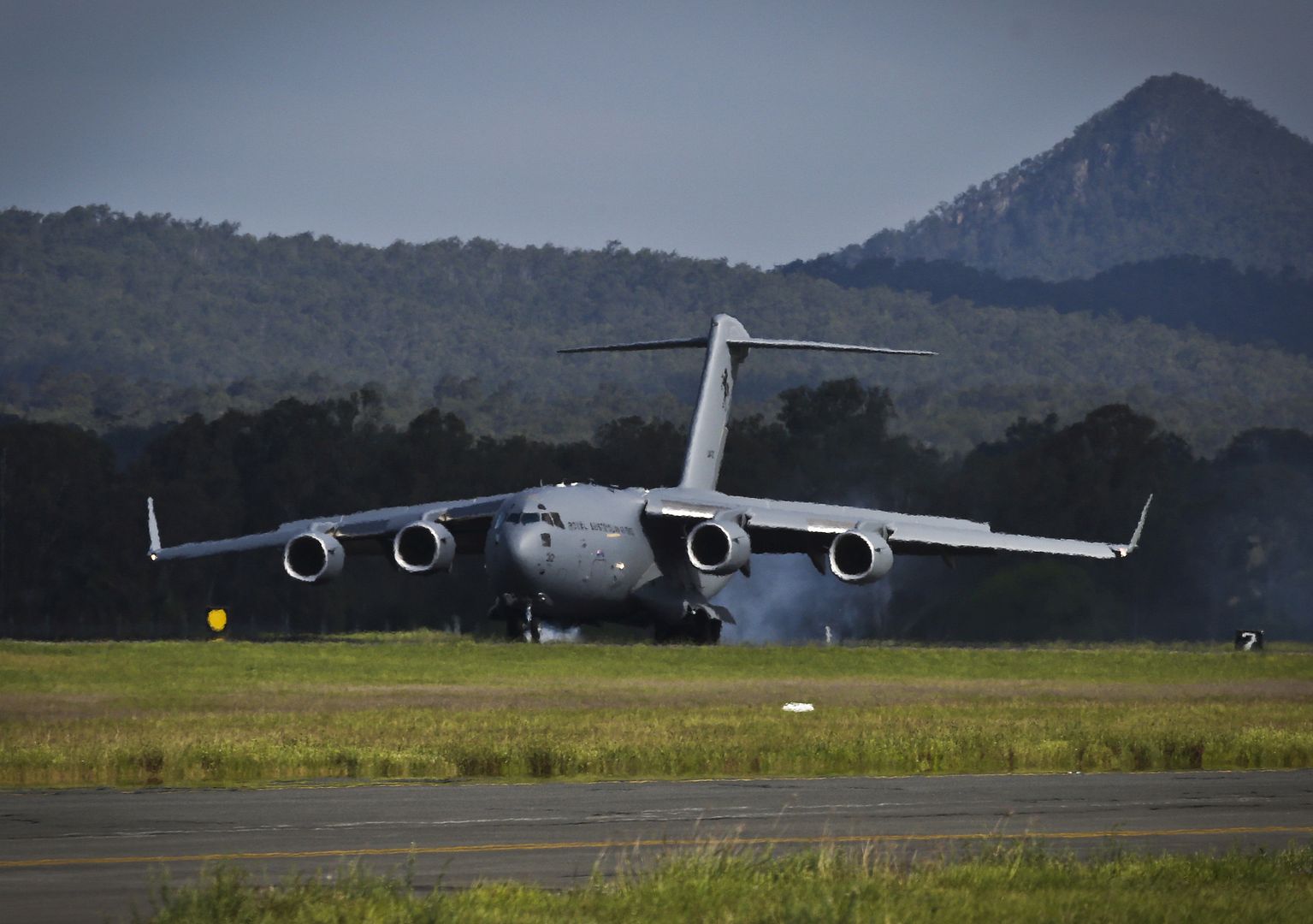
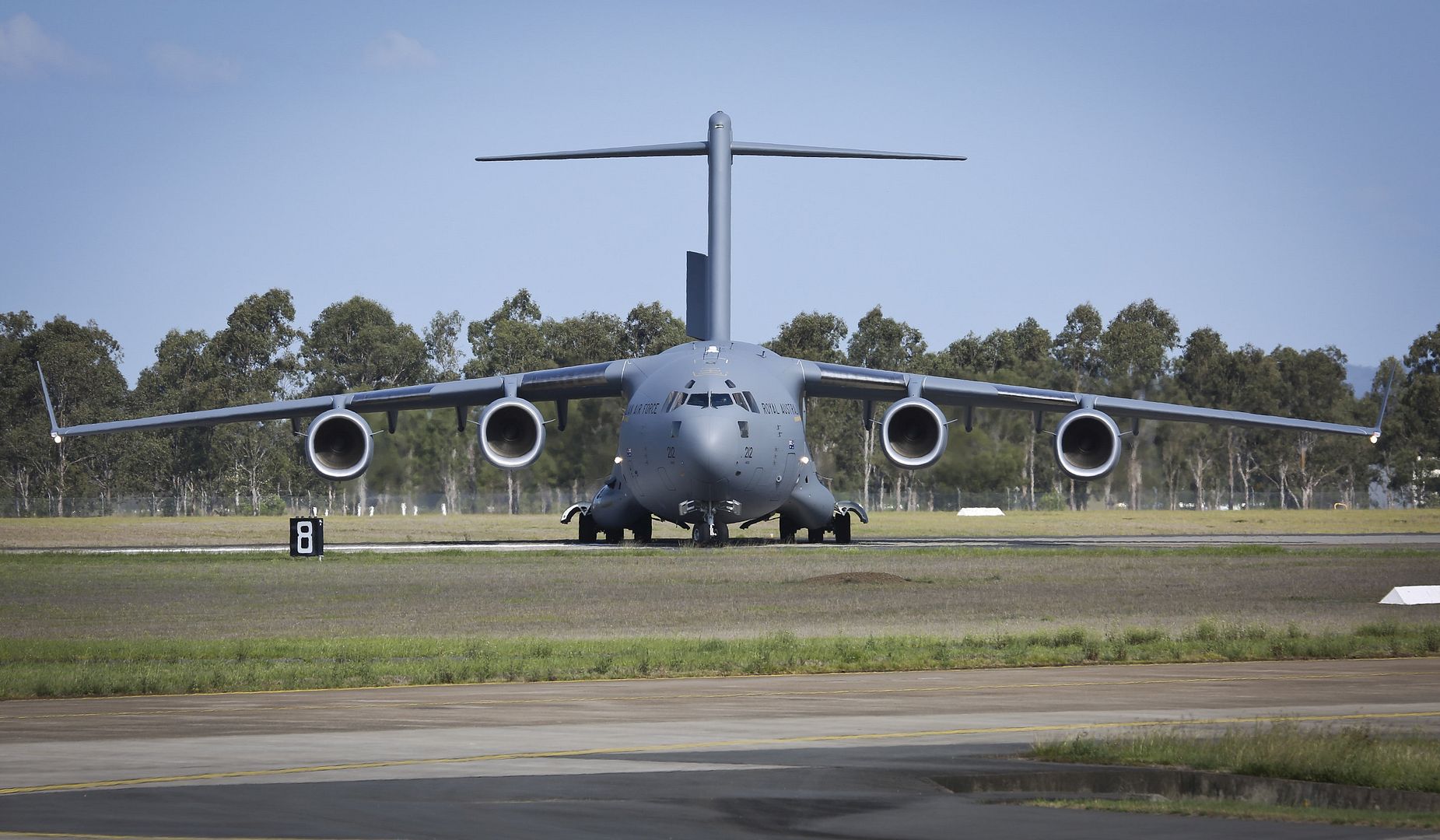
A C-130 Hercules from Yokota Air Base, Japan, taxis the runway Nov. 3, 2015, at Osan Air Base, Republic of Korea. Airmen assigned to the 731st Air Mobility Squadron performed an engine running offload as part of the readiness exercise Vigilant Ace 16. Vigilant Ace 16 is a large-scale exercise designed to enhance combat capabilities and interoperability of the U.S. and Republic of Korea Air Forces. (U.S. Air Force photo/Staff Sgt. Benjamin Sutton)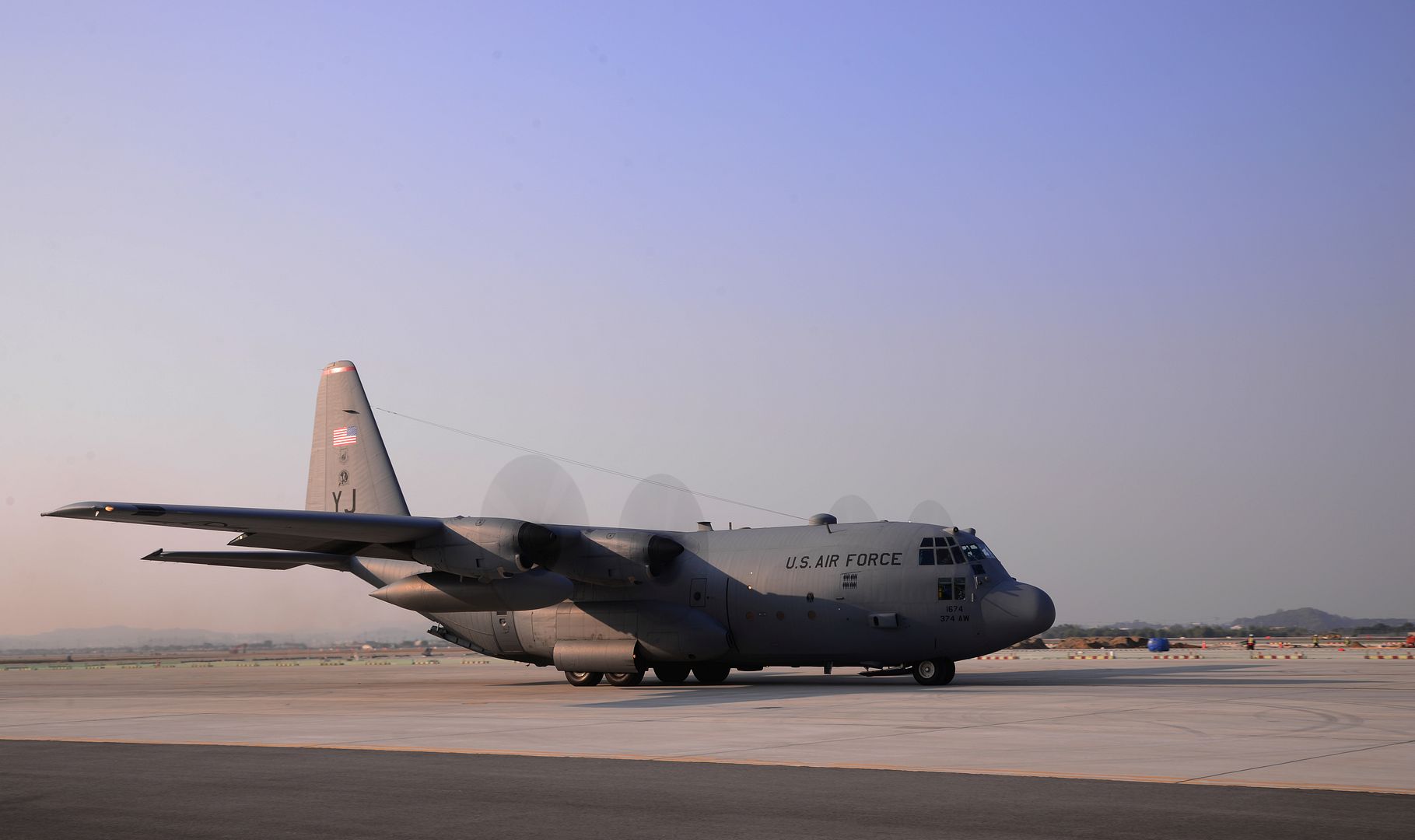
Airbus Defence and Space has successfully completed certification testing of the A400M new generation airlifter on a grass runway. The tests using the development aircraft MSN2 took place over a three week period at the airfield of ?cury-sur-Coole in France in September and examined the aircraft?s behaviour on grass and natural soil runways. The A400M demonstrated excellent performance both in taxying manoeuvres, such as U-turns, and during take-off and landing on the 1,500m strip. These tests followed earlier successful results on the gravel surface at Ablitas in Spain and will be followed by tests on sand surfaces next year. The photo shows MSN2 landing on the grass runway.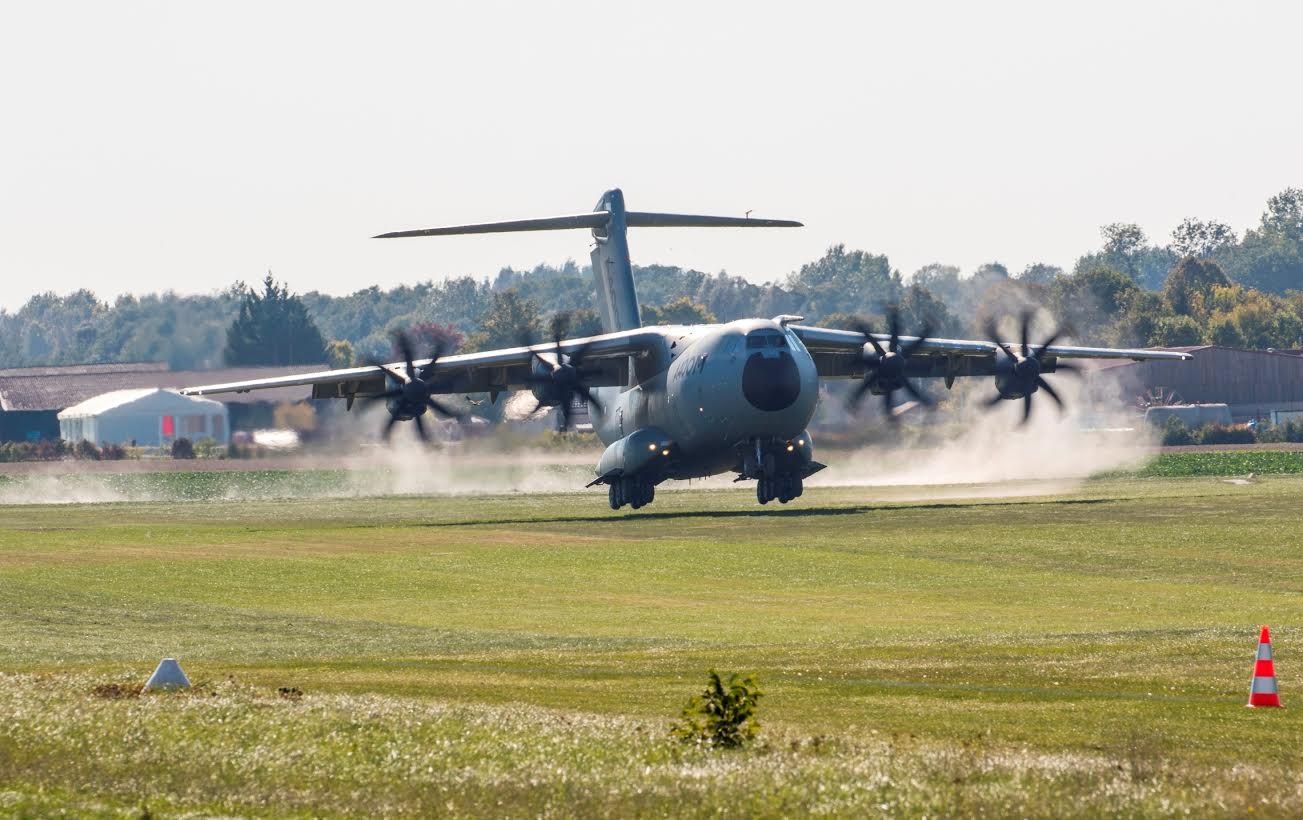
-
10 years agoThu Nov 05 2015, 04:36pm
 Main Admin05 November 2015
Main Admin05 November 2015
Royal Air Force squadrons have been participating in the largest NATO exercise since 2002.
They formed part of the 36,000 military personnel and 140 aircraft working together on Exercise Trident Juncture 2015 in Spain, Italy and Portugal.
In a demonstration to NATO allies that the UK takes its collective defence obligations seriously, the RAF committed two squadrons of fast jets supported by airborne early warning and tanker aircraft to the exercise, developing joint and combined warfare skills with NATO allies and partner nations.
Squadron Leader Stu Lawson is the chief planner for all the exercise air activity in Spain. He said:
?This has been NATOs largest live exercise in over a decade. A year in the planning, bringing all the components together, integrating them and deconflicting with other aircraft to safely deliver large scale combined air operations has been a constant challenge. Personally it?s been a great deal of responsibility but fascinating to see a plan all come together.?
The majority of fast jets were based at Albacete, Spain which became temporary home to 1(F) Squadron and 31 Squadron for the duration of the three week exercise. Over the course of Trident Juncture 3000 flying sorties were planned, 1200 in Spain alone where 120 aircraft were spread over seven air bases.
Flying up to 18 training missions a day, RAF fast jet crews flew day and night in a range of scenarios varying from leading offensive strike packages of 40 aircraft, to night combat search and rescue supported by US Air Force CV-22 Osprey tiltrotors.
Sqn Ldr Lawson:
?The two RAF squadrons at Albacete have also successfully completed mixed pairs close air support missions on the nearby Chinchilla range, working in support of the UK 4th Armoured Brigade, a unique opportunity to practise fighting together across aircraft types.
?This has all been supported by sterling work from a pair of E-3D Sentries from 8 Sqn and a Voyager tanker from 10/101 Sqn based at Torrejon near Madrid. In summary, Ex Trident Juncture has been a unique training opportunity for the RAF. The UK has been a leading nation in an awesome display of NATO alliance air power.?
For Officer Commanding 31 Squadron, the involvement of Tornado Force in the exercise was of real benefit. He said:
?This has been a tremendously successful exercise for 31 Squadron, it?s given us the opportunity to allow our air crew to train in different roles to which they normally train for Op Shader and before that Op Herrick. It?s been a refreshing change and has enabled us to train in the larger and more complex GR4 operations.
?The young aircrew on the squadron, who have been on the Tornado Force for three years, are unlikely to have seen this before even though they may have done a number of operational tours. They are benefitting immensely because they?re seeing a different aspect of operating the Tornado which is really beneficial to the Force and the RAF.
?From the perspective of the whole squadron this has been a very positive experience. At least half of the squadron have not experienced a detachment where you go away as a team where you don?t have the operational pressures. Whilst it is more time away from home we?ve all learned positive lessons and forged new relationships with our allies and further improved the relationship with our RAF colleagues.?
?This exercise is all about interoperability between a number of different countries. We?ve flown missions across the Mediterranean Sea, the Iberian Peninsula and into Portugal, working with fast jets from Italy, Spain, Portugal, Turkey and France as well as RAF Tornados.
?Working with these different NATO countries means we?re learning how to operate and integrate effectively together. This means that in future, should we need to at short notice, we can operate effectively as a coalition in a contested challenging environment.
?Trident Juncture has been hugely beneficial to the squadron. We?re on high readiness for the UK as an attack aircraft platform. To maintain our swing role skills we need constant training and being able to operate over here and do a number of demanding and different sorties is of vital importance to us.?
The training benefit for both RAF squadrons at Albacete was not limited to joint operations with other nations but also working together as OC 31 Squadron explained:
?Being co-located for three weeks with Typhoons has been a highlight. We?re been able to fly mixed formations and have all learned lessons, it?s been really positive. We?ve never worked so closely together and we will undoubtedly reap the benefits in future.?
His view was echoed by OC 1(F) Sqn who said:
?We?ve done some mixed formation work, Typhoons and Tornados working together. Typhoon protected Tornado on the way into a target and then both platforms simulated dropping Paveway IV precision bombs. The Typhoons then switched back to the air-air role to fight their way out.
?We?ve learned a great deal from each other which has been extremely valuable. We last did this over a consolidated period on Op Ellamy in 2011 and for the youngsters on the Typhoon Force who haven?t worked with Tornado before it?s been really beneficial.?
The exercise concludes 6 November.
Editor: Wg Cdr Eklund
Photograph: SAC Robyn Stewart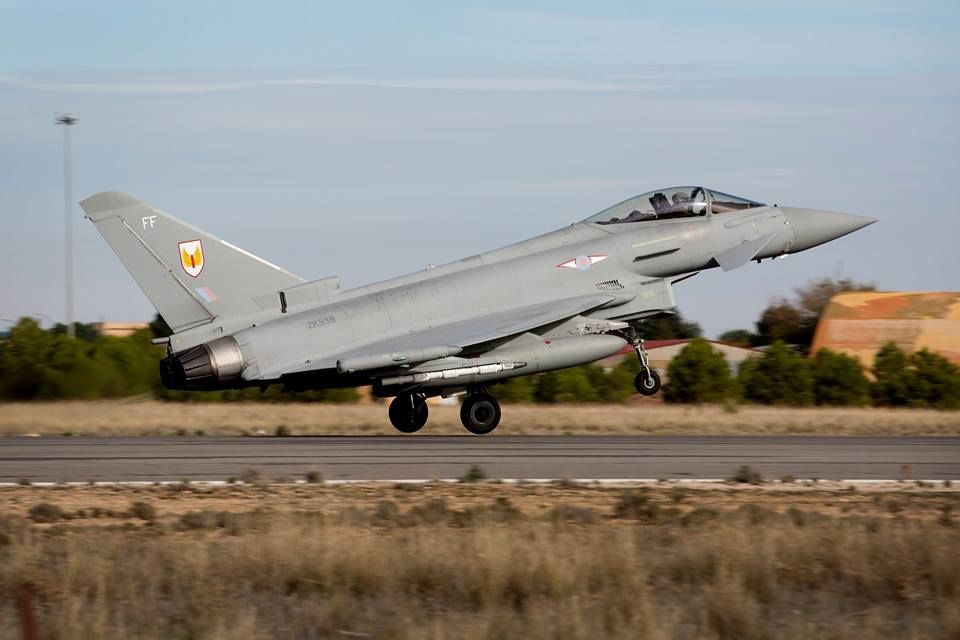
ARNOLD AIR FORCE BASE, Tenn. (AFNS) -- The full hot-life capability of Pratt & Whitney's F135 engine, which is used in the F-35 Lightning II, was successfully demonstrated during accelerated mission testing at the Arnold Engineering Development Center.
Sponsored by the Air Force Engine Component Improvement Program office, the test focused mainly on the conventional takeoff and landing engine variant that powers the Air Force?s F-35A model. CTOL development represents a key milestone of the F135 program.
"Due to the component commonality across all three F-35 variant engines, the lessons learned will save costs for the entire fleet, including the (other) services and the non-U.S. participating countries,? said Michael Astahoff, the chief of the CIP branch for the Air Force.
The engine achieved 5,210 total accumulated cycles or more than seven years of operation in 235 days of testing. This is equivalent to approximately 1,200 F-35 missions.
Accelerated mission testing is performed to evaluate reliability and maintainability performance of the engine over its life span. The testing is also used to identify potential issues before they are encountered by the operational fleet. During an AMT, engines accumulate hours under monitored conditions and accrue hours at a faster rate than when operating in the aircraft.
John Kelly, the deputy for operations of the Aeropropulsion Combined Test Force at AEDC, said that on average, 55 total accumulated cycles were achieved in a single day of testing, with the maximum number of 101 TACs in a day.
"That amounts to about 30 sorties in the field," he said.
Advanced data from the test program has led to improvement opportunities aimed at determining the life cycle cost expectations for the entire F135 CTOL powered F-35 fleet.
In all, the F135 program has tested over 5,510 hours in five different test cells at AEDC.
SEATTLE, Nov. 5, 2015 /PRNewswire/ -- Boeing [NYSE: BA] and Korean Air today finalized the airline's order of 30 737 MAXs and two additional 777-300ER (Extended Range) jetliners valued at nearly $4 billion at current list prices. The airline also has options for additional 737 MAXs as part of the order, which was previously announced as a commitment during the Paris Air Show in June.
With this order for up to 52 Boeing airplanes, Korean Air becomes Boeing's newest 737 MAX customer and now has 62 firm Boeing airplane orders on backlog.
"Korean Air is a valued Boeing customer and today's order is the culmination of our longstanding partnership that spans over four decades," said Boeing Commercial Airplanes President and CEO Ray Conner. "Korean Air has been a pioneer in Asia's commercial aviation industry and today, we are truly honored to welcome Korean into the new 737 MAX family. I am confident these new airplanes will play an important role in Korean Air's fleet modernization program for many years to come."
As part of this order for 737 MAX airplanes, Korean Air also adds another two 777-300ERs as it continues to modernize its long-haul widebody fleet.
Korean Air currently operates a fleet of 91 Boeing passenger airplanes that consist of 737, 747 and 777 models. The airline also operates an all-Boeing cargo fleet of 28 747-400, 747-8 and 777 Freighters.
Korean Air's Aerospace Division is a key Boeing partner on both the 747-8 and 787 programs, supplying the distinctive raked wing-tips for each model. They are also one of two suppliers producing the new 737 MAX Advanced Technology (AT) Winglet.
The 737 MAX incorporates the latest technology CFM International LEAP-1B engines, Advanced Technology winglets and other improvements to deliver the highest efficiency, reliability and passenger comfort in the single-aisle market. Beginning in 2017, the new single-aisle airplane will deliver 20 percent lower fuel use than the first Next-Generation 737s and the lowest operating costs in its class ? 8 percent per seat less than its nearest competitor. With broad market acceptance, the 737 MAX has 2,929 orders from 60 customers worldwide.
The 777-300ER is one of the most fuel and cost-efficient airplanes in its class as well as the most reliable twin-aisle aircraft in the world. It also has the highest cargo capability of any passenger airplane in service. The 777-300ER will receive further improvements in 2016 designed to reduce fuel use by 2 percent. The flagship of the world's elite airlines, the 777-300ER carries 396 passengers in a standard two-class configuration up to 7,370 nautical miles (13,650 kilometers), on non-stop routes. Korean Air has configured its 777-300ER with a seating capacity of 277 passengers in a three-class configuration.
Korean Air, with a fleet of 166 aircraft, is one of the world's top 20 airlines, and operates more than 430 flights per day to 128 cities in 45 countries. It is a founding member of the SkyTeam alliance, which together with its 20 members, offers its 612 million annual passengers a worldwide system of more than 16,000 daily flights covering 1,052 destinations in 177 countries.
Airmen assigned to the 36th Aircraft Maintenance Unit perform final checks on an F-16 Fighting Falcon assigned to the 36th Fighter Squadron Nov. 4, 2015, at Osan Air Base, Republic of Korea. The Fiends are one of more than eight squadrons participating in Vigilant Ace 16. Vigilant Ace 16 is a large-scale exercise designed to enhance combat capabilities and interoperability of the U.S. and Republic of Korea Air Forces. (U.S. Air Force photo/Staff Sgt. Benjamin Sutton)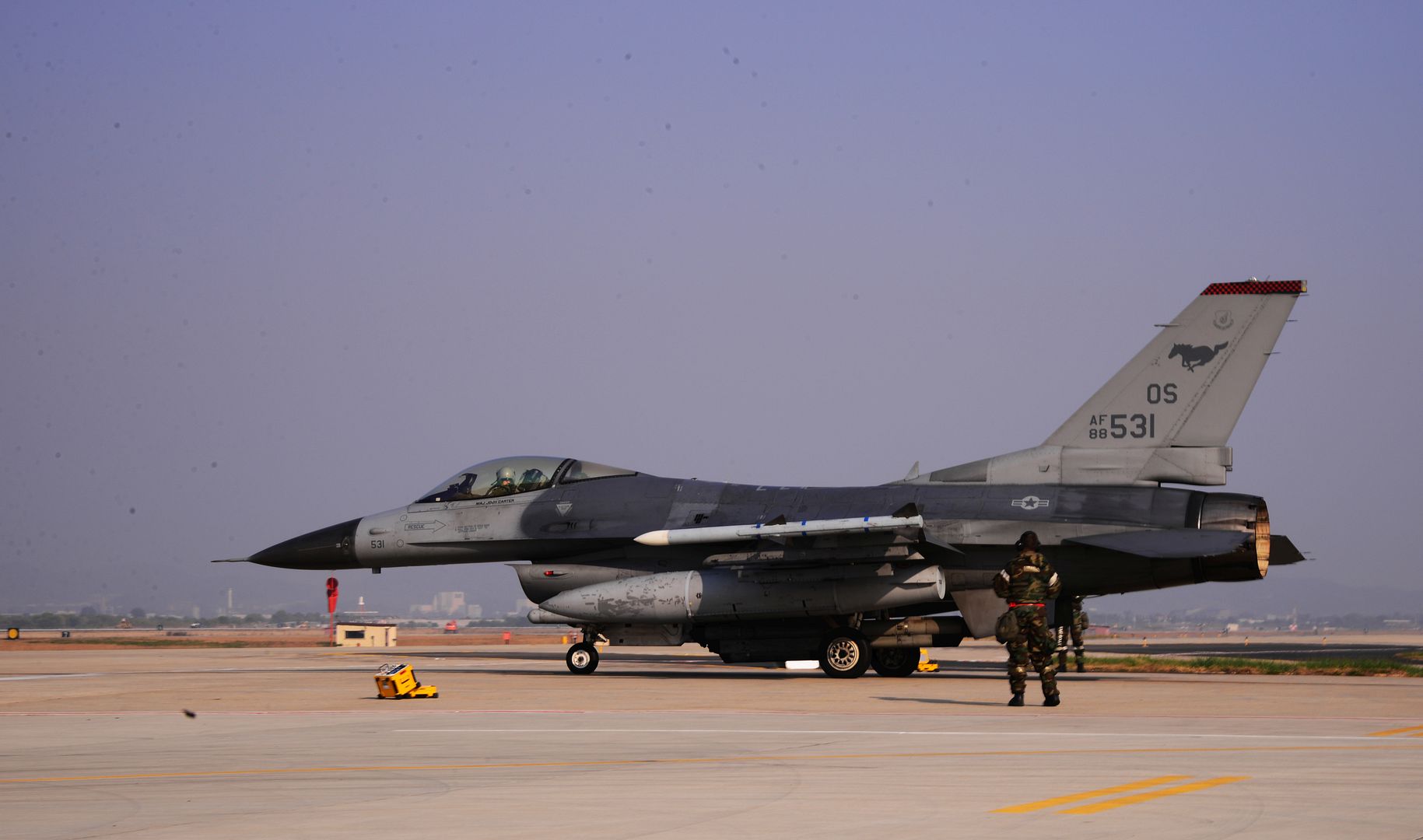
YOKOSUKA, Japan (Nov. 4, 2015) An MH-60S Seahawk helicopter, attached to the ?Golden Falcons? of Helicopter Sea Combat Squadron (HSC) 12, lands at Commander Fleet Activities Yokosuka during a fast-rope exercise with Marines assigned to Fleet Anti-Terrorism Security Team Pacific (FASTPAC). FASTPAC companies maintain forward-deployed platoons at Navy installations around the world to provide crisis response capabilities and anti-terrorism and weapons training to security personnel. (U.S. Navy photo by Mass Communication Specialist 2nd Class Kevin V. Cunningham/Released)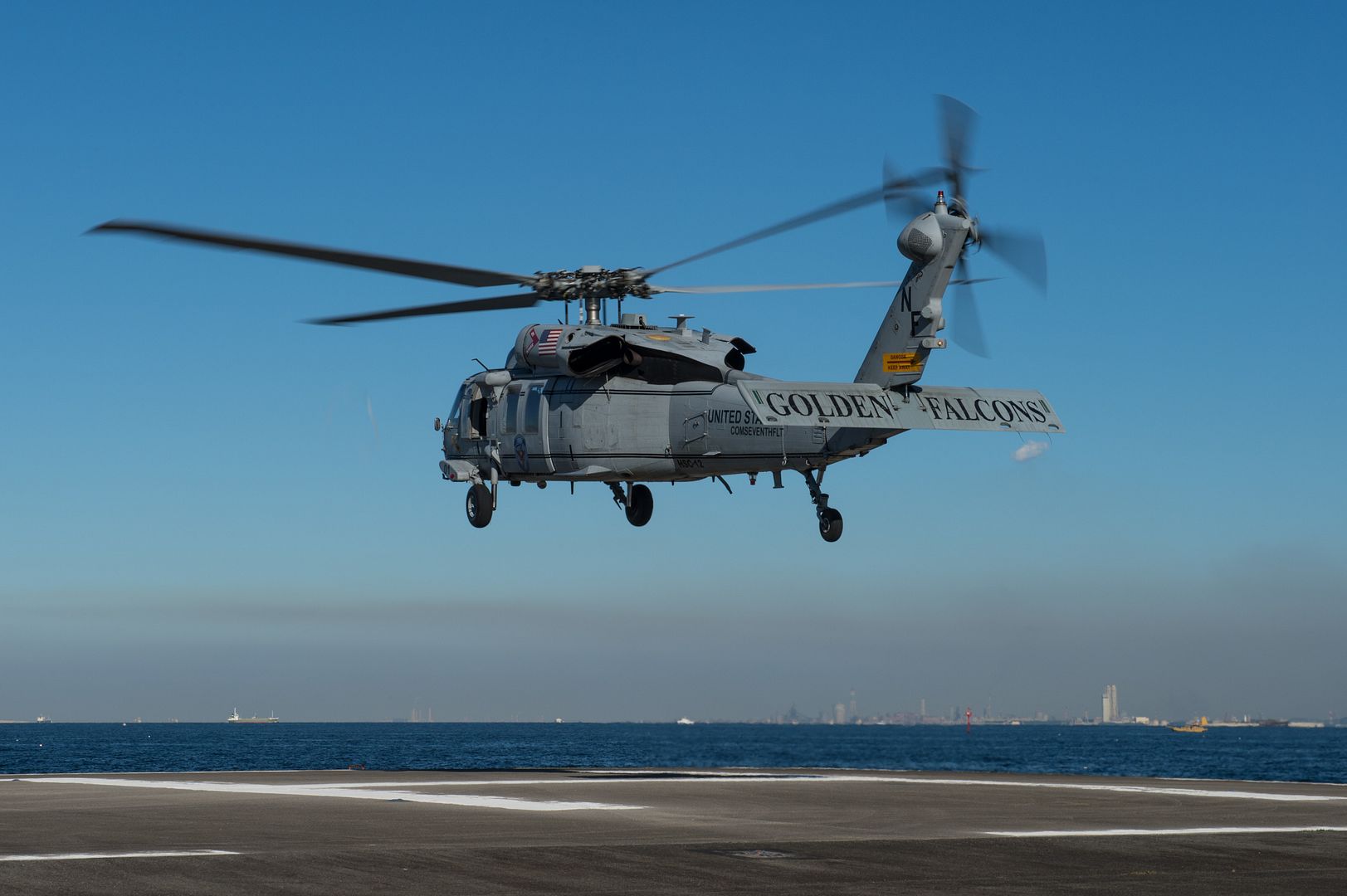
RAF Museum Cosford's VC10 finally complete after months of work.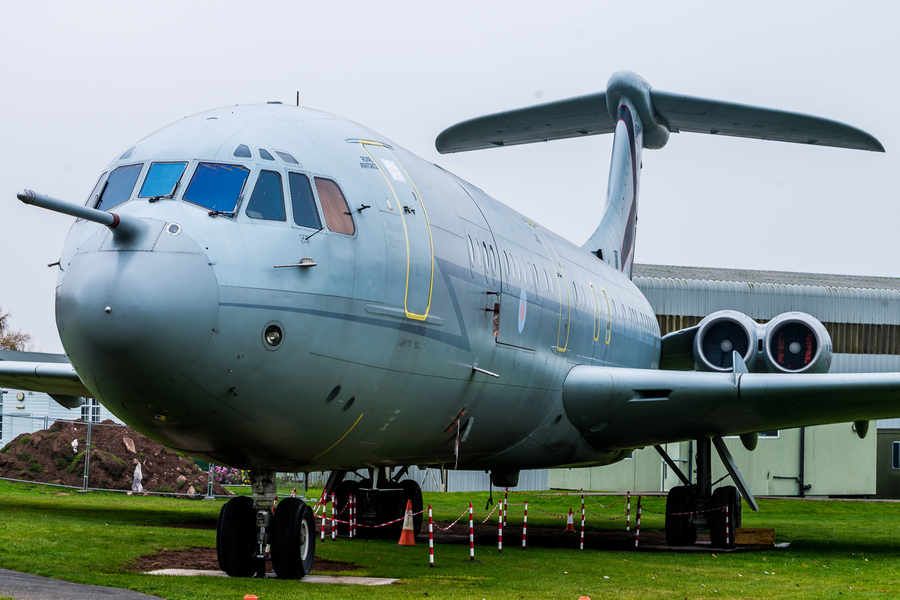
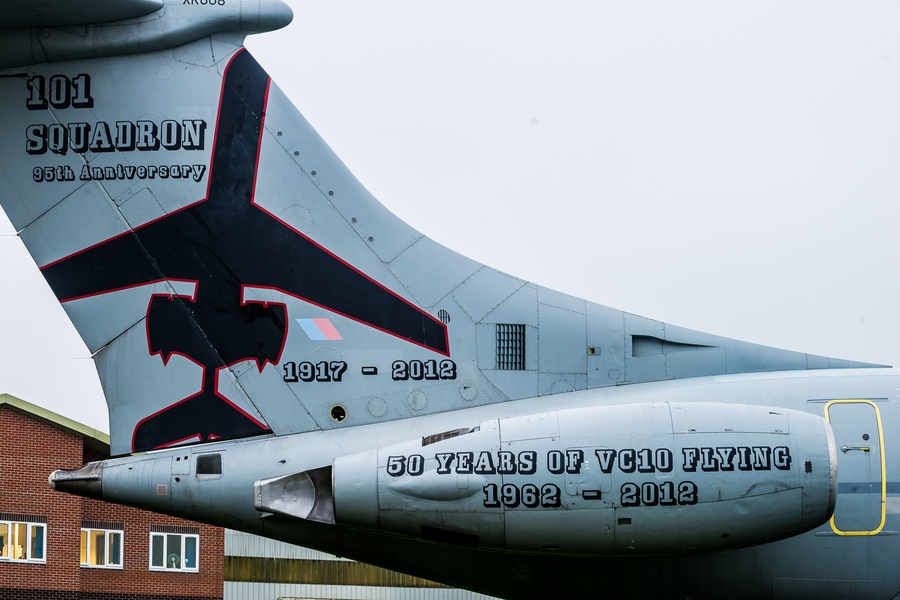
-
10 years agoFri Nov 06 2015, 07:15pm
 Main Admin27 Squadron at RAF Odiham have unveiled a Chinook with stunning Centenary Tail Art.
Main Admin27 Squadron at RAF Odiham have unveiled a Chinook with stunning Centenary Tail Art.
Formed at Hounslow on 5 November 1915, 27 Squadron became the first squadron to be fully equipped with the Martinsyde G100 'Elephant'.
Since then the Sqn has flown the Airco DH4, Airco DH9A, Westland Wapitis', de Havilland Tiger Moth and Hawker Hart biplanes, Bristol Blenheims, Bristol Beaufighters, de Havilland Mosquitoes, Douglas Dakotas, Canberras, the Avro Vulcan B2 V Bomber and the Tornado GR1.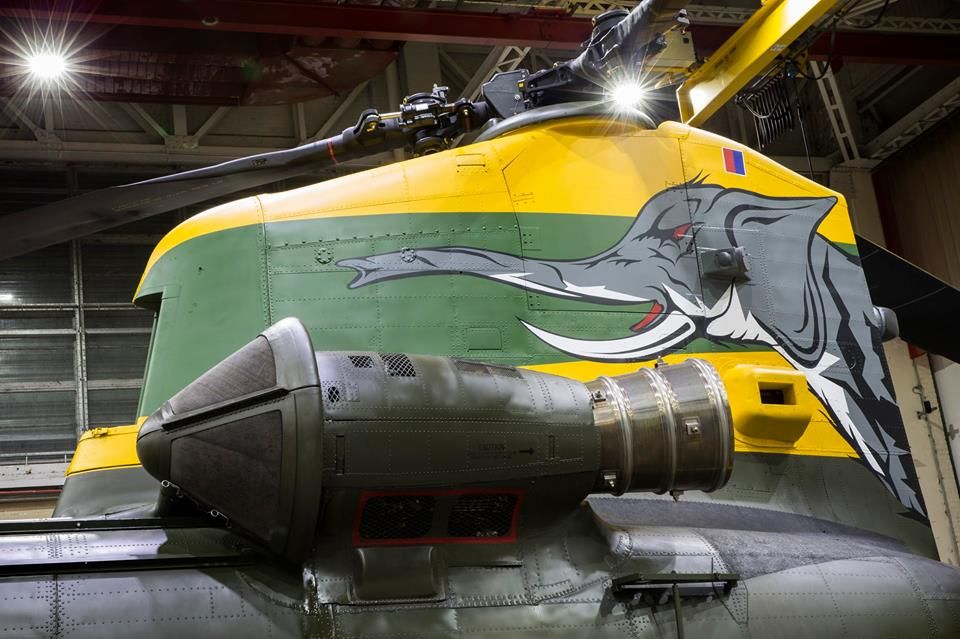
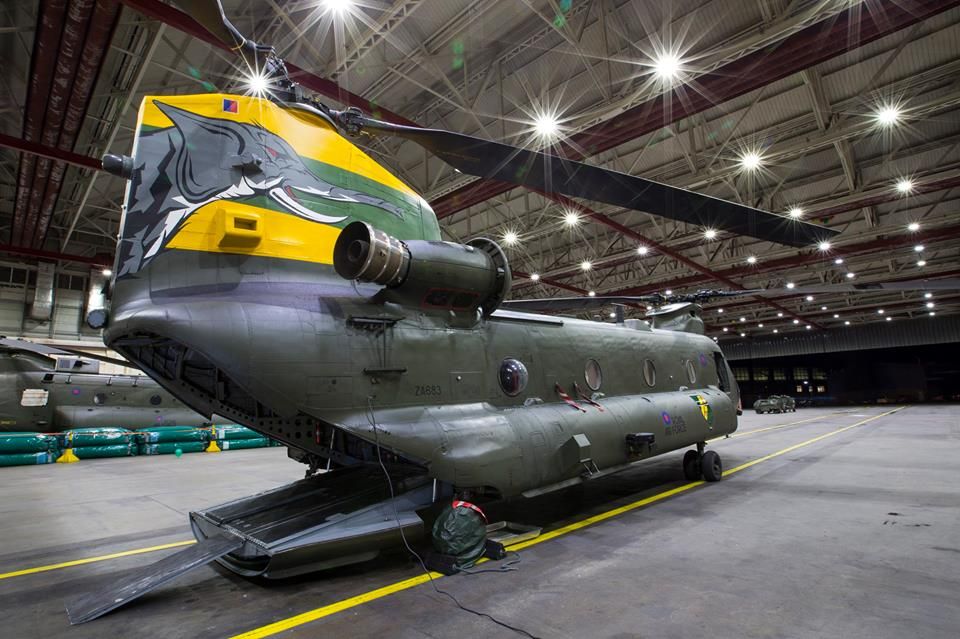
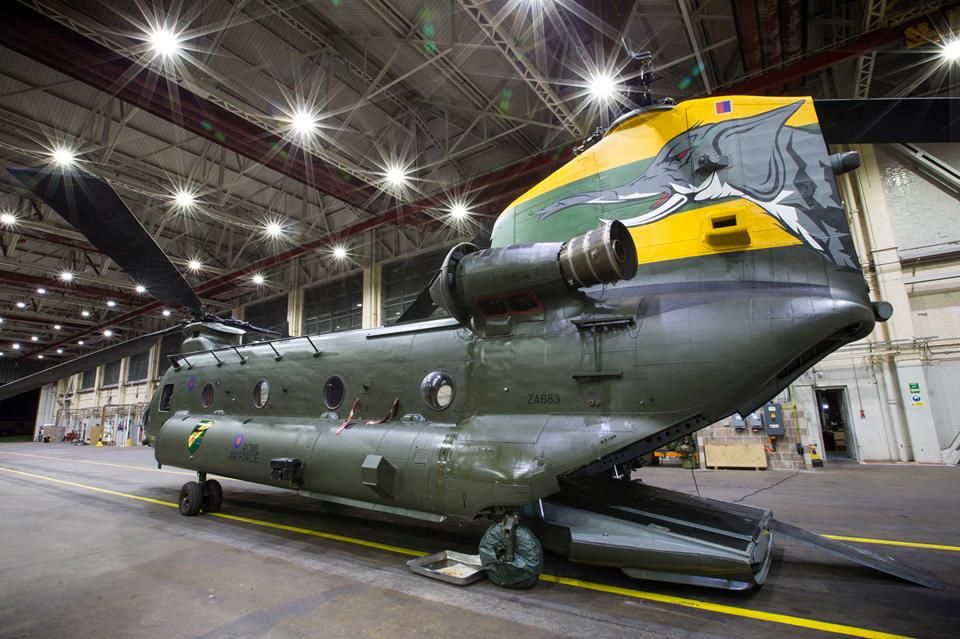
U.S. Air Force F-15C Eagles depart RAF Lakenheath to support the combat air patrol mission in Turkey, Nov. 6, 2015. The six F-15Cs from the 48th Fighter Wing deployed to Incirlik in response to the Government of Turkey's request for support in securing the sovereignty of Turkish airspace. As an air-to-air fighter aircraft, the F-15C specializes in gaining and maintaining air superiority. (U.S. Air Force photo's by Airman 1st Class Erin R. Babis/Released)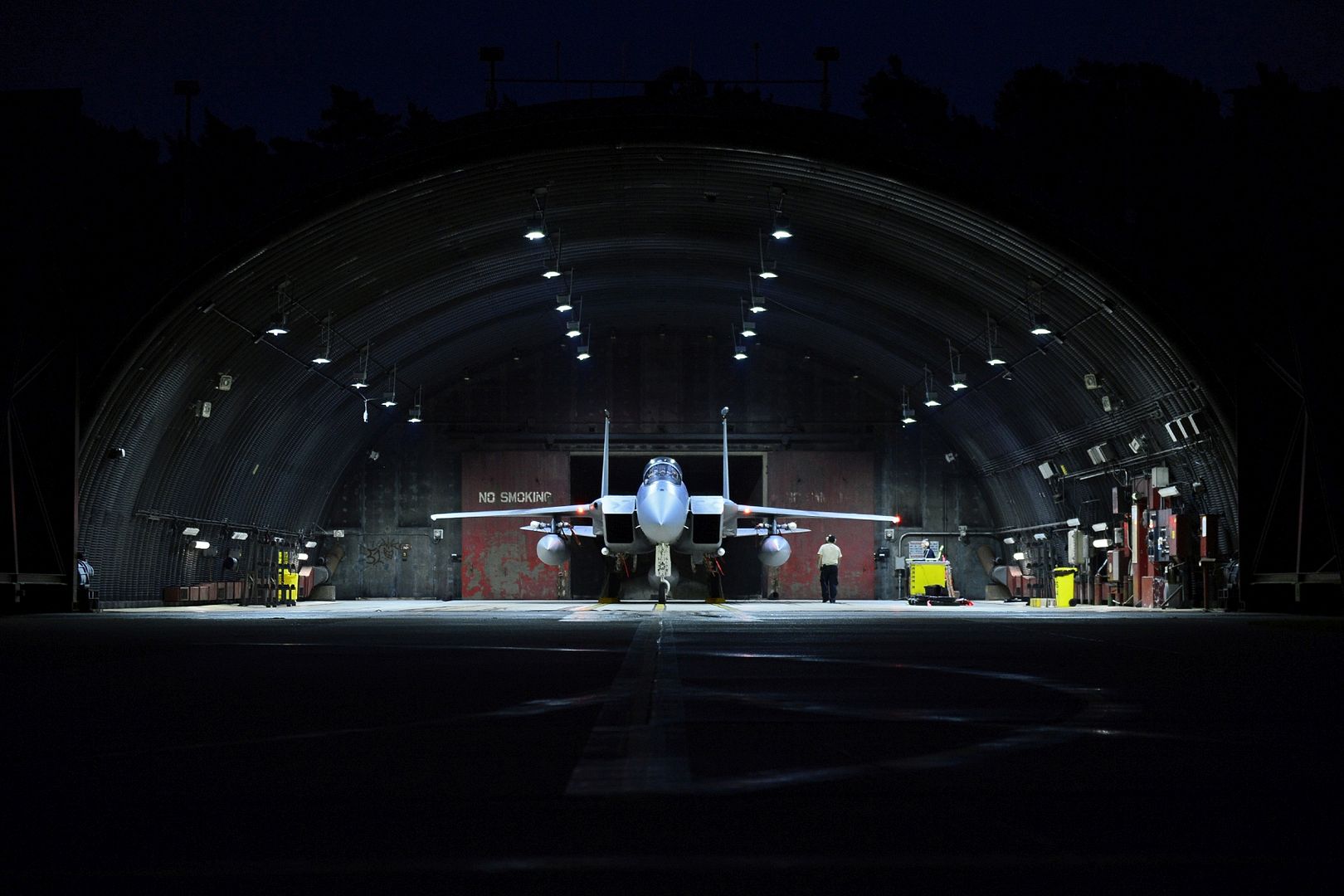
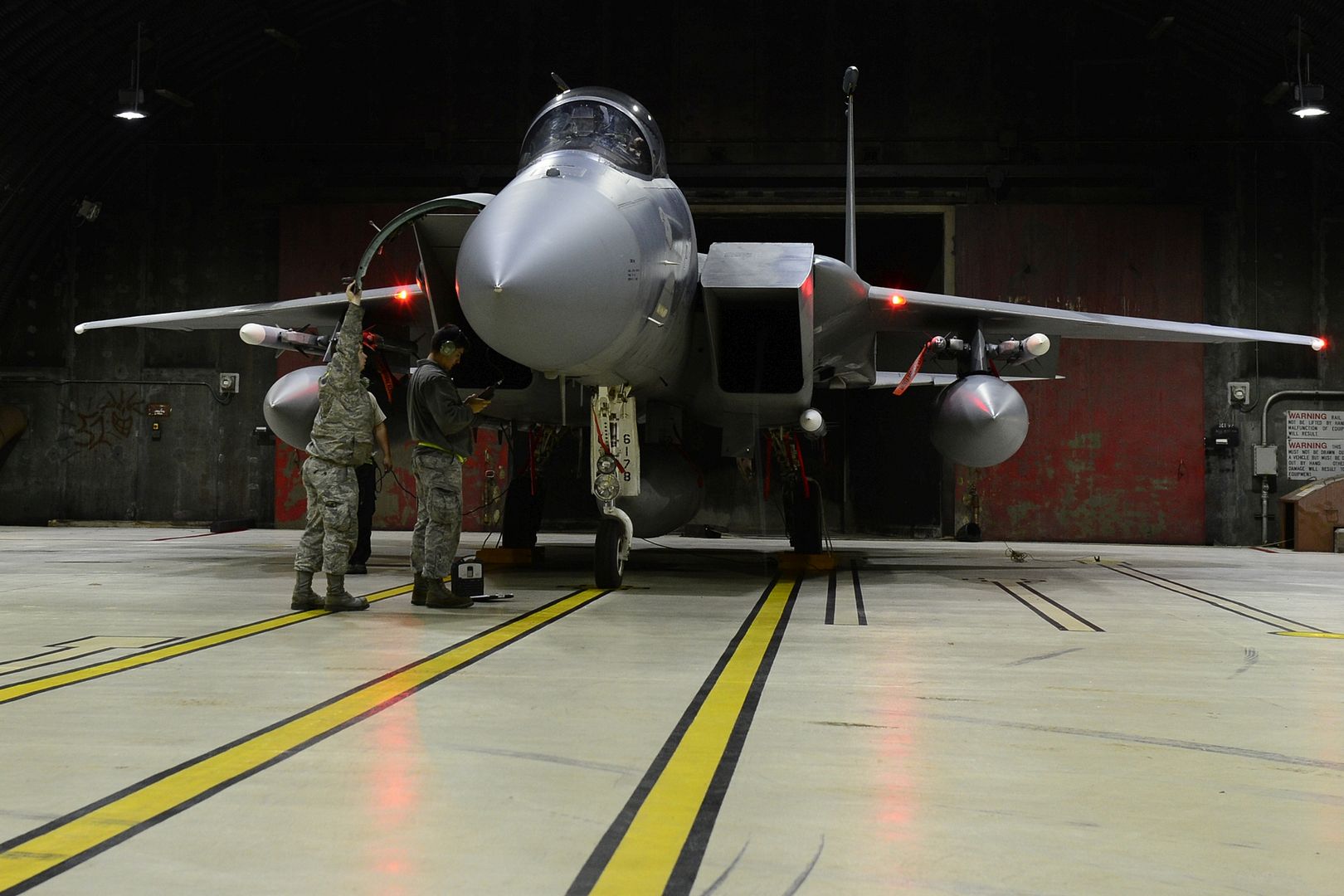
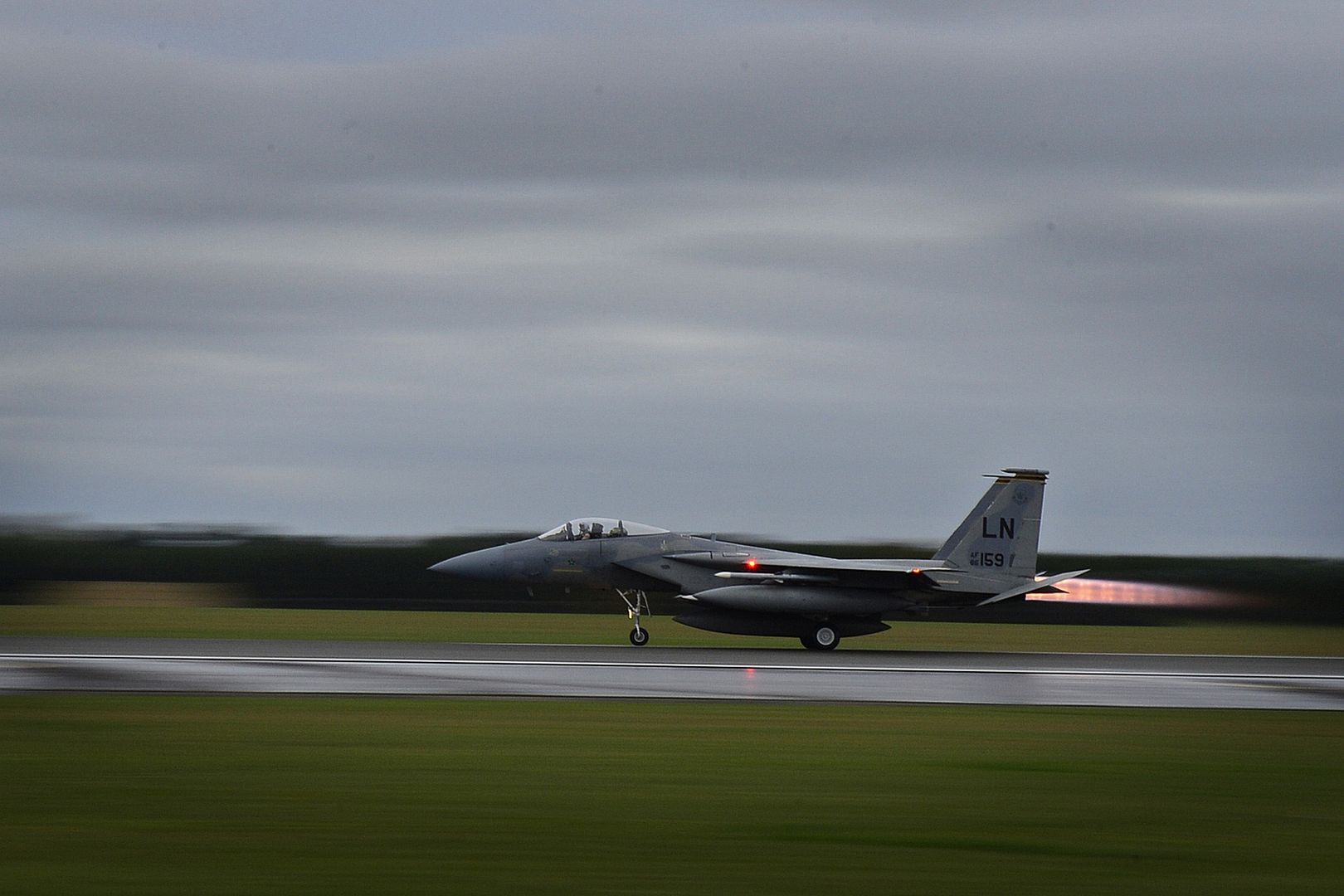
A pair of AH-64 Apache helicopters provide firepower and overwatch for ground troops during Trident Juncture 2015 Joint Land Force Heavy Military Demonstration being performed by 12 member-state militaries on the San Gregorio military training area, Zaragoza, Spain, Nov. 4, 2015. (U.S. Army Photo by Visual Information Specialist Martin Greeson, Released)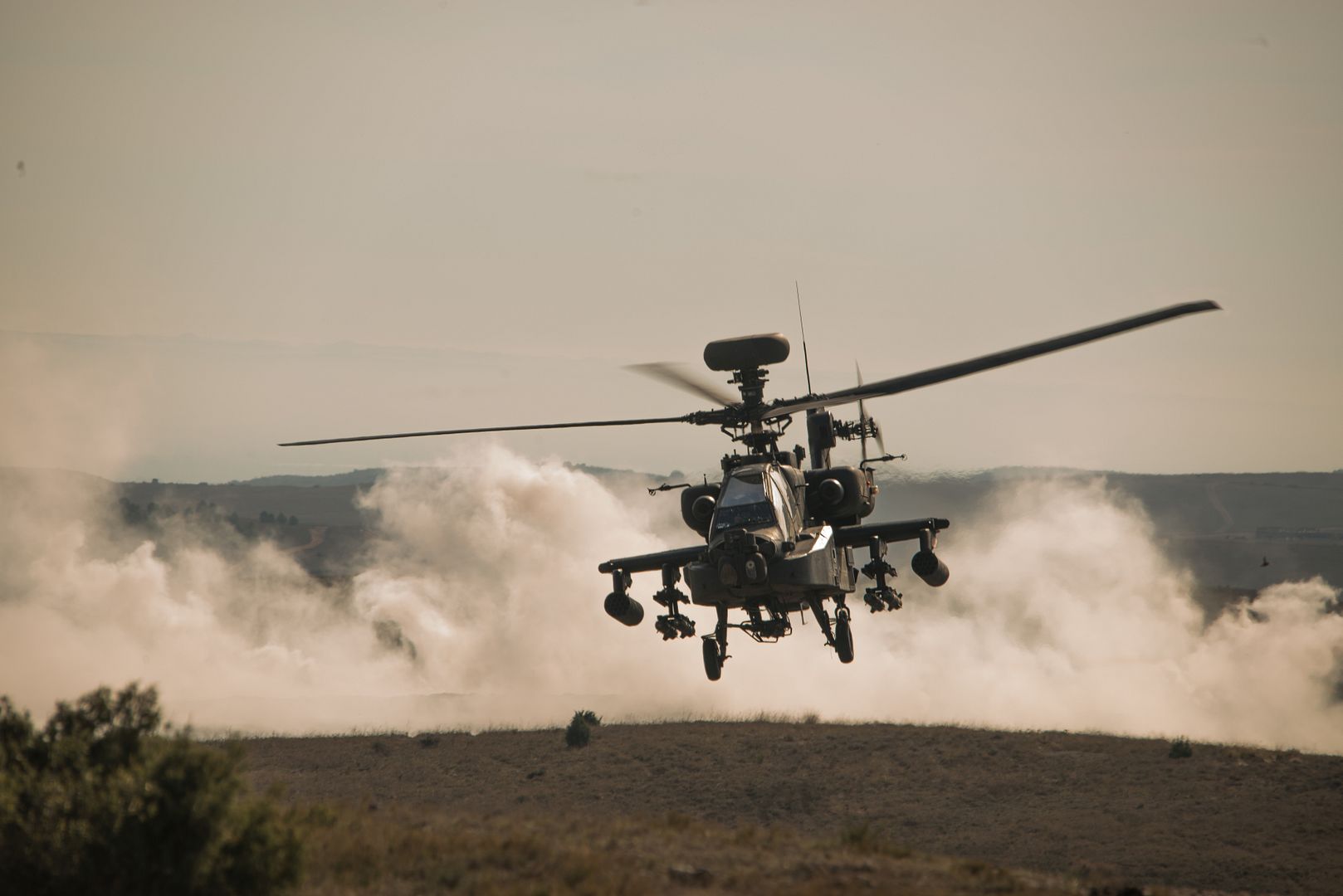
-
10 years ago
 Main AdminWhat an awsome video, watch in full screen
Main AdminWhat an awsome video, watch in full screen
Post a reply
- Go to Previous topic
- Go to Next topic
- Go to Welcome
- Go to Introduce Yourself
- Go to General Discussion
- Go to Screenshots, Images and Videos
- Go to Off topic
- Go to Works in Progress
- Go to Skinning Tips / Tutorials
- Go to Skin Requests
- Go to IJAAF Library
- Go to Luftwaffe Library
- Go to RAF Library
- Go to USAAF / USN Library
- Go to Misc Library
- Go to The Ops Room
- Go to Made in Germany
- Go to Campaigns and Missions
- Go to Works in Progress
- Go to Juri's Air-Raid Shelter
- Go to Campaigns and Missions
- Go to Works in Progress
- Go to Skinpacks
- Go to External Projects Discussion
- Go to Books & Resources
